
Type above and press Enter to search. Press Esc to cancel.

How to Write a Business Plan for Opening a Cafe
- by Lightspeed
minute read

Think of your plan as a roadmap for your entrepreneurial adventure—one that’s easier to create than you might think! In this article, we’ll show you how to write a business plan that will set your cafe up for success.
How to write a business plan for opening a cafe
What is a cafe business plan, start with your vision, study other business plans, building your business plan template, section 1: the executive summary, section 2: how will your cafe business succeed, section 3: study your competition, section 4: analyze your target market, section 5: tell us what you’ll sell and how you’ll sell it, section 6: create a marketing plan, section 7: ownership structure, section 8: your operations plan.
- Section 9: Financial planning
Section 10: Plans for growth
Finally, we’ll end with an example business plan to show you what it looks like in action.
Streamline your cafe’s workflow with the right technology
Watch the free demo to see how Lightspeed’s restaurant POS can optimize and adapt to your cafe’s specific operations.
Want a quick summary of what to include in your cafe business plan? Consult this handy table.
| Executive summary | Provide a high-level overview of the entire business plan, highlighting the purpose, unique value proposition and key elements of the cafe business. |
| How will your cafe business succeed? | Address the unique selling points of the cafe, location strategy, menu offerings, marketing strategy, and operational efficiency to ensure success and competitiveness. |
| Study your competition | Conduct a competitive analysis to understand the landscape of similar food and beverage businesses, identifying strategies to differentiate and succeed in the market. |
| Analyze your target market | Analyze the target market segments, market size, and marketing plan to attract and retain customers effectively. |
| Tell us what you’ll sell and how you’ll sell it | Detail the menu offerings, pricing strategy, and creative approaches to maximize customer satisfaction and profitability. |
| Create a marketing plan | Develop a comprehensive marketing strategy, including digital and traditional channels, to build brand awareness, drive customer engagement, and foster loyalty. |
| Ownership structure | Outline the ownership structure of the cafe business, highlighting the experience, roles, responsibilities, and governance structure of the owners/partners. |
| Your operations plan | Define the operational workflows, staffing requirements, inventory management, and quality control measures to ensure efficient and effective day-to-day operations. |
| Financial planning | Present the financial projections, including startup costs, income statement, cash flow analysis, balance sheet, and break-even analysis, to assess viability and sustainability. |
| Planning for growth | Discuss potential avenues for expansion and scalability, including additional locations, diversified revenue streams, and strategic partnerships for future growth. |
At its core, a cafe or coffee shop business plan is a document that explains what your business idea is and how it will succeed. It answers questions like how much it costs to set up shop, how those costs will be funded and how much money you expect to make from your cafe. A coffee shop business plan includes information about your competitors, target market and pricing structure.
When it’s finished, your business plan can be shown to potential investors, bankers, partners and anybody else who will help you open your cafe. As you can probably tell, it’s an extremely important document, so it’s worth your time and effort to get it right. First, you’ll learn about all the different pieces of information that will go into your business plan and then we’ll help you pull the pieces together.
A business plan is the first step in making your cafe-ownership dream a reality, so take time to dream by laying out your vision for your future cafe or coffee shop. What will your cafe look like? How will it be decorated? Where will it be located? Which items will you sell? Who will frequent it? How will your customers navigate your cafe, from the moment they walk through the door to the moment they swip e or tap their credit card to check out?
Pull inspiration from cafes you love, images you’ve seen, your favorite films or books, even your travels. Then write it all down or post pictures on a wall to create an inspirational mood board . As you spend hours working on your business plan, it will be incredibly motivating to glance up at your initial vision and be reminded of the finish line.
Before you pen your masterpiece, look at business plan examples from your industry: cafes, coffee shops and quick-serve restaurants. Study how they planned their business and make sure that your cafe is on the right track.
Real-world examples from business owners are also invaluable. Seek out current or former coffee shop owners or even franchise owners in your town and ask them how they succeeded and what they would have done differently. While you’re at it, you can seek recommendations for, say, an accountant who can help you write your business plan. Even if local business owners are your future competition, they might be willing to share their experiences.
A blank page can be overwhelming, but there are countless business plan templates available online to help get your started. We’ve outlined the basic sections you should include in your business plan below, as well as further tips on how to build out each one.
At the end of the day, your template doesn’t have to be fancy or include imagery. The most important thing is that it contains all the necessary information and is logically organized so it’s digestible to anyone reading it.
When a reader opens your business plan, they will see the executive summary first. This gives a high-lev el overview of all the sections in your business plan. A well-written executive summary will get your foot in the door, so be sure to read examples to get a feel for how the summary is worded and to see how all the information is presented.
Just as you thought about the customers who will visit your soon-to-be-open cafe, consider who will read your business plan and tailor the opening paragraphs to your audience. As you’re preparing to open your cafe, your executive summary is the most important marketing tool your cafe has.
It’s designed to capture the attention of your reader, and give them an overview that’s brief and compelling. Here are some tips on writing a strong executive summary:
- Clearly state the purpose and unique value proposition of your business at the start
- Highlight what sets you apart from competitors
- Take your audience and potential investors into consideration as you write
- Summarize the business opportunity you’re presenting
The second section answers questions like, “What problem does your cafe solve?” and “How will your cafe be the solution?” Maybe there is no coffee house or cafe in a busy retail center near you. Or maybe a restaurant just closed downtown.
This summary provides a brief overview of your industry, mentions where your cafe will be located and describes how it will stand out. Will your shop specialize in breakfast sandwiches near an airport? Sell your locally famous pie? You’ve envisioned how your future cafe will be a success. Make sure the readers of your business plan understand that too.
You can talk about the following in this section:
- Your cafe’s unique selling points (these could relate to your menu, brand, other offerings, etc.)
- Your location strategy (how will you maximize foot traffic? What factors were involved in your decision?)
- What your menu will look like compared to competitors
- A sneak peek into your marketing strategy (more on that later, though)
- How you’ll optimize your operations for efficiency, cost-effectiveness, etc.
The next part of your business plan is usually referred to as the competitive analysis . It explains how your cafe will compete with similar food and beverage businesses—including big coffee chains like Starbucks and fast food giants like McDonald’s. Nearby restaurants, coffee shops and even public gathering areas like movie theaters are all your competition. So now is the time to do the research of visiting your potential competitors and making a note of who their customers are, as well as what’s for sale and how much it costs.
By understanding the pricing strategy for similar businesses, you’ll know how much you need to charge for your coffee, pastries, sandwiches and whatever else you’re selling in order to remain competitive in your particular market. Gross margins (the amount of money you make based on what you sell) for cafes and coffee shops can be high, but small cafes have notoriously small operating incomes (read: profits) due to the high cost of overhead.
However, if you put in the time to undertake a thorough analysis of your competition, your cafe has a higher chance of being successful. By writing down how your cafe will compete against similar businesses, you will convince your reader (and, most importantly, yourself) that your goal of opening a restaurant or cozy cafe is realistic and sustainable.
In order for your cafe to succeed, it needs a steady flow of customers. Unfortunately, attracting foot traffic is not quite as easy as “if you build it, they will come.” In your business plan, your future customers are known as your market , the number of potential customers is your market size and how you’ll reach them is your marketing plan.
In your cafe or restaurant business plan, you’ll then take your market and divide it further into market segments . For example, if your coffee shop or cafe is close to an elementary school, a market segment might be parents or caretakers who stop by for high-end coffee after dropping their children off at school. Or college students studying for exams as they swig espresso.

Now that you know what the competition charges, it’s time to create a pricing strategy for your cafe.
When creating your menu and prices , be smart. You’ll be buying ingredients in bulk, so try to use the same ingredients in many different dishes. Are you thinking of selling wine at your cafe? Liquor, like coffee, offers some of the largest profit margins in the industry, but a liquor license will cost you money and there may be a waiting period, so you might want to start with non-alcoholic beverages.
Don’t be afraid to get creative. If you charge less for a croissant and coffee combination than you do for those items alone, you’ll encourage customers to buy more and cut down on food waste . Once you open for business, you’ll probably end up making changes to your menu. But for the purpose of a business plan, you’ll need to know how much you will charge for the coffee or soup you plan to sell, which you’ll determine by breaking down the ingredients needed to make each item and researching your competition.
Take Toronto cafe and bakery Le Beau , for instance. They’re known for their freshly baked croissants, which come in many different flavors. People go to the cafe specifically for their famous croissants, and of course usually end up buying other items as well. If you want to cultivate this type of loyalty, you’ll have to start early.
Your marketing plan can be part of your sales plan or it can be a separate section. Will you advertise your specials every morning on social media ? Will you partner with another local business for special promotions? In addition to marketing, this is also a great section to explain your plans for retaining your customers. Will you offer loyalty programs or have your employees give your top customers a free cookie on their birthday? With a cafe point of sale system , it’s easier than ever to reward—and keep—the customers who will frequent your cafe.
It’s also important to create a strong brand identity. Allow this to guide your marketing plan so that the reader is confident that your business will be able to create more successful marketing campaigns.
You can also include information about:
- Using your online presence to market your business
- Whether you’ll implement customer loyalty programs
- Events you plan to host to boost your business profile
- The programs and tools you’ll use to monitor the progress of your marketing initiatives
Your business plan will include the ownership structure of your business. Explain how much experience you and your partners bring to the table and why you’re the right person (or people) to go into business.
Clearly outline the legal structure of your business and what form that will take. That could be an LLC, corporation, sole proprietorship or partnership. To further legitimize your business plan, identify the roles and responsibilities that each owner or partner will take on. Explain how you’ll work together to ensure effective management and decision-making.
You could even include any plans or contingencies for future ownership, as well as the governance structure of your business and how decisions will be made.
In this section, you’ll include information about your facilities, employees, equipment and supplies. Think about the direct costs of rent, barista wages, ingredients like coffee beans and technology. Try to get many services out of individual tools, like a POS system that lets your customers check out, your part-time employees clock in and also manages the inventory of your cafe. This will maximize your efficiency and allow you to run your business from one platform, which your employees and customers will also benefit from.
Approximate how often you’ll need to reorder ingredients like flour and eggs. Carefully considering your operating costs during the business planning stage pays off. For instance, a coffee roaster is an upfront start-up cost, but roasting your own coffee at your cafe can save you operating costs in the long run. Save money where you can (secondhand chairs, anyone?) and don’t scrimp where it’s important, like your espresso machine.
Section 9: Financial planning
Now you’re ready to craft a financial plan for your cafe. This is usually the most time-consuming and important section of your business plan, especially for lenders and investors. It should include an overview of your start-up costs, an income statement, projected cash flow, a balance sheet and a break-even analysis .
Startup costs
You’ve heard the adage that it takes money to make money, and this is because most businesses need initial funding to get them off the ground. A major reason you might be writing a business plan in the first place is to secure funding, like a business loan, for your cafe, but remember that your start-up funds can come from anywhere. How much money do you need to borrow? Will you dip into your savings? Crowdfund from your fans? No matter where you find your initial financing, a business plan lays out how your cafe will be funded and how that money will cover your business start-up costs.
Income statement
Once you know your start-up costs, operating costs, pricing strategy and target market, you are ready to lay out all this information into an easy-to-digest income statement . Take all of your expenses (mainly operating costs) and your projected sales volume (the amount that you are selling each month based on your pricing strategy and market research) to prove that your cafe business will turn a profit. In your case, create a projected monthly income statement for the first year your cafe will be in business. Explore some examples of income statements to see what your final analysis will look like.
Looking ahead to the future
A big part of writing a business plan for your cafe is figuring out the projected cash flow your cafe will earn over time. Depending on the audience for your business plan, you may have to project your cafe’s cash flow up to five years in advance, broken up into months or quarters. Though this exercise might seem difficult, it’s not impossible. You’ve already completed most of the financial legwork.
Combine those crunched numbers with your personal experience as a customer and a worker to project how much money your cafe will make in the future. Consider seasonal differences, like a spike in business around the holidays if you’re in a busy shopping district, or a lull in business during the summer if your cafe caters to college students. Just like your income statement, these cash flow projections will go into your business plan as easy-to-view statements.
Balance sheet
A balance sheet details the assets, liabilities and equity of your cafe business on the day it opens. It’s generally used to determine how much money a business has to work with. For a small cafe, it’s not as important as the income statement, but it’s useful as a realistic snapshot of the financial health of your restaurant.
Breaking even
Now that you’ve detailed how you will make a profit and you know how much money you are working with, you can approximate how long it will take your cafe to turn a profit. This is called the break-even point.
Did you know? Lightspeed offers funding to businesses through Lightspeed Capital, our merchant cash advance program. Eligible Lightspeed customers can use the funding for any business purpose.
Section 10: Planning for growth
Include a section that discusses potential avenues for expansion in the future. This will show important stakeholders you’ve already started thinking about the future direction of your business.
Review the scalability of your business model and operations to support expansion efforts effectively. Determine whether the infrastructure, systems, and processes you’ll start with can support your visions of growth.
The opportunities you mention could include opening additional cafe locations in new neighborhoods or cities, expanding your product offerings to include catering services or packaged goods, or diversifying into related businesses such as coffee roasting or wholesale distribution.
Example business plan
We’ve created a business plan for a hypothetical cafe called Sip & Savor Café. Keep in mind that it’s shorter than is typical.
Section 1: Executive summary
Sip & Savor Café is a quaint yet vibrant coffee shop nestled in the bustling downtown district. Our vision is to create a welcoming space where patrons can indulge in artisanal coffee, delectable pastries, and light bites while fostering connections and savoring moments of tranquility amid the urban hustle. With a dedication to exceptional service and a commitment to community engagement, Sip & Savor Café aims to become the preferred destination for coffee enthusiasts and locals seeking a reprieve from the daily grind.
Section 2: How Sip & Savor will succeed
Sip & Savor Café will differentiate itself by offering a curated selection of specialty coffees, locally sourced ingredients, and unique menu offerings that reflect the diverse tastes and preferences of our customers. Our prime downtown location, near office buildings and shopping centers, will maximize foot traffic and visibility. We will optimize our operations for efficiency and cost-effectiveness by selecting suppliers carefully and using a streamlined tech solution while maintaining a strong emphasis on quality and customer satisfaction.
Section 3: Competitive analysis
Through a comprehensive competitive analysis, we have identified key competitors in the area, including national coffee chains and independent cafes. By offering personalized service, a welcoming atmosphere, and distinctive menu items, Sip & Savor Café will differentiate itself from competitors and attract a loyal customer base. We’ll also create a strong loyalty program for our customers to rival the likes of big chains.
Section 4: Our target market
Our target market includes urban professionals, students and local residents seeking a convenient and comfortable place to enjoy coffee and light meals. We’ll create a space that encourages people to sit, stay and work. By understanding the preferences and behaviors of our target market segments, we will tailor our offerings and marketing efforts to effectively reach and engage with our customers.
Section 5: What we’ll sell
Sip & Savor Café will offer a diverse menu of specialty coffees, teas, and seasonal beverages, accompanied by a selection of freshly baked pastries and sandwiches. We will implement a smart pricing strategy, utilizing high-quality ingredients and creative combinations to maximize value for our customers. Our menu will evolve based on customer feedback and seasonal trends, ensuring a dynamic and appealing selection of offerings.
Section 6: Our marketing strategy
Our marketing plan will focus on building brand awareness, driving foot traffic, and fostering customer loyalty. Strategies include social media campaigns, local partnerships, community events, and loyalty programs to engage customers and generate buzz around Sip & Savor Café. We will also prioritize customer retention through personalized service and rewards programs.
Sip & Savor Café is structured as a partnership between founders Emma and Liam, who collectively bring over 20 years of experience in the hospitality industry. Each partner holds a 50% ownership stake and shares responsibility for day-to-day operations, strategic decision-making and financial management.
Section 8: Operations plan
Our operations plan outlines efficient workflows, staffing requirements, inventory management systems, and quality control measures to ensure smooth and consistent operations. We will invest in modern equipment, staff training, and technology to optimize efficiency and deliver a superior customer experience.
Section 9: Financial plan
Sip & Savor Café will require initial funding to cover startup costs, including leasehold improvements, equipment purchases, and initial inventory. We have secured financing through a combination of personal savings, small business loans, and investor contributions. Our financial projections indicate steady revenue growth and profitability over the first three years of operation, supported by growing customer traffic and cost-effective operations.
As Sip & Savor Café establishes itself as a local favorite, we plan to explore opportunities for expansion, including additional locations and new menu offerings. By maintaining a focus on quality, customer satisfaction, and community engagement, we aim to sustain long-term growth and success in the competitive cafe market.
Keeping the restaurant dream alive
Though creating a business plan can seem complicated, remember that it’s an important step you should take before starting a cafe. A thoughtful business plan proves to others (and yourself) that your cafe can be successful.
Looking to invest in the right tools for your cafe? Chat with one of our experts to see how cloud software can make your day-to-day more efficient.
1. How profitable is owning a cafe?
Profitability varies, but successful cafes can generate healthy profits with the right management, location, and business model.
2. How do I start a cafe business?
Start by creating a solid business plan, securing financing, finding a suitable location, obtaining necessary permits/licenses, hiring staff, sourcing suppliers, and marketing your cafe.
3. Is a cafe a successful business?
Cafes can be successful if managed effectively, offering quality products, good customer service, and a welcoming atmosphere.
4. How do I write a business proposal for a cafe?
Include sections on your concept, target market, location analysis, marketing strategy, financial projections, and management plan.
5. What is the failure rate of coffee shops?
Failure rates vary, but some studies suggest around 60% of new coffee shops close within the first five years due to various factors like location, competition, and mismanagement.
6. How much do small cafe owners make?
Earnings vary greatly depending on factors like location, size, and business model, but small cafe owners may make anywhere from modest incomes to substantial profits.
7. How much does it cost to run a coffee shop per month?
Costs can vary widely based on factors like rent, utilities, staff wages, inventory, and marketing expenses, but estimates range from several thousand to tens of thousands of dollars per month.
8. Are cafes a good investment?
Cafes can be a good investment if carefully planned and managed, offering opportunities for profitability and growth in the food and beverage industry.
9. Are cafes more profitable than restaurants?
Profitability depends on various factors including location, target market, and operating expenses. While cafes may have lower overhead costs than full-service restaurants, profitability can vary widely between individual establishments.

News you care about. Tips you can use.
Everything your business needs to grow, delivered straight to your inbox.
Sorry, there was an error with your submission.
Success! You are now signed up to our blog content updates.

Lightspeed is a cloud-based commerce platform powering small and medium-sized businesses in over 100 countries around the world. With smart, scalable and dependable point of sale systems, it's an all-in-one solution that helps restaurants and retailers sell across channels, manage operations, engage with consumers, accept payments and grow their business.
Related articles

Restaurants and Inflation: Changing Dining Habits and How Restaurants Can Adapt
- by Jody Hewitt

The Rise of Solo Dining: How to Make Your Restaurant a Solo Dining Destination
- by Naeme Elzein

Soft Openings: Why Should Restaurants Have One?
Browse more topics.
- Restaurant Website Builder
Dreaming of opening a coffee shop ? You’re not alone. The coffee industry is bustling with passionate business owners eager to make their mark. However, becoming successful coffee shop owners requires more than just a love for the brew. It demands a clear vision that differentiates your coffee house in a saturated market. A well-crafted business plan not only gives life to your idea but also sets your business on a path to thrive. Whether you’re a newbie or a seasoned entrepreneur, this guide, complete with a free template, will help you craft a business plan that markets and propels your coffee venture to success.
What is A Coffee Shop Business Plan?
A coffee shop business plan is a comprehensive document that explains what your business idea is, how you intend to penetrate the coffee market, and the strategies you’ll employ to run your coffee shop successfully. When opening a cafe, many aspiring cafe or coffee shop owners underestimate the value of a structured plan. However, this document does more than just outline the needs to open a coffee shop; it gives a detailed roadmap for your new business, offering clarity on every aspect of its operation.
More than that, presenting a well-structured business plan to potential investors is essential. It not only showcases your commitment but also your understanding of the industry, making it a vital tool for securing funding. While crafting a business plan can seem daunting initially, it’s the foundation that both clarifies your idea and sets your business on the trajectory for growth and success in the competitive world of cafes and coffee shops.
Why A Business Plan Is Important For A Successful Coffee Shop Business?
1. Clear Vision and Objectives
When you set up your coffee shop, having a business plan establishes a clear vision and defines your objectives. It is the backbone that steers every decision you’ll make. Without a clear outline, you may find yourself swaying from one idea to the next. With a detailed business plan, you can present a clear business proposal to stakeholders, ensuring them and yourself of the path you plan to tread.
2. Financial Planning
A comprehensive business plan is imperative for accurate financial planning. It will include information on how much capital is required to start, what your ongoing costs will be, and the revenues you plan to generate. If you’re seeking external funding, investors will want to see how you plan to use their money, and most importantly, how you plan to make a return on that investment. If you plan to sell specialty blends or unique treats, the financial section can also help you plan a strategy for pricing, promotion, and sales forecasts.
3. Operational Efficiency
Operational efficiency is the linchpin that holds all business operations together. A business plan will map out every detail, from supplier agreements to employee schedules. You may want to create special events or loyalty programs for regular customers, and this is where a business plan can help you plan a strategy for success. It becomes the reference point, ensuring that daily tasks align with the broader objectives, guaranteeing that resources, time, and efforts are used optimally.
Step-by-step Guide To Write A Coffee Shop Business Plan
1. Executive Summary
The Executive Summary is like the introduction of a novel – it provides a snapshot of what is to come. Typically, you write the executive summary last, even though it appears first in your business plan. It encapsulates the essence of your coffee shop’s mission, objectives, and financial overview, succinctly explaining what your business concept is about. This section is crucial because many coffee shops fail to engage potential investors right off the bat. Ideally, it should be concise – a page or two.
What should you cover in an Executive Summary?
- Introduce Your Coffee Shop or Cafe: Provide a company overview, giving readers insight into what makes your coffee shop unique from the myriad of coffee bars in the market.
- State Your Mission and Vision: Describe what drives your coffee business and where you see it in the future.
- Outline Your Objective: Define clear, measurable goals that you aim to achieve.
- Provide a Financial Overview: Highlight projected profit margins, a brief balance sheet, and other pertinent financial data.
2. Coffee Shop Business Description
This section paints a picture of your coffee shop. It’s where you elaborate on how you plan to infuse the local coffee market with your unique brews and pastries.
What should you cover in the Coffee Shop Description section?
- Coffee Shop Concept: Dive into the types of coffee drinks you plan to offer, whether it’s a rich espresso or a classic brewed coffee.
- Unique Selling Proposition: Discuss what makes your coffee shop stand out, be it a special blend of coffee beans, a unique roasting method using a specific coffee roaster, or artisanal pastry offerings.
- Operational Plan: Briefly touch upon how you’ll manage your coffee shop, from sourcing beans to serving cups of coffee.
3. Market Analysis
Before pouring your first espresso, performing market research before starting your coffee business is essential. This section dives deep into understanding your potential customer base and the coffee industry landscape in your area.
What should you cover in this section?
- Target Market: Describe your ideal customer. Are they local residents, office workers, or students?
- Location: Discuss the significance of your chosen location. Are there many coffee shops in the area? How does your location cater to your target market?
- Competition: Analyze existing coffee shops. What coffee and food products do they offer? What pricing strategy do they employ? How will your coffee shop compete or complement them?
4. Organization and Management
Behind every successful coffee shop is a robust organizational structure and a competent management team.
What should you cover in the Organization and Management Plan?
- Coffee Shop Ownership Information: Highlight the business’s legal structure.
- Profiles of Your Coffee Shop Management Team: Include details about your baristas, perhaps a part-time accountant, and someone to manage marketing. It can be helpful to create profiles for each role, detailing responsibilities and expertise.
5. Sample Menu
Your menu is the heart of your coffee shop. It’s more than just a list of coffee and tea; it’s an expression of your brand.
What should you consider when creating a Sample Menu?
- Menu Items: Detail the types of coffee, espresso drinks, and pastries you plan to offer. Maybe consider including non-coffee items like teas or specialty drinks.
- Unique Selling Proposition: Reiterate what makes your coffee or food items different from other coffee shops in the area.
- Menu Pricing : Discuss your pricing strategy, keeping in mind profit margin, competitors’ prices, and your target customer base.
6. Marketing Plan
To brew success, it’s not enough to have a fantastic coffee product; you must effectively market it.
What should you cover in a Marketing Strategy for your Coffee Shop Business?
- Define Your Brand: What voice, theme, or emotion do you want your coffee shop to evoke?
- Lay out your plans for social media campaigns, local partnerships, loyalty programs, SEO for website, and other promotional strategies.
- Considering using an online food ordering system in your food truck
- Create a digital menu with QR code to make your menu easy for your customers to access online
7. Operations Plan
Efficiency is key to the daily grind of running a cafe. The operations section provides a detailed look at the day-to-day operations of your coffee shop business.
What Operational Issues should you address in your Business Plan?
- Supply Chain: Where will you buy your coffee beans? Who will be your coffee roaster?
- Operating Hours: Consider the best times to cater to your target market.
- Staffing: Detail roles, such as barista, manager, and part-time support.
- Equipment: List down essential equipment, from espresso machines to ovens.
8. Financial Plan
In this crucial section of your business plan, delving into the financial specifics is paramount to lay out a concrete roadmap for the fiscal aspects of your coffee shop.
How Much Does It Cost to Start a Coffee Shop?
Starting a coffee shop is not just about brewing the perfect espresso; it’s also a substantial financial commitment. The cost for opening a coffee shop can range from $80,000 to $250,000. These costs can vary widely based on factors such as location, size of the establishment, equipment quality, and inventory requirements. Moreover, the process of opening a coffee shop might also involve unexpected expenditures, so it’s essential to account for some buffer in your budget.
How Many Ways to Fund Your Coffee Shop?
There are multiple avenues for funding your coffee venture. Traditional bank loans, personal savings, angel investors, crowdfunding campaigns, and partnerships are just a few options. It’s crucial to assess which option aligns best with your business vision and financial situation.
Important Questions to Consider When You Create Your Funding Request If you’re seeking funding, there are several questions you’ll need to answer in your business plan:
- How much money do you need to start and maintain your coffee shop until it becomes profitable?
- What will the funds be used for specifically?
- How do you plan to handle financial challenges that might arise?
- How do you plan to repay any loans or provide a return on investment?
9. Financial Projections
The financial projections section of your business plan forces you to translate your coffee shop vision into numbers, ensuring you’ve accounted for all key metrics that can make or break your venture.
Break-even analysis:
This is the point where your coffee shop’s total revenues equal its total costs. Simply put, it’s when you neither make a profit nor a loss from selling coffee.
Use this formula: Fixed Costs / (Price – Variable Costs) = Break Even Point
Projected profit and loss statement:
This will provide a forecast of your expected income and expenses, giving a clear view of your venture’s profitability.
Cash flow analysis:
Essential for understanding the liquidity of your business, this tool is especially crucial for coffee shops, considering the fluctuating expenses and incomes coffee shops offer. When drafting this, consider who will read it, as stakeholders like investors or lenders might have specific expectations.
Coffee Shop Business Plan Template
- Mission: To offer the community high-quality coffee in a comfortable and vibrant environment.
- Vision: To become the go-to local coffee spot that fosters community connections and coffee appreciation.
- Coffee Shop Description: “Java Junction” will be a modern coffee hub that emphasizes direct-trade coffee beans and a relaxed, inclusive atmosphere.
- Costs: Estimated initial costs are $125,000.
- Profits: Projected annual profit by year two is $75,000.
2. Description of the Coffee Shop
- Coffee Shop Concept: A community-focused café emphasizing artisanal methods.
- Coffee Shop Name: Java Junction. (Consider using a coffee shop name generator for more ideas).
- Coffee Shop Type: Sit-down café with an adjacent mini-library.
- Location: Main Street, Downtown Area – chosen for its high foot traffic.
- Order Fulfillment: Orders taken at the counter with table service for food.
- Working Hours: Mon-Fri (7 am – 9 pm), Sat-Sun (8 am – 10 pm).
3. Menu Offer
- Type of Food and Drink: Coffee, teas, pastries, and sandwiches.
- Offer: From classic espresso shots to unique blends like “Lavender Latte”.
- Unique Selling Point: Every coffee product uses direct-trade beans, ensuring farmer fairness.
4. Market and Competition Analysis
- Market Analysis: The local population includes a mix of professionals, students, and tourists. Many search for quiet spots to work or relax.
- Target Customer: Professionals aged 25-40 and students.
- Size of the Target Customer: Approximately 15,000 individuals.
- Competition Analysis: Three established coffee shops within a mile.
- Size of the Competition: Ranging from small boutique coffee shops to a larger chain.
- Competitors’ Offer: Basic coffee drinks, with limited specialty items.
- Competitors’ Prices: Average of $4 for a coffee drink.
5. Investment Plan (Detailed Cost Analysis)
- Equipment: $30,000
- Renovations: $20,000
- Initial Stock: $10,000
- Licenses: $5,000
- Miscellaneous: $10,000
- Rent: $3,000
- Salaries: $10,000
- Utilities: $1,000
- Stock: $2,000
- Marketing: $1,000
6. Financial Forecast
Year one is projected to break even, with a profit of $50,000 expected in year two, and $75,000 in year three, considering growth and expanding customer base.
- Owner: Jamie Smith, a coffee enthusiast with a business degree.
- Manager: Alex Brown, previously managed a successful coffee chain for five years.
- Baristas: A team of 4 skilled individuals passionate about coffee.
8. Marketing Plan
Java Junction will use a mix of social media marketing, local print advertising, and loyalty programs to attract and retain customers. Regular events, such as “Buy Our Coffee Day” and collaboration with local businesses, will drive foot traffic and community engagement, integral components for starting your coffee shop and making it successful.
This coffee shop business plan sample is hypothetical and serves as a template. Tailoring specifics to your local market, vision, and unique aspects will be necessary. Every coffee shop has nuances that can make them successful, whether it be the coffee products they sell, the environment they cultivate, or the events they host. Focus on what will make your coffee shop stand out and be sure to engage your community.
Tips For Writing a Business Plan For a Coffee Shop
Your business plan becomes the blueprint of your vision. Here are essential tips to consider:
- Comprehensiveness is Key: Ensure your plan encompasses all sections you should include, such as marketing, financial projections, and operations. A well-rounded plan provides a holistic view of your business.
- Tailor to Your Audience: If you’re presenting to potential investors, focus on profitability and growth projections. For a landlord, emphasize the benefits your coffee shop will bring to their property.
- Specialize in Marketing: Given the competitiveness in the coffee industry, it’s crucial to have a solid marketing plan. If marketing isn’t your strength, consider hiring someone to do marketing for your venture. A strong online presence, loyalty programs, and community engagement can set you apart.
- Research Your Market: Understand what nearby coffee shops include in their offerings. Identify gaps in the market and strategize on how your shop can fill them.
- Stay Flexible: While a business plan provides direction, remain adaptable. The coffee industry is dynamic, and your ability to pivot can prove invaluable.
- Separate Sections for Clarity: If your plan becomes too dense, you might want to create a separate document for specific sections like a detailed marketing strategy or an in-depth market analysis. This makes your primary business plan concise and more readable.
Frequently Asked Questions
1. how profitable is owning a coffee shop.
Owning a coffee shop can be profitable, depending on factors like location, quality of products, and management. On average, after expenses, many coffee shops report a profit margin of around 3% to 5%, with some successful ones achieving even higher. However, it’s essential to factor in initial setup costs, ongoing expenses, and market competition.
2. How do I start a coffee shop business plan?
Starting a coffee shop business plan involves multiple steps. Begin by defining your coffee shop’s mission and vision. Conduct market research to understand your target audience and competitors. Then, detail out sections like your product offerings, pricing strategy, marketing plan, financial projections, and operational procedures. If you’re thinking of opening a coffee shop, a well-thought-out business plan is indispensable.
3. What is a business plan for a coffee shop?
A coffee shop business plan is a detailed document that outlines your coffee shop’s objectives, strategies, and operational procedures. It acts as a roadmap, guiding you from the startup phase to establishing a thriving business. Moreover, if you need a coffee shop business loan or investment, this plan becomes crucial in convincing stakeholders of your venture’s viability.
4. What are the 4Ps in a coffee shop business plan?
The 4Ps stand for Product, Price, Place, and Promotion. In the context of a coffee shop:
- Product: What type of coffee and related products will you offer?
- Price: How will you price your coffee? Will it be premium or competitive?
- Place: Where will your coffee shop be located? Is it accessible to your target audience?
- Promotion: How will you market your coffee shop? Will you offer promotions or loyalty programs?
These elements help in creating a marketing strategy tailored to your coffee shop’s unique needs and market position.
Related Coffee Shop Resources
- How to start a coffee shop with no money
- How much do coffee shop owners make
- Coffee shop names
- Coffee shop name generator
Launching a coffee shop is not just about brewing the perfect cup but weaving a narrative that resonates with your community, fostering an ambiance that people gravitate towards, and maintaining a seamless operation that drives profitability. The meticulous creation of a business plan is a pivotal step in this endeavor. It’s the beacon that guides budding entrepreneurs through the complexities of the coffee industry. In such a competitive marketplace, a well-structured, comprehensive business plan can make the difference between a fleeting venture and a thriving institution. To potential coffee shop owners, embrace the process, let your passion shine through in your plan, and remember that every great coffee shop started with a simple idea, much like a single coffee bean ready to brew greatness.

Menubly LLC 8 The Green Suite R, Dover, Delaware 19901
Privacy Policy
Terms of service
Cookie Policy
Profit Margin Calculator
Food Cost Calculator
Cafe business plan template + PDF
In this article, you will find an exemplary business plan for a cafe, offering a detailed framework to guide you through establishing and managing your own cafe. It's crucial to understand that while all names and numbers in this cafe business plan template are invented for illustrative purposes, they can be adjusted to suit the specific needs and realities of your cafe business.
Additionally, for ease of use and customization, a "Cafe Business Plan PDF" is available for download. This article serves as an invaluable tool for entrepreneurs who are keen on developing a robust and practical strategy for launching or growing their cafe, providing a clear roadmap and comprehensive insights into the industry.
How this cafe business plan sample was created
To create a personalized business plan for your cafe, all you need to do is click on "Get your business plan" . You'll be prompted to answer a few questions about your cafe, providing essential details about your business. Our advanced AI system will then use this information to generate a comprehensive business plan tailored to your specific needs and goals. This process takes only 5-10 minutes, after which you receive a fully structured plan. The beauty of this system lies in its flexibility; you can edit and customize the plan to perfectly align with your vision. Once finalized, you have the option to save it to your computer, ensuring that your cafe/restaurant roadmap to success is just a few clicks away.

Cafe business plan sample
Executive summary, business description, market research and analysis, swot analysis.
- Organizational Structure and Management Team
Products or Services
Marketing and sales strategy, operations plan, financial projections, risk analysis.

In today’s bustling cafe industry, standing out entails more than a robust business model; it calls for a compelling executive summary that captures the essence and potential of the venture. BizCafe is built upon this very vision—a cutting-edge oasis for young professionals and students seeking a coffee experience that is both gourmet and homely, in addition to an efficient workspace. Positioned in the heart of New York, BizCafe is poised to challenge the conventional cafe atmosphere by combining specialty coffees, artisan teas, delectable pastries, satisfying light meals, and indispensable modern amenities like high-speed Wi-Fi and charging stations.
Despite challenging industry dynamics such as fierce competition, economic volatility, supply chain obstacles, and shifting consumer tastes, BizCafe’s strategic plan remains solid. It thoughtfully balances the appeal of our signature products and brand-building initiatives, employing distinctive branding and customized loyalty programs to build a devoted customer base. These offerings are intended to meld effortlessly into the lives of our target clientele, creating a sense of community and loyalty. In the event of heightened risks, our backup plans include diversified menus, local sourcing, and continued product development.
Within a varied competitive landscape that includes Java Junction, The Study Spot, Green Leaf Tea House, and Urban Grind, understanding different market positions is crucial for honing BizCafe’s competitive edge and creating a space that is both unique and adaptable.
Operations form BizCafe’s core, with exhaustive planning that ranges from securing key supplier partnerships to appointing trained baristas and support staff committed to unmatched customer service. Our operational strategies underscore regular quality control, smart inventory management, adhering to health and safety standards, and fiscal responsibility with recurrent assessments and careful budgeting.
Our financial projections suggest a positive outlook. We anticipate reaching a break-even point by the end of the first year and foresee a promising 20% revenue increase by the third year. With the projected growth, we aim to pursue expansion and diversification, setting a course towards a $1 million revenue milestone by the end of the fifth year.
Marketing and sales are integral to introducing and embedding the BizCafe brand in public discourse and consumer habits. An ingenious blend of social media activity, loyalty incentives, local events, and partnerships with nearby businesses is designed to uphold and celebrate the BizCafe ethos. This is supported by a robust digital foundation that ensures convenience through online ordering platforms and sustains community engagement with impactful email communication.
Driving this promising enterprise are seasoned leaders such as Co-Founders & CEOs Alex Taylor and Jordan Lee, who bring a wealth of experience in business management and finance. Operations Manager Riley Kim and Marketing Director Casey Morgan complete the leadership team, guaranteeing seamless operations and strong, consistent brand visibility.
As an LLC, BizCafe benefits from the agility needed to adeptly manage the unpredictable nature of the cafe industry, all while taking advantage of a tax structure that encourages growth.
In conclusion, this executive summary portrays BizCafe not just as another cafe in New York’s tapestry but as a beacon in its cafe culture—a sanctuary for today’s discerning, digitally connected patron and a strategic investment opportunity for tomorrow’s wise investor.
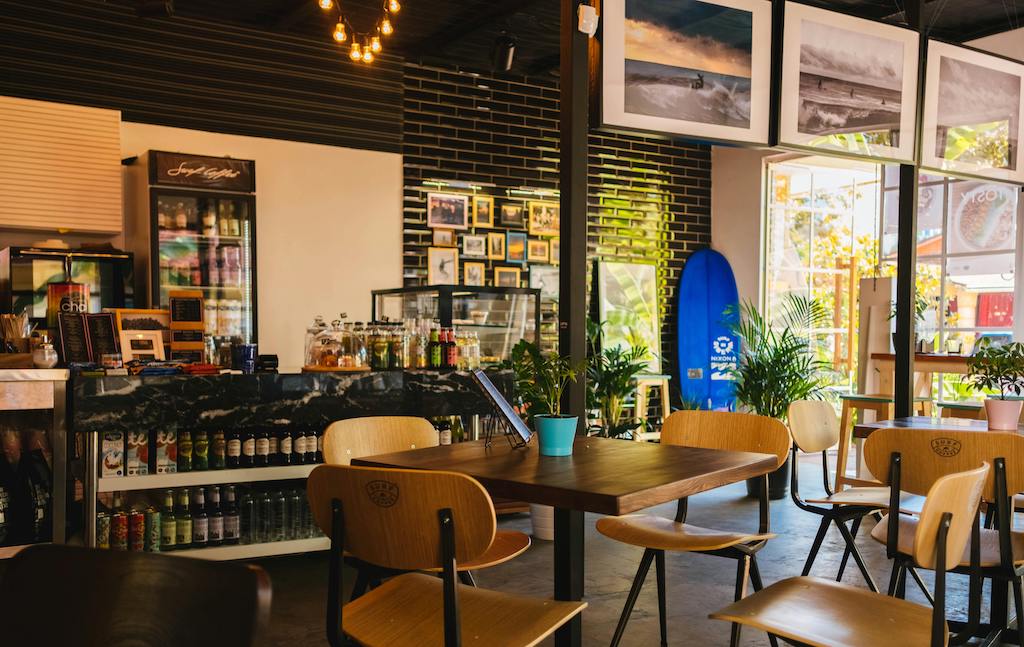
Located in the bustling heart of New York, BizCafe is primed to become the go-to destination for the city's energetic young professionals and the academically inclined student population. Designed as a Limited Liability Company, BizCafe harmoniously balances the vibrancy of an artisan coffee hub with the tranquility of a focused work sanctuary. This innovative cafe caters to the tastes and lifestyles of customers aged 20-35, offering an array of specialty coffees, artisan teas, as well as a handpicked selection of pastries and light meals.
Embraced by the convenience of high-speed Wi-Fi and charging stations, BizCafe is not just a place for savoring a cup of freshly brewed java but is also an inviting space for clients seeking a comfortable place to work, study, or unwind. With a central location, this cafe capitalizes on the fast pace of New York City, becoming a social landmark that facilitates productivity and leisure.
BizCafe prides itself on mitigating anticipated industry risks. Facing competition from establishments such as Java Junction, The Study Spot, Green Leaf Tea House, and Urban Grind, BizCafe differentiates itself through its unique branding and customer loyalty programs. In the event of increased rivalry, the management plans to diversify the menu and enhance loyalty incentives to retain customer fidelity. Economic fluctuations will be met with competitive pricing and value deals, while supply chain disruptions are countered with established relationships and buffer stock, complemented by local sourcing as a contingency measure.
Looking to the next 3-5 years, financial projections are optimistic. The first year is focused on reaching the break-even point, with a revenue aim of $500,000, setting the stage for profit as the brand gains recognition. Steadying itself for moderate growth, BizCafe expects to increase revenue by 20% annually in years 2 and 3 and is planning an expansion that may include a second location or enriched services by year 5, hoping to surpass the $1 million revenue mark.
Within the café, operations pivot around supreme supply chain management, premium staffing, unwavering quality control, and sophisticated inventory management. Staff are selected for their skills and commitment to customer service, with a rotational shift system ensuring comprehensive coverage. In-house financial and customer service processes are evaluated routinely to align with the cafe's high standards.
The marketing and sales strategy is equally robust with a dynamic approach to embrace digital platforms. Social media marketing, loyalty programs, community engagement, collaborations, and a formidable digital presence all form pillars of BizCafe's promotional endeavors. Customized email marketing further personalizes the brand experience, resonating with the targeted clientele.
Leadership is the backbone of BizCafe's operation. Co-Founders Alex Taylor and Jordan Lee embody the essence of keen business acumen and financial mastery, while the operational finesse of Riley Kim and Casey Morgan's marketing expertise provides the momentum behind customer-centric initiatives.
Together, the tapestry of a digital-friendly environment, savvy marketing, responsive risk management, and a crystalline growth trajectory present BizCafe as an enterprise that blends traditional café culture with the innovative spirit of modern entrepreneurship. With a client base that revels in quality and a company ethos grounded in adaptability, BizCafe is on the verge of becoming a cornerstone in the cafe industry, directing its compass towards success in the years to come.
In a city renowned for its perpetual motion and varied tastes, BizCafe emerges as an innovative player in the cafe industry. Market research indicates an uptick in demand for spaces that offer both premium refreshments and conducive environments for work and socialising. By focusing on the 20-35 age group, BizCafe taps into a market niche of young professionals and students who seek quality, convenience, and experience in their choice of hangout spots.
Competition within New York's café landscape is intense but distinct. Java Junction is a chain with a time-efficient service model that resonates with customers on-the-go. BizCafe's strategy of personalised service and loyalty programs sets it apart, fostering a unique community feel and customer retention. The Study Spot, with its quietude and scholastic environment, draws in a specific crowd; however, BizCafe's added value of specialty beverages and high-speed Wi-Fi conducts a broader appeal. Meanwhile, Green Leaf Tea House and Urban Grind border on niche appeals, the former stressing on health-centric offerings, the latter on aesthetic ambiance. BizCafe strategically positions itself as a service-centric and versatile establishment that can address the shifts in consumer patterns by adroitly adapting its menu and atmosphere.
Navigating potential risks necessitates diligent planning. BizCafe recognises the threat of economic downturns, intense competition, supply chain volatility, and fluctuating consumer tastes. Each risk is counterbalanced by a strategy designed to not only mitigate but also to create opportunity from adversity. Unique branding and diversified menus cater to competition risks, whereas competitive pricing and efficient operational adjustments safeguard against economic variance. A robust supply chain buffer and local sourcing answer the call of disruptive external factors.
Financial projections posit a promising horizon for BizCafe. Upon surpassing the break-even point in its inaugural year, a steady climb in revenue suggests sustainability and growth. By years 4-5, expansion plans are on the horizon, contemplating a secondary venue or enhancing service diversity, paving the path toward a revenue benchmark of approximately $1 million.
BizCafe's Operations Plan is a well-oiled machine, prioritising impeccable supply management, adept staffing and training, and rigorous quality control. Inventory is precisely managed with cutting-edge software, neatly dovetailing with meticulous facility maintenance and customer service excellence. Financial health is overseen by an experienced CFO whose oversight is crucial in navigating the fiscal waters and securing profitability.
The marketing and sales approach is multifaceted. From savvy social media campaigning to targeted loyalty programs and community engagement, BizCafe understands the value of creating a narrative that resonates with its clientele. Partnerships with local enterprises and colleges further entrench the café within its commune, while an efficient digital presence caters to the tech-savvy customer base.
Leadership is paramount in orchestrating this symphony of business components. A management team with a fusion of experience in business administration, operations management, finance, and marketing provides the tactical expertise necessary to propel BizCafe into a mainstay of New York cafe culture.
In summary, BizCafe is positioned to carve out its market share in the energetic New York cafe scene. Through strategic risk management, financial prudence, operational excellence, and innovative marketing, BizCafe is poised for growth and success in the ever-evolving café industry.
| Strengths | Weaknesses |
|---|---|
| Specialty coffees, artisan teas, pastries, and light meals. Central New York, attracting young professionals and students. High-speed Wi-Fi and charging stations enhance customer experience. | Significant initial investment and ongoing expenses. Fluctuating customer traffic. Reliant on local demographics. |
| Opportunities | Threats |
| Rising demand for quality coffee and work-friendly environments. New locations and diversified services. Enhancing online presence and customer engagement. | Numerous established local cafes. Impact on discretionary spending. Adhering to health and safety regulations. |
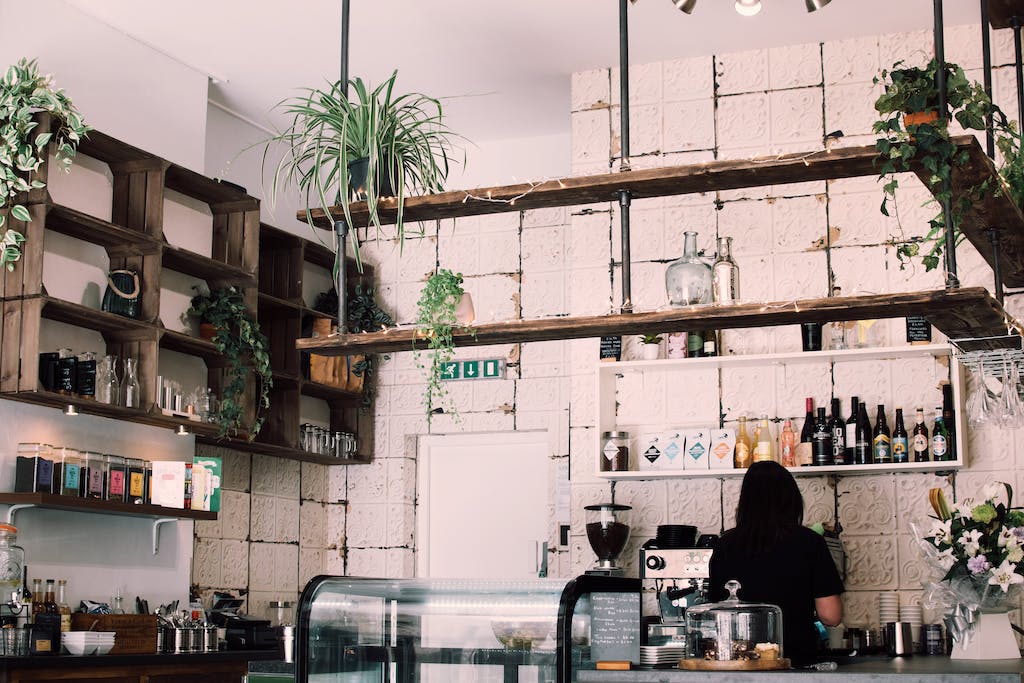
Cafe business plan template
Organizational structure and management.
At the heart of BizCafe’s operations is a meticulously designed organizational structure blended seamlessly with a strategic management approach that nurtures the establishment’s vision of providing premium refreshments in a conducive environment for work and relaxation. Responding to the needs of young professionals and students in New York, BizCafe emerges as a bastion of social interaction and productivity, coupled with the indulgence of gourmet coffees and teas.
The organizational design of BizCafe is anchored in clear-cut roles and responsibilities that promote a collaborative work culture while ensuring efficiency at every managerial and operational level. The leadership team is composed of seasoned professionals with complementary skills and expertise, shaping a cohesive unit that drives forward the company’s objectives.
Alex Taylor, the Co-Founder & CEO, brings a decade of hospitality industry experience and astute business management know-how. Alex’s insight into customer service excellence ensures that BizCafe not only meets but exceeds customer expectations. Jordan Lee, Co-Founder & CFO, with an MBA in finance, navigates the fiscal waters with precision, laying down a robust financial groundwork that underpins the projected growth of the venture.
Directing daily activities is Riley Kim, the Operations Manager, whose operational management prowess and in-depth knowledge of the food and beverage sector ensure that the café operates like a well-tuned engine. With a focus on implementing efficient operational workflows, monitoring inventory, and ensuring staff training is up to par, Riley forms the backbone of BizCafe’s organizational prowess.
Bringing the brand to life is Casey Morgan, the Marketing Director. With a rich background in brand development and digital marketing, Casey is instrumental in carving out BizCafe’s space in a crowded marketplace, pioneering innovative strategies that encapsulate the brand’s ethos and resonate with the target audience.
In confronting industry-specific challenges, BizCafe leverages a proactive risk mitigation framework. To counter fierce competition, the café distinguishes itself with unique branding and customer loyalty programs whilst remaining adaptable, with plans to diversify the menu and refine loyalty rewards should the need arise. Economic downturns are confronted with competitive pricing and keen value deals, backed by strategies to slash operational costs without compromising quality. The threat of supply chain disruption is addressed through multi-faceted supplier relationships and the maintenance of a buffer stock; contingency plans include procuring supplies from local purveyors. Changing consumer preferences are met with a continuously evolving menu informed by customer feedback, with rapid adjustments poised as a standby response to market trends. Regulatory changes are attentively monitored and promptly adhered to, with staff training ensuring compliance.
Projected financial targets are optimistic yet grounded, aiming for a break-even in the first year with subsequent annual growth. Strategic planning anticipates not just the upholding of a strong financial position but also the potential for expansion within the next five years, including the prospect of opening a second location or augmenting service offerings, buttressed by solid profitability and a well-entrenched brand reputation.
Marketing and sales imbue BizCafe with vibrancy, harnessing the power of social media marketing, community engagement, and digital outreach to create and nurture a loyal customer community. Loyalty programs incentivize repeat patronage, and partnerships with nearby businesses amplify the café’s presence and appeal.
In sum, BizCafe stands as a paradigm of a well-structured and astutely managed establishment, blending operational excellence and strategic acumen to deliver an unparalleled café experience and robust business performance. With an eye toward sustainability and another on innovative expansion, BizCafe is well-poised to become an emblematic landmark in New York’s coffee culture landscape.
BizCafe, endeavoring to become the favored haunt for the city's spirited young professionals and scholars, is a burgeoning sensation in the cafe industry. Our establishment seamlessly marries the artistry of specialty coffees and artisan teas with freshly crafted pastries and light meals that answer the call of diverse palates. BizCafe is more than just a retreat for coffee aficionados; it is also a nexus for connectivity, offering high-speed Wi-Fi and ample charging stations, crafted for those who yearn for a comfortable niche to work and study.
Our "Products and Services" section is designed to highlight the values and operational tenets that set BizCafe apart in an industry teeming with competition. We present an inviting atmosphere, friendly to both brisk morning commutes and leisurely afternoons. The sumptuous café offers an expanse where work, study, and informal meetings can unfold in comfort—a rarity in the frenetic pace of New York.
Economic downturns, competition, supply chain disruptions, and changing consumer preferences—the cafe industry is no stranger to these potential risks. To safeguard our venture and flourishing brand against these, we employ strategic forethought. Our robust branding and customer loyalty programs act as our shield against competition, with contingency plans to further diversify our menu and bolster those same loyalty offers if the market demands. We counter economic challenges with competitive pricing strategies complemented by precise operational cost management. We have fostered relationships with a broad network of suppliers and stock contingencies to ensure consistent provisions, with local sourcing as a standby plan against supply chain challenges. We keep our ears to the ground, adapting our menu to reflect market trends and customer feedback, always ready to implement rapid adjustments to meet evolving tastes.
Operational efficiency is the linchpin of our endeavor. With a keen eye on quality and customer satisfaction, we meticulously manage our supplier relationships, staff expertise, inventory, facility maintenance, and regulatory compliance. Our Operations Plan details the measures in place to maintain excellence all-round—from sustainably sourced coffee beans to the engaging customer service delivered by our handpicked team of baristas—all to orchestrate the perfect cafe experience.
BizCafe navigates the marketing arena with as much acumen as it brews espressos. Our Marketing and Sales Strategy is a keen fusion of online dazzle and offline substance. We utilize the sticky webs of social media to captivate our audience, forge loyalty through rewards programs, engage our community through vibrant events, and amplify our reach via collaborations with local businesses.
The coalescence of ambition and management comes into play when we shine a light on the key members of our team. Alex Taylor and Jordan Lee at the helm, their seasoned expertise in business management and financial acumen respectively, ensure that strategic direction and economic stability are a part of the company's bedrock. Bolstered by Riley Kim's operational oversight and Casey Morgan's dynamic marketing campaigns, BizCafe is a testament to exemplary leadership and team synergy.
Financial projections for BizCafe elucidate a narrative of growth and success. We anticipate a breakeven by year-end, which sets the pace for progressive revenue increases in the following years, ideally pivoting towards a significant milestone—potentially reaching a projected revenue of around $1 million by the fourth or fifth year.
Summarily, BizCafe is an enterprise that reverberates with the promise of quality, comfort, and connectivity, grounded firmly on the bedrocks of strategic risk management, operational integrity, and customer-centric growth plans. As we chart our course in New York's dense cafe sector, we remain dedicated to serving not just cups of specialty beverages but also fostering a dynamic hub of activity and relaxation that resonates with the city's beat.

Café business plan
In crafting the Marketing and Sales Strategy for BizCafe, we begin by addressing the fundamental attributes that set BizCafe apart. Our diverse offering of premium specialty coffees, artisan teas, savory pastries, and light meals is crafted to align with the tastes of our target demographic: young professionals and students who desire a blend of quality, convenience, and comfort. With facilities like high-speed Wi-Fi and readily available charging stations, we cater to the productivity and connectivity needs of our customers.
Our marketing framework is designed to communicate these core benefits effectively to our target market. Recognizing the inherent risks in a competitive industry, we've laid out strategies to mitigate these and developed contingency plans. Against competition, we counter with our boutique branding and tailored loyalty programs to foster a strong customer base. Should the competitive landscape intensify, we are prepared to diversify our menu and amplify our loyalty program benefits, further differentiating BizCafe.
In dealing with economic downturns, we focus on positioning our offerings as competitively priced without sacrificing quality. We also streamline operations and collaborate with cost-effective suppliers to maintain healthy margins. For supply chain disruptions, we've cultivated relationships with multiple vendors and maintain buffer stock levels. As an alternative if needed, we have contingencies to source locally.
To keep pace with evolving consumer preferences, we employ ongoing dialogue with our clientele, maintaining flexibility to adapt our offerings swiftly. To ensure readiness for any regulatory changes, we maintain an informed and proactive stance, with training programs to quickly bring staff up to speed on new requirements.
Our approach to market penetration and growth is multi-faceted. We blend organic and paid strategies, including:
- Social Media Marketing : We prioritize engagement on platforms like Instagram and Facebook, where our visual content can shine and resonate with the younger audience. We plan to utilize targeted ads, influencers, and content marketing to bolster our online presence and drive foot traffic.
- Loyalty Programs : We leverage loyalty programs to maintain high customer retention rates, offering rewards that incentivize repeat visits.
- Community Engagement : We understand the value of an integrated community; hence, we host events and workshops aimed at building relationships and encouraging networking within our space. These events range from coffee tastings to productivity workshops, appealing to our demographic of professionals and students.
- Collaborations with Local Businesses and Educational Institutions : Partnering with like-minded businesses and local colleges allows us to extend our reach through cross-promotion while also tapping into existing networks of potential loyal customers.
- Digital Presence and Online Ordering : Given the proclivity of our audience for digital convenience, we maintain a strong digital presence through a user-friendly website and online ordering capabilities for pickups and deliveries.
- Email Marketing : Through carefully curated newsletters, we share updates, promotions, and exclusive offers to maintain engagement with our existing customer base, ensuring that BizCafe remains top-of-mind.
In parallel with these efforts, we recognize the need for a firm foundation. The organizational structure of BizCafe, an LLC, offers flexibility in management with personal liability protection for the owners. Our key management team members, each expert in their field, ensure operations align with strategic goals.
In summary, the Marketing and Sales Strategy for BizCafe is robust, diversified, and perfectly tailored to our target customer's lifestyle. It intertwines BizCafe’s core service offerings with innovative promotional tactics that are set to carve out a significant market share, promising growth, and an irreplaceable spot in our community's daily routine.
BizCafe, nestled within the vibrant streets of New York, is set to reinvigorate the traditional café experience by aligning it with the contemporary lifestyle and preferences of our target market—students and young professionals aged 20-35. Our operations plan is conceived to underpin this dynamic business model by ensuring efficiency, quality, and customer satisfaction.
Our strategic location—a nexus of cultural diversity and a hub for millennial activity—provides BizCafe with the advantage of tapping into a rich customer base yearning for a unique café experience. The provision of high-speed Wi-Fi and charging stations distinguishes us from traditional coffee shops, catering to patrons who seek a conducive place to work or study while indulging in our specialty coffees, artisan teas, and an assortment of pastries and light meals.
Addressing the operational execution, BizCafe will adopt a meticulous approach towards supply management. We shall form strategic alliances with reputable local suppliers to ensure a consistent supply of premium-quality coffee beans, tea leaves, and fresh ingredients for our culinary offerings. These partnerships will enable us to maintain our commitment to quality and sustainability—a fundamental trait of the BizCafe brand.
We recognize that our staff are the ambassadors of our brand. Hence, we will employ skilled baristas and support staff who exhibit a combination of technical expertise in coffee-making and a passion for customer service. A rotating shift system will be implemented to optimize staff utilization across our business hours, ensuring that our service quality does not waver during peak times.
In our quest for excellence, quality control remains paramount. Routine training sessions will be conducted to educate our staff on food safety and the meticulous preparation of our beverages, thereby upholding our promise of consistently high-quality products. We shall leverage advanced inventory management software to monitor stock levels, minimize waste, and streamline the replenishment process.
Realizing the necessity of maintaining an inviting and operational facility, we commit to routine maintenance checks of our café space and the upkeep of our coffee-making equipment. This ensures a pleasurable ambience for our customers and uninterrupted service delivery.
Our financial management, spearheaded by our CFO, will involve regular reviews and proactive budgeting to keep our financial goals on track. This financial foresight, coupled with the implementation of a comprehensive customer feedback system, will enable us to respond adeptly to market demands and elevate our service offerings.
Health and safety compliance is non-negotiable. We pledge to adhere rigorously to local health and safety regulations, conducting regular staff training and audits to foster a safe environment for both our patrons and our team.
BizCafe’s operations plan is not merely a blueprint for daily management but a reflection of our commitment to excellence in providing a compelling café experience. With this at our core, we set forth on a path to build BizCafe into a revered brand synonymous with quality, innovation, and unmatched customer service.

Cafe business plan example
The Financial Projections section provides a forecast that is essential for understanding BizCafe's potential for growth, profitability, and financial stability. This forecast is based on a comprehensive analysis of the current market, comparable business models, consumer behavior, and the broader economic climate. While projections inherently contain assumptions and estimations, they aim to present the most probable outcomes given the business environment and strategies in place.
BizCafe’s financial journey commences with the strategic objective of reaching its break-even point by the end of the first operational year, which aligns with projected revenues of approximately $500,000. Achieving this milestone will signify the successful penetration of BizCafe into the cafe industry and establish a strong foundation for subsequent growth. To facilitate this target, marketing efforts will be ramped up to raise brand awareness and drive traffic to the storefront. Cost management will also remain at the forefront, ensuring expenses are aligned with our growth strategy.
The following years, two and three, are projected to herald a period of steady growth. With established brand recognition and an expanding loyal customer base, we anticipate revenue growth of approximately 20% annually. This growth will be driven by a combination of factors, including an increased adoption of BizCafe's loyalty program, the introduction of new menu items in response to market trends, and strategic marketing campaigns designed to expand our reach. During this period, we anticipate revenues to reach approximately $720,000 by the end of year three, and we project improvement in profit margins due to enhanced operational efficiencies and economies of scale.
Years four and five mark the expansion phase for BizCafe. Fortified by a strong, loyal following and increased cash flows, this chapter will explore new avenues for expansion, which may include the opening of a second location or diversifying service offerings to cater to additional segments, like corporate catering or evening social events. These growth opportunities could further augment revenue, with a possibility of surpassing $1 million by the close of year five.
Throughout this five-year span, BizCafe will remain steadfast in executing our marketing and sales strategies to support these financial goals. Our multi-channel approach, which includes establishing a substantive digital presence, engaging with the community, partnering with local businesses, and consistent brand messaging, will be instrumental in driving sales and increasing profitability.
In preparing these financial projections, we also recognize and plan for potential risks and have formulated mitigation strategies. From the outset, BizCafe will establish a contingency reserve to safeguard against unexpected economic downturns, competitive pressures, or supply chain disruptions, ensuring operational stability and financial resilience.
The projected performance is reliant on the strategic execution by our experienced management team, who will maintain vigilant oversight of financial health. CEO Alex Taylor will lead the charge with a focus on cultivating a high-performing team and elevating the customer experience, while CFO Jordan Lee will enforce rigorous financial controls to safeguard against overspending and cash flow shortfalls.
In summary, BizCafe’s financial projections are rooted in a blend of conservative assumptions and strategic optimism. Our envisioned growth trajectory capitalizes on market opportunities and prudent financial management, positioning BizCafe as a compelling new entrant in the New York cafe sector with robust prospects for enduring success.
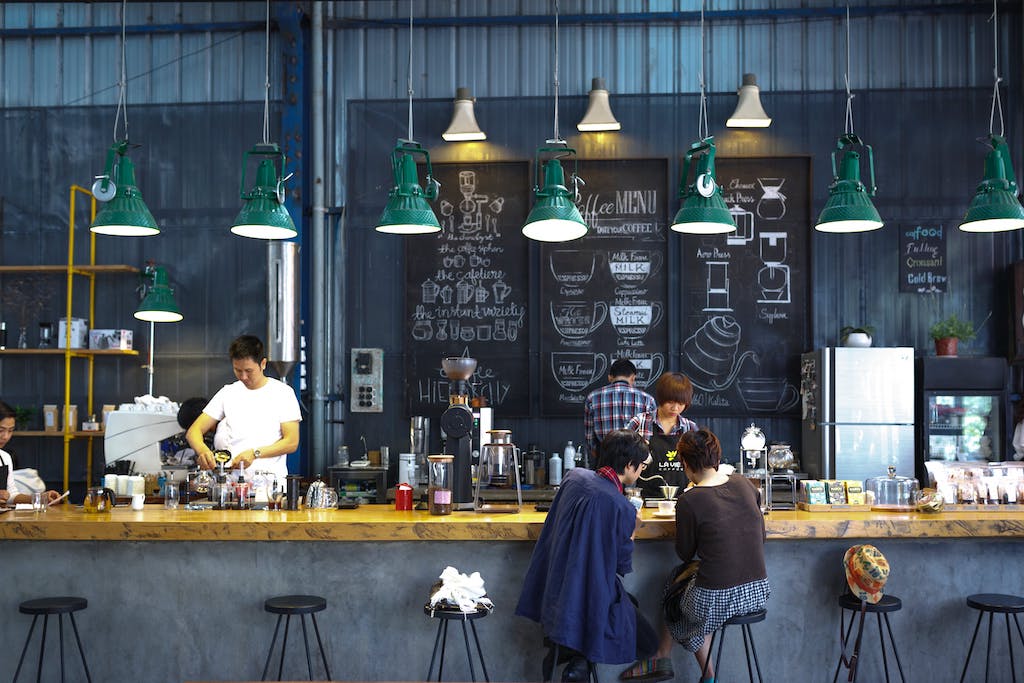
Cafe business plan
Risk management is a critical component for the success of any business, and BizCafe is no exception. Our risk analysis outlines potential challenges that BizCafe may face and establishes mitigation strategies and contingency plans to navigate these risks effectively.
Competition
The café sector in New York is highly competitive, with several key players such as Java Junction, The Study Spot, Green Leaf Tea House, and Urban Grind already established in the marketplace. Each competitor brings strengths to the table: Java Junction's wide variety of coffee blends appeals to busy professionals; The Study Spot attracts students and academics with a quiet atmosphere; Green Leaf Tea House draws in health-conscious clientele with organic offerings; and Urban Grind is favored for its trendy ambiance among young adults.
To mitigate this risk, BizCafe’s strategy hinges on unique branding and building a strong customer loyalty program that incentivizes repeat visits. Our contingency plan includes diversifying our menu options and enhancing loyalty programs to retain customers and attract new ones, even in a saturated market.
Economic Downturns
Providing luxury discretionary products such as specialty coffee, economic downturns could pose a significant risk to BizCafe’s profitability. Customers may cut back on non-essential spending during these periods.
Mitigation for this risk involves offering competitive pricing and creating value deals that are attractive to customers looking for affordable luxury. Our contingency includes reducing operational costs, such as renegotiating leases or finding cost-effective suppliers without compromising the quality of our products.
Supply Chain Disruption
Supply chain volatility can affect the availability of critical inputs like coffee beans, specialty teas, and baked goods. This risk could be caused by global events, natural disasters, or other unforeseen disruptions.
To counteract this, BizCafe will establish relationships with multiple suppliers and maintain a buffer stock to safeguard against short-term disruptions. The contingency plan focuses on developing local sourcing alternatives to reduce dependency on distant supply chains.
Changing Consumer Preferences
Consumer tastes in the food and beverage industry are constantly evolving. Failure to adapt to these changes can result in loss of market share.
Our approach includes staying abreast of industry trends and customer feedback to adapt our menu accordingly. As a contingency measure, BizCafe is prepared for rapid menu adjustments and the roll-out of new products, keeping our offerings fresh and aligned with customer preferences.
Regulatory Changes
Operating in the food and beverage industry, BizCafe must comply with numerous regulations concerning health and safety, labor laws, and food standards. Regulatory changes could impose additional costs or require operational adjustments.
Our mitigation strategy involves staying informed of regulatory changes and ensuring full compliance. Should significant regulatory changes be implemented, our contingency plan includes swiftly revising operational practices and investing in staff training to meet new requirements.
Financial Management
BizCafe’s financial health is paramount to its success. Poor financial management could lead to cost overruns, inadequate cash flow, and ultimately, business failure.
To mitigate this risk, regular financial reviews and strict budgeting practices will be instituted, overseen by our experienced CFO, Jordan Lee. Our risk-averse financial strategy involves conservative projections with room for agile adjustments to the market’s ebbs and flows.
In conclusion, BizCafe's risk analysis is comprehensive, taking into account a multitude of factors that could influence the café's success. By employing proactive mitigation strategies and having robust contingency plans, BizCafe is poised to address these risks effectively while remaining focused on delivering exceptional service to our target market.
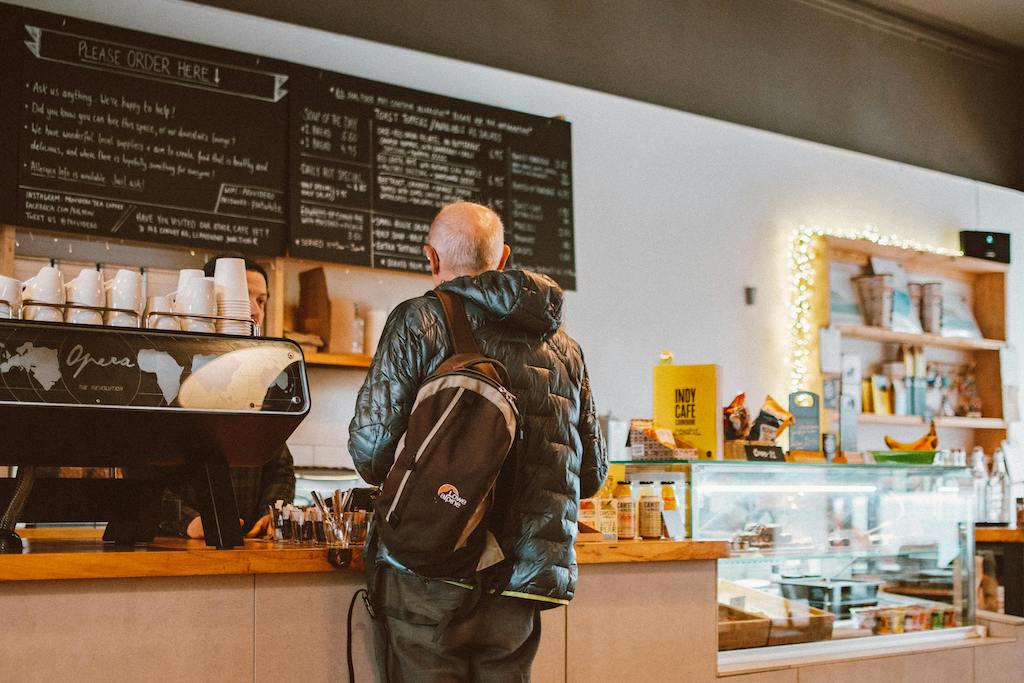
Coffee shop business plan
More business plan templates.
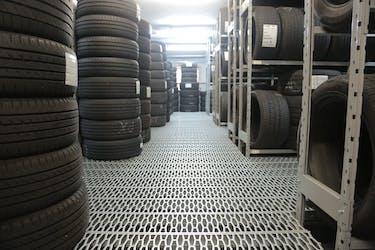
Tire shop business plan

Sandwich shop business plan

Laundromat business plan

Cafe Business Plan Template
Written by Dave Lavinsky
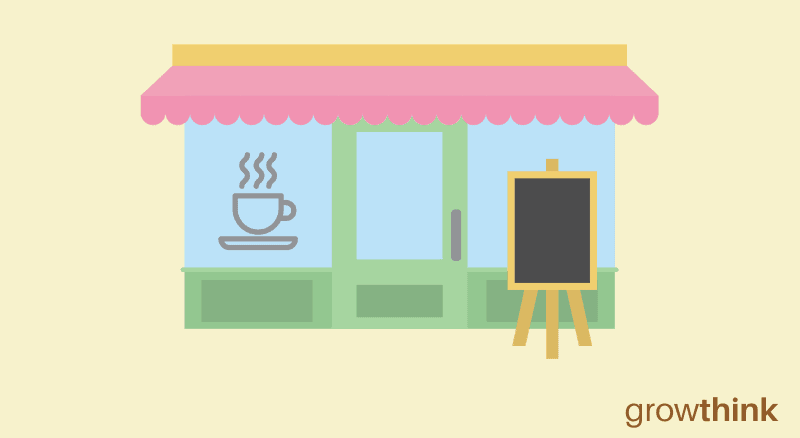
Cafe Business Plan
Over the past 20+ years, we have helped over 10,000 entrepreneurs and business owners create business plans to start and grow their cafes. On this page, we will first give you some background information with regards to the importance of business planning. We will then go through a cafe business plan template step-by-step so you can create your plan today.
Download our Ultimate Business Plan Template here >
What is a Cafe Business Plan?
A business plan provides a snapshot of your cafe as it stands today, and lays out your growth plan for the next five years. It explains your business goals and your strategy for reaching them. It also includes market research to support your plans.
Why You Need a Business Plan for a Cafe
If you’re looking to start a cafe or grow your existing cafe you need a business plan. A business plan will help you raise funding, if needed, and plan out the growth of your cafe in order to improve your chances of success. Your cafe business plan is a living document that should be updated annually as your cafe grows and changes.
Sources of Funding for Cafes
With regards to funding, the main sources of funding for a cafe are bank loans and angel investors. With regards to bank loans, banks will want to review your business plan and gain confidence that you will be able to repay your loan and interest. To acquire this confidence, the loan officer will not only want to confirm that your financials are reasonable. But they will want to see a professional plan. Such a plan will give them the confidence that you can successfully and professionally operate a business.
The second most common form of funding for a cafe is angel investors. Angel investors are wealthy individuals who will write you a check. They will either take equity in return for their funding, or, like a bank, they will give you a loan.
Finish Your Business Plan Today!
Your cafe business plan should include 10 sections as follows:
Executive Summary
Your executive summary provides an introduction to your business plan, but it is normally the last section you write because it provides a summary of each key section of your plan.
The goal of your Executive Summary is to quickly engage the reader. Explain to them the type of cafe business you are operating and the status; for example, are you a startup, do you have a cafe that you would like to grow, or are you operating a chain of cafes.
Next, provide an overview of each of the subsequent sections of your plan. For example, give a brief overview of the cafe industry. Discuss the type of cafe you are operating. Detail your direct competitors. Give an overview of your target market. Provide a snapshot of your marketing plan. Identify the key members of your team. And offer an overview of your financial plan.
Company Analysis
In your company analysis, you will detail the type of cafe you are operating.
For example, you might operate one of the following types:
- Take-Out Cafe: this type of cafe doesn’t have seating (or has limited seating) and is mostly visited by customers looking to grab a coffee and/or bakery item on their way to work or elsewhere.
- Restaurant Cafe: this type of cafe is most similar to a restaurant and offers a full, sit-down menu in a nice atmosphere with a full wait staff.
- Casual cafe: also known as a corporate, student or co-working cafe, this type of cafe typically offers food and drinks from a counter with no waiters or waitresses. Patrons purchase items and consume them in the cafe, often while performing work on their laptops or conversing with friends or colleagues.
- Coffee Shop: This is a popular type of cafe. Coffee shops usually offer a selection of tea, coffee, pastries and other drinks
In addition to explaining the type of cafe you operate, the Company Analysis section of your business plan needs to provide background on the business.
Include answers to question such as:
- When and why did you start the business? What is your business concept? What is your unique selling proposition?
- What milestones have you achieved to date? Milestones could include sales goals you’ve reached, new store openings, etc.
- Your business structure. Are you incorporated as an S-Corp? An LLC? A sole proprietorship? Explain your legal structure here.
Industry Analysis
In your industry analysis, you need to provide an overview of the cafe business.
While this may seem unnecessary, it serves multiple purposes.
First, researching the cafe industry educates you. It helps you understand the market in which you are operating.
Secondly, market research can improve your strategy particularly if your research identifies market trends. For example, if there was a trend towards cafes with ultra high speed internet connections, it would be helpful to ensure your location could offer such a service.
The third reason for market research is to prove to readers that you are an expert in your industry. By conducting the research and presenting it in your plan, you achieve just that.
The following questions should be answered in the industry analysis section of your cafe business plan:
- How big is the cafe business (in dollars)?
- Is the market declining or increasing?
- Who are the key competitors in the market?
- Who are the key local suppliers in your market?
- What trends are affecting the industry?
- What is the industry’s growth forecast over the next 5 – 10 years?
- What is the relevant market size? That is, how big is the potential market for your cafe. You can extrapolate such as figure by assessing the size of the market in the entire country and then applying that figure to your local population.
Customer Analysis
The market analysis section of your cafe business plan must detail the customers you serve and/or expect to serve.
The following are examples of customer segments: local office workers, college students, sports enthusiasts, soccer moms, techies, teens, baby boomers, etc.
As you can imagine, the target audience you choose will have a great impact on the type of cafe you operate. Clearly baby boomers would want a different atmosphere, pricing and product options, and would respond to different marketing promotions than teens.
Try to break out your target customers in terms of their demographic and psychographic profiles. With regards to demographics, include a discussion of the ages, genders, locations and income levels of the customers you seek to serve. Because most cafes primarily serve customers living in their same city or town, such demographic information is easy to find on government websites.
Psychographic profiles explain the wants and needs of your target customers. The more you can understand and define these needs, the better you will do in attracting and retaining your customers.
With Growthink’s Ultimate Business Plan Template you can finish your plan in just 8 hours or less!
Competitive Analysis
Your competitive analysis should identify the indirect and direct competitors your business faces and then focus on the latter.
Direct competitors are other cafes (and restaurants and/or bakeries depending on the type of cafe you operate).
Indirect competitors are other options that customers have to purchase from you that aren’t direct competitors. This includes restaurants, supermarkets and customers making coffee and bakery items themselves at home. You need to mention such competition to show you understand that not everyone in your target market will visit a cafe each day.
With regards to direct competition, you want to detail the other cafes or coffee shops with which you compete. Most likely, your direct competitors will be cafes located very close to your location.
For each such competitor, provide an overview of their businesses and document their strengths and weaknesses. Unless you once worked at your competitors’ businesses, it will be impossible to know everything about them. But you should be able to find out key things about them such as:
- What types of customers do they serve?
- What products do they offer?
- What is their pricing (premium, low, etc.)?
- What are they good at?
- What are their weaknesses?
With regards to the last two questions, think about your answers from the customers’ perspective. And don’t be afraid to stand outside your competitors’ locations and ask customers as they leave what they like most and least about them.
The final part of your competitive analysis section is to document your areas of competitive advantage. For example:
- Will you provide superior cafe products?
- Will you provide cafe products that your competitors don’t offer?
- Will you make it easier or faster for customers to acquire your products?
- Will you provide better customer service?
- Will you offer better pricing?
Think about ways you will outperform your competition and document them in this section of your plan.
Marketing Plan
Traditionally, a marketing plan includes the four P’s: Product, Price, Place, and Promotion. For a cafe business plan, your marketing plan should include the following:
Product : in the product section you should reiterate the type of cafe that you documented in your Company Analysis. Then, detail the specific products you will be offering. For example, will you offer pastries, soups, items such as café latte, cappuccino, espresso or macchiato?
Price : Document the prices you will offer and how they compare to your competitors. Essentially in the product and price sub-sections of your marketing plan, you are presenting the menu items you offer and their prices.
Place : Place refers to the location of your cafe. Document your location and mention how the location will impact your success. For example, is your cafe located next to a heavily populated office building, or gym, etc. Discuss how your location might provide a steady stream of customers.
Promotions : the final part of your cafe marketing plan is the promotions section. Here you will document how you will drive customers to your location(s). The following are some promotional methods you might consider:
- Making your cafe’s front store extra appealing to attract passing customers
- Distributing samples outside the cafe
- Advertising in local papers and magazines
- Reaching out to local bloggers and websites
- Partnerships with local organizations (e.g., gym members get a free cup of cafe with each pastry they purchase)
- Local radio advertising
- Banner ads at local venues
Operations Plan
While the earlier sections of your business plan explained your goals, your operations plan describes how you will meet them. Your operations plan should have two distinct sections as follows.
Everyday short-term processes include all of the tasks involved in running your cafe such as serving customers, procuring supplies, keeping the cafe clean, etc.
Long-term goals are the milestones you hope to achieve. These could include the dates when you expect to serve your 10,000th customer, or when you hope to reach $X in sales. It could also be when you expect to hire your Xth employee or launch a new location.
Management Team
To demonstrate your cafe’s ability to succeed as a business, a strong management team is essential. Highlight your key players’ backgrounds, emphasizing those skills and experiences that prove their ability to grow a company.
Ideally you and/or your team members have direct experience in the cafe, coffee shop and/or restaurant business. If so, highlight this experience and expertise. But also highlight any experience that you think will help your business succeed.
If your team is lacking, consider assembling an advisory board. An advisory board would include 2 to 8 individuals who would act like mentors to your business. They would help answer questions and provide strategic guidance. If needed, look for advisory board members with experience in cafes and/or successfully running retail and small businesses.
Financial Plan
Your financial plan should include your 5-year financial statement broken out both monthly or quarterly for the first year and then annually. Your financial statements include your income statement, balance sheet and cash flow statements.
Income Statement : an income statement is more commonly called a Profit and Loss statement or P&L. It shows your revenues and then subtracts your costs to show whether you turned a profit or not.
In developing your income statement, you need to devise assumptions. For example, will you serve 100 customers per day or 200? And will sales grow by 2% or 10% per year? As you can imagine, your choice of assumptions will greatly impact the financial forecasts for your business. As much as possible, conduct research to try to root your assumptions in reality.
Balance Sheets : While balance sheets include much information, to simplify them to the key items you need to know about, balance sheets show your assets and liabilities. For instance, if you spend $100,000 on building out your cafe, that will not give you immediate profits. Rather it is an asset that will hopefully help you generate profits for years to come. Likewise, if a bank writes you a check for $100.000, you don’t need to pay it back immediately. Rather, that is a liability you will pay back over time.
Cash Flow Statement : Your cash flow statement will help determine how much money you need to start or grow your business, and make sure you never run out of money. What most entrepreneurs and business owners don’t realize is that you can turn a profit but run out of money and go bankrupt. For example, let’s say a company approached you with a massive $100,000 catering contract, that would cost you $50,000 to fulfill. Well, in most cases, you would have to pay that $50,000 now for supplies, equipment rentals, employee salaries, etc. But let’s say the company didn’t pay you for 180 days. During that 180 day period, you could run out of money.
In developing your Income Statement and Balance Sheets be sure to include several of the key costs needed in starting or growing a cafe:
- Location build-out including design fees, construction, etc.
- Cost of fixtures like chairs, tables, signage and cafe decor
- Cost of equipment like grinders, espresso machines, blenders, refrigerators
- Cost of ingredients and maintaining an adequate amount of supplies
- Payroll or salaries paid to staff
- Business insurance
- Taxes and permits
- Legal expenses
Attach your full financial projections in the appendix of your plan along with any supporting documents that make your plan more compelling. For example, you might include your store design blueprint or location lease.
Summary Putting together a business plan for your cafe is a worthwhile endeavor. If you follow the template above, you will be able to prepare a winning cafe business plan or a coffee shop business plan. You will really understand cafe business planning, business operations, your competition and your customers. You will have developed a marketing plan and will really understand what it takes to launch and grow a successful cafe.
OR, Let Us Develop Your Plan For You Since 1999, Growthink has developed business plans for thousands of companies who have gone on to achieve tremendous success.
Click here to see how our professional business plan writers can create your business plan for you. Other Helpful Business Plan Articles & Templates

| You might be using an unsupported or outdated browser. To get the best possible experience please use the latest version of Chrome, Firefox, Safari, or Microsoft Edge to view this website. |
How To Start A Coffee Shop (2024 Guide)

Updated: May 1, 2024, 5:13pm

Table of Contents
How to prepare, 12 key steps to open a coffee shop, tips for success after opening a coffee shop, independent coffee shop vs. starting a franchise, frequently asked questions.
It’s no wonder you want to start a coffee shop. Coffee is one of the most popular and profitable beverages in the world. It is robust and delicate, flavorful and aromatic, stimulating and relaxing. It’s conversational, it brings people together and it jumpstarts the day. The coffee industry can be a lot of fun. If you want to know how to start a coffee shop, look no further—we’ve compiled the ultimate guide to get you on your way.
Before you truly launch into the process of starting a coffee shop, you should lay a solid foundation to build on.
Create a Business Plan
Having a business plan is important. It’s similar to a map, helping you get from point A to point B.It’s also essential if you are seeking a loan or investment. You want your lender to see what you intend to achieve and how you plan for success.
Creating a business plan helps you connect your investments with goals, have a business model, show your target market, sales strategy and overall potential for growth. It also helps you uncover any weak spots, honing in on things that could potentially go wrong. Try to map out the whole picture for the entire business including business structure, customers, location, pricing, cost, products, staff and financials.
Featured Partners
ZenBusiness
$0 + State Fees
Varies By State & Package

On ZenBusiness' Website

On LegalZoom's Website
Northwest Registered Agent
$39 + State Fees

On Northwest Registered Agent's Website
Choose Your Business Structure
When it comes to choosing your type of business structure , it is important to decide what structure best supports you and your business. This is something you will need to do before you register your business with the state. It is best to choose your business structure carefully, as it directly affects you and your business from personal liability, taxes, legal protection, bankruptcy, selling or even transferring ownership.
You could run your business as a sole proprietor, partnership, limited liability company (LLC) or corporation. LLCs and corporations provide protection against personal liability, but require filing forms with your state. Take some time to consider which option works best for you.
Consider Costs: Funding and Finances
Unless you already have the finances to start your coffee shop, you’ll need to calculate your startup costs. After you determine your startup expenses, you’ll need to decide where to request funding. You may have self-funding or investors as financial resources or you may need to contact banks and credit unions to request a small business loan . Another popular option is crowdfunding, which allows other people to support and contribute to the success of the business. Whichever way you decide, you need to have a good idea of what your budget is going into it. Consider costs such as renovations, buildouts, construction, machines, water systems, coffee grinders—these can add up. It’s inevitable for unforeseen things to come up, so it is better to be as accurate as you can and avoid underestimating.
1. Have a Vision
Passion with a vision is the driving force you need to move into action and succeed. Your desire will be the fuel to your success, and your customers will sense your love and dedication to the business. This vision and passion not only fulfills your personal dreams and desires, but it delivers an exceptional outcome and experience to your customers. When the going gets tough, you’ll need that fuel to get you through and when you put your heart and soul into something you love, the payoff is even greater.
“People with passion can change the world” —Steve Jobs
2. Do Your Research
Knowledge is power and it is a major contribution to your success. In order to gain knowledge, you must do your research. Start by learning the ins and outs of what makes a successful coffee shop.
There are many ways to do this, from hands-on experience to networking, asking other coffee shop owners with experience and educational tools such as books, classes and online content. This will provide you with important tools and information to move forward with confidence. Write a list of questions to help you gather the information you need. Some examples include:
- How do you roast your own coffee beans?
- What makes a great cup of coffee?
- What are the best machines to use?
- What are the coffee shop essentials?
- What is the competition like in the area?
- What are the health codes for a coffee shop?
- What other sources can help the business grow?
The more knowledge you have, the better your business will be. You’ll have more insight on how to run it, and you’ll be able to make good decisions. Your staff will trust in you and your customers will enjoy buying from you.
3. Identify Startup Cost and Equipment
No matter what, starting a coffee shop will have expenses, and these are essential for your operation. If you are choosing a brand-new retail location, it will be more costly to build and renovate than it will be to rent an existing location. Depending on the size and location of your coffee shop, cost can vary from $100,000 to $600,000. Determine what your budget is and what your limit is to spend on the necessities including renovations, furnishings, products and equipment. Some common startup costs that you’ll have include:
- Rental space
- Licenses and permits
- Advertising
- Staff wages
- Furnishing and equipment
To gain a full picture, separate your one-time costs, such as licenses and permits, equipment and renovations, from your monthly costs, such as utilities, advertising and employee wages.It’s better to overestimate than underestimate, and it’s important to have additional funding to cover operating costs until the business becomes profitable. This can take anywhere from six to 12 months.
4. Develop a Branding Strategy
Branding is much more than a logo. It not only represents the overall identity of your business, but the quality of your product, allowing customers to recognize, become familiar and trust your services. Think of it as the face and personality of your coffee shop and what makes your café unique and stand out.
Ask yourself, “How can I leave a lasting impression on the consumer and how do I want my customers to feel when they arrive?” You want your brand to activate their senses so they will automatically anticipate the full experience before they even walk through the door. This leaves a lasting impression on the consumer, encouraging them to talk about their experience with others and visit again.
Here are some helpful questions to ask yourself when developing your brand:
- What makes your coffee shop unique? For example, the coffee beans, the atmosphere, the environment, the services, the ingredients, etc.
- What kind of experience do you want to provide, and what is your overall theme for the shop?
- How can you create a sense of community, and how does it serve others as a gathering hub?
- Is your brand logo appealing, and does it translate well on packaging, social media and merchandise?
- How will your logo create a sense of familiarity and trust for consumers?
Once you’ve found the perfect design, don’t forget to trademark your logo and protect your creative assets.
5. Find a Location and Commercial Space
When starting a coffee shop, it’s important to choose a location and space that provides a wonderful experience for your customers. With that in mind, you’ll also need to consider other factors that will determine the success of your business, returning true profitable potential.
Pick a location that targets your ideal customers. You want to make sure there will be enough foot traffic in the area to provide your coffee shop with high volume and avid coffee drinkers—keeping your business steady year round. Get an idea of population density in your area by contacting the city or visiting census.gov census data by zip code.
Research other coffee shops in the area. It’s a good idea to research other coffee shops in the area to see if they compete with the products and services you provide. Some coffee shops target specific audiences or have limited hours of operation. This could help you determine whether or not you want to target customers who are early birds or night owls. Maybe you want to serve breakfast sandwiches in the morning or dessert and coffee in the evening.
Either way, it’s a good idea to make sure you’re not in competition with your neighbor—try to complement them instead.
Find a location that is easily accessible. Customers are drawn to locations that are easily accessible whether on foot or driving. Customers love the convenience of hassle-free parking and street visibility for those walking from one destination to another.
Find a commercial space. Finding a cozy coffee space is just one necessary component to an exceptional café experience but, unfortunately, not all commercial spaces will be able to accommodate more than that. Coffee shops require a unique set of accommodations, such as sufficient space to move around, room for espresso machines, couches and tables, kitchen space, gas, drain and water lines just to name a few. Remember to take all of it into consideration.
Find a commercial space you can afford. This falls in line with your budget as an ongoing cost, making it a commitment for the long haul. Consider the length of the lease, rent increases, renovations, insurance requirements, security deposit, maintenance and repairs. This not only plays a role in your coffee prices, but can directly affect any business loans.
Start an LLC Online Today With ZenBusiness
Click on the state below to get started.
6. File for Permits and Licenses
Before you start firing up the espresso machine and filling the display case with baked goods, you’ll need to get approved for state and local licenses and permits. Make sure you’re prepared ahead of time and be aware that these licenses and permits take time to secure. Permits and license requirements vary from state, city and county so be sure to check with your area of operation in order to fully operate in compliance with state laws and regulations.
Here are some licenses and permits you’ll likely need to open a coffee shop:
- EIN (Employee Identification Number)
- Business license
- “Doing Business As” License (DBA)
- Retail Food Service License
- Resale License for Sales Tax
- Sign Permit
- Food Handler’s Permit
- Building Health Permit
- Live Entertainment License
Once these important documents are set in place, you’ll be well on your way to opening your doors.
7. Choose the Right Coffee Supplier
A successful coffee shop is one that brews quality coffee time after time. A delicious cup of coffee keeps your customers coming back for more, making the experience enjoyable and worth every penny. When sourcing coffee, you’ll want to offer a product you’re proud of and to do that you must partner with the right supplier.
Here are a few key pointers to consider when choosing your coffee supplier:
Coffee lovers can be picky so be prepared to brew a high-quality cup of joe. When scouting the right supplier, there are many factors to take into consideration. Learn about the origin, how the coffee is roasted and where they source the coffee beans. If possible, visit the supplier and sample the coffee firsthand or request samples by mail. Inquire how the coffee is stored—as heat and humidity can damage the flavor and quality. Look for a coffee roaster that offers a wide variety of coffee bean options and falls in alignment with the vision of your café.
Find a supplier that can support low minimums to higher-volume capacity and has a fast and reliable turnaround. Once you find a supplier that suits your needs, you’ll want to make sure the supplier is able to grow with you. You may want to purchase a wide variety of coffee beans or a minimum quantity to start and a larger quantity as you grow. Either way, make sure you choose a supplier you can rely on. Your business will have fluctuating needs and you want to make sure the supplier is consistent and can provide a steady supply.
Customer Service
Think of your supplier as someone you are forming a long-term relationship with. You’ll want them to be just as committed to your success as you are. A good supplier will provide great customer service and walk you through each step—from roasting to packaging, sampling, creating blends and making small to large orders.
There are a few important things to consider when finding a price that works for you, including quality, customer prices and profit. First, determine if the supplier offers quality beans for the price, Second, decide if the price is fair for your customers and what your profit margin will look like. Lastly, will this price allow you to turn a profit? Great coffee does not come cheap, but it should not break the bank either. Most importantly, the taste and price should be worth a return visit.
8. Design Layout and Workflow
Your coffee shop layout and workflow will play a critical role in attracting customers to your café. Not only is ambiance and environment important, but so is the customer flow, food flow and coffee flow.
Here are a few things to consider when designing a layout:
Create a first impression. From a marketing perspective, your first impression determines who will become your customers. Determine what message you want to convey and what type of experience you want your customers to have when they walk through the door. Is it cozy and quaint? Is there music, study areas or areas for conversation? Not only is ambiance important, but so are the little details—such as where your customer will stand in line, wait for their coffee and move comfortably from place to place.
Create a good workflow design. Keep in mind, you’ll want to provide great service to your customers and with great service, you’ll need to move quickly and efficiently. Coffee shops can get busy, so it’s important the layout allows your baristas to move gracefully and swiftly when under pressure. Create a layout that allows the barista to be in a good flow from taking orders to brewing, grinding, steaming and frothing.
Long before you sign any contracts, make sure the building can accommodate a good workflow and area design. Consider how you will arrange and place the essentials:
- Coffee machines, grinders, milk frothers and kitchen equipment
- Storage and supplies
- Food display
- Menus and signs
- Outdoor and indoor seating
- Food assembly
- Coffee assembly
- Customer and employee flow
9. Order Equipment and Supplies
Quality equipment is necessary for a good cup of coffee but, unfortunately, equipment is not cheap. It’s best to do your research when making big purchases and remember quality equipment is a long-term investment, essential for the growth and success of your business.
Here is a list of equipment essentials you’ll likely need for your café:
- Espresso and coffee machine
- Coffee grinder
- Water filtration system
- Refrigeration and freezers
- Hot food equipment
- Point-of-sale (POS) system
- Dine-in and take-out coffee containers
- Ice machine
- Bakery display
This is just a starter list of your standard equipment and supplies. Remember to do your research because every detail counts. Get ready to stock your shelves with blenders, stirrers, syrups, varieties of milk, condiments, containers and thermometers and more. Inventory management software is also a great tool for tracking and identifying these items, making it easy to know what’s in stock and what needs to be reordered.
10. Hire and Train Your Team
A good barista goes a long way, from the very first interaction with the customer to their coffee-making skills. Remember, the people you hire are the face of your café and they have the ability to make a positive difference to your customers’ day. Customer service is everything so hire staff who know the importance of building relationships with people and have strong communication skills. Customers love genuine interaction and it will help create a bond between the customer and the café.
You also want to train your employees properly so they can make a great cup of coffee with confidence. Make sure the barista is ready to learn and is fully equipped with all the essential tools and knowledge to succeed—even a skilled barista will benefit from a refresher.
Here are a few must-haves to look for when hiring and training a barista:
- Great customer service
- Strong communication skills
- Attention to details
- Ability to multitask
- Ability to work under pressure
- Responsible and reliable
- Willingness to learn
- Cleanliness
- A positive attitude
Overall, a great barista will not only have a love for coffee, but they will care about the success and reputation of your business. Learn more in our guide about how to hire employees.
11. Market Your Brand
It can be frustrating to gain exposure when first starting out, so having a marketing plan for your brand should be top priority. It’s also important you tailor your ads and promotional products in a way that attracts the right people. There are many influential ways to promote your brand, so make sure to utilize all avenues of marketing—whether it be through online web content, social media, storefront advertising or involvement in the community.
Let’s take a look at a few ways you can promote your brand:
- Create a website
- Search engine optimization (SEO)
- Social media
- YouTube, Instagram and Facebook
- Influencer marketing
- Community gatherings and pop up shops
- Giveaways and raffles
- Paid advertising
12. Open House
Hard work pays off and once the paperwork is signed, decor is in place and staff is on the schedule, it’s time to open your café. To do so, you’ll need to get people to walk through your doors on opening day.
Now is the time to create a buzz through your social networks. Plan a ribbon-cutting event to promote your business or welcome a few people to a soft opening for an exclusive firsthand experience. Post about opening day on social media, letting your target audience know you’ll be open for business. You can even offer discounts or freebies as an incentive; this will help build curiosity and entice people to visit.
During the open house, it’s a good idea to show the face behind the brand. Mingle with your customers and take the time to know your community as this helps to build good lasting relationships.
There is no secret formula to success but here are a few additional ways you can increase your chances of success and grow the business.
Invest in a Strong Point-of-Sale System
You can greatly improve your business through a point-of-sale (POS) system . POS systems are made up of hardware and software, working together to process sales and payment transactions at the point of purchase. This system is digital with an intuitive touchscreen and interface, replacing the traditional cash register.
Having a point-of-sale system will benefit every area of your business. It allows customers to use different payment types, which in turn increases your revenue. It improves accuracy with a touchscreen, allowing you to keep a close eye on sales, profits and expenses.
It shows real-time inventory data from tracking inventory, making reordering simple. It also includes time clock functionality for employees to clock in and clock out. You can print reports, customize receipts and so much more. A point-of-sale solution is a great addition, furthering the success of your business and keeping your business organized and running smoothly.
Stay Ahead of the Game
In a saturated market of coffee shops, it’s important your café stands out. Find ways to take your coffee shop to a whole new level, giving your customers a good reason to visit your café and not your competitors. This brings money in the door and profits up.
Create consistency with your customers so they know what to expect, giving them a reason to come back, which helps form a long-term relationship. Think of something you can include with their experience that they wouldn’t get anywhere else such as a free biscuit with purchase, rewards or loyalty programs. Another way is to create an environment that is warm and inviting. Have relaxing music playing, comfortable lounge areas and offer free Wi-Fi, this will help your customers feel at home.
If you’re considering opening a coffee shop, you may be wondering if it is better to start a franchise or an independent business. There are many differences between the two business models and the choice will ultimately depend on your personal vision and set of goals. Let’s briefly take a look at both sides of the coin.
Opening an Independent Coffee Shop
Independent small business ownership is for those who have a personal vision and want to follow their own passions. You decide how the business will run. You are your own boss and you call the shots in every area of operation. If you decide on opening an independent coffee shop, you’ll have the freedom and independence to fully create and market your own product and brand name.
On the other hand, you’ll have less exposure, and you’ll need to develop your own customer base. You are fully responsible for developing and maintaining the success of the business.
Opening a Franchise Coffee Shop
When you franchise a coffee shop, you buy the rights from a company to operate and do business under their brand name. They provide the blueprint to replicate a proven formula. There are many controlled elements when opening a franchise, ranging from hours of operation and marketing strategies to the type of equipment and ingredients used.
They define how the business will operate in every way and you gain the reputation of a brand that most people already know and trust. If you decide you want to open a franchise, you’ll be responsible for signing contracts and following many rules and regulations. Startup costs can be high and you will have to pay a continuous fee to keep using their name.
In a nutshell, both have pros and cons, and both have the potential for success. It’s important to do your research and consider all factors before making a decision.
Bottom Line
We all know coffee will never go out of style. Coffee shops are continuing to grow and are becoming more popular every day, offering a variety of flavors and styles. You will likely succeed as a coffee shop owner if you have an ongoing love for your business and a solid business plan. Stay committed to the journey, express your creative edge and be open to learning. All in all, owning a coffee shop can be a gratifying and profitable experience.
How profitable is a coffee shop?
The profit margin will all depend on a few major factors, such as volume of sales, location, price point, startup costs, operational cost and more. Every coffee shop will vary from person to person, but it is estimated that a coffee shop owner can make between $50,000 and $175,000 yearly.
Do I need any qualifications to run my own café?
There are no specific requirements or qualifications to start a coffee shop, but it is a good idea to learn general business skills. Although you do not have to have a lot of experience, you must have the motivation to learn and grow.
How do I write a simple business plan?
When you’re working on a business plan, make sure you have as much information as possible so that you can simplify it to the most relevant information. A simple business plan still needs all of the parts included in this article, but you can be very clear and direct.
- Best LLC Services
- Best Registered Agent Services
- Best Trademark Registration Services
- Top LegalZoom Competitors
- Best Business Loans
- Best Business Plan Software
- ZenBusiness Review
- LegalZoom LLC Review
- Northwest Registered Agent Review
- Rocket Lawyer Review
- Inc. Authority Review
- Rocket Lawyer vs. LegalZoom
- Bizee Review (Formerly Incfile)
- Swyft Filings Review
- Harbor Compliance Review
- Sole Proprietorship vs. LLC
- LLC vs. Corporation
- LLC vs. S Corp
- LLP vs. LLC
- DBA vs. LLC
- LegalZoom vs. Incfile
- LegalZoom vs. ZenBusiness
- LegalZoom vs. Rocket Lawyer
- ZenBusiness vs. Incfile
- How To Start A Business
- How to Set Up an LLC
- How to Get a Business License
- LLC Operating Agreement Template
- 501(c)(3) Application Guide
- What is a Business License?
- What is an LLC?
- What is an S Corp?
- What is a C Corp?
- What is a DBA?
- What is a Sole Proprietorship?
- What is a Registered Agent?
- How to Dissolve an LLC
- How to File a DBA
- What Are Articles Of Incorporation?
- Types Of Business Ownership
Next Up In Business
- Best Online Legal Services
- How To Write A Business Plan
- Side Hustle Ideas To Make Extra Money
- Starting An S-Corp
- LLC Vs. C Corp
- How Much Does It Cost To Start An LLC?

What Is SNMP? Simple Network Management Protocol Explained
What Is A Single-Member LLC? Definition, Pros And Cons
What Is Penetration Testing? Definition & Best Practices
What Is Network Access Control (NAC)?
What Is Network Segmentation?

How To Start A Business In Louisiana (2024 Guide)
Natalie Cusson is a small business owner with over 15 years experience in the creative arts. She's worked on ad campaigns for many trusted brands such as Nike, Subaru, Polaris, Red Bull and Progressive Insurance, just to name a few. Beyond her professional accomplishments, Natalie is driven by her love for writing and research, and is committed to maintaining a growth mindset. Not only is she passionate about learning and growing, she believes in embracing a healthy lifestyle.
Cassie is a deputy editor collaborating with teams around the world while living in the beautiful hills of Kentucky. Focusing on bringing growth to small businesses, she is passionate about economic development and has held positions on the boards of directors of two non-profit organizations seeking to revitalize her former railroad town. Prior to joining the team at Forbes Advisor, Cassie was a content operations manager and copywriting manager.
BUSINESS STRATEGIES
How to write a coffee shop business plan
- Nirit Braun
- Oct 30, 2023
- 14 min read

A coffee shop business plan is a detailed and strategic document outlining the essential aspects of starting and operating a coffee-focused business. It encompasses a comprehensive analysis of the business's goals, target audience, competitive landscape, marketing strategies, financial projections, operational procedures and more. This plan acts as a roadmap that guides entrepreneurs through the various stages of establishing and running their coffee shop, providing clear direction and a solid foundation for success.
When starting a business, especially in the competitive and dynamic realm of the coffee industry, creating a comprehensive and clear business plan is of paramount importance.
Ready to get your business brewing? Take Wix’s website builder for a whirl.
Top benefits of creating a coffee shop business plan
A well-crafted business plan helps entrepreneurs articulate their business goals, whether it's about offering unique coffee blends, creating a cozy ambiance or supporting sustainable sourcing practices. At the same time, a business plan requires entrepreneurs to identify and understand their target audience. This insight helps tailor marketing strategies, menu offerings and the overall customer experience to meet the specific preferences and needs of the intended customers.
Here's an overview of some key advantages to creating a coffee shop business plan:
Attracting investors and funding: A well-structured business plan acts as a persuasive tool when seeking investors or raising money for your business . It showcases your thorough understanding of the coffee industry, market trends and your strategies for success. This level of preparedness increases your credibility and instills confidence in potential investors, making them more likely to support your coffee shop venture.
Clear resource requirements: Writing a business plan prompts you to identify the specific resources, supplies and staff necessary to launch and operate your coffee shop. This includes everything from coffee beans and brewing equipment to furniture and interior decor.
Strategic financial planning: A comprehensive business plan outlines your financial projections, startup costs, operating expenses and revenue forecasts. This level of financial planning helps you determine how much funding you need to start a business . It also guides you in setting prices, managing cash flow and assessing profitability.
Market understanding and differentiation: Through market research and analysis, a business plan allows you to understand your target audience's preferences, behaviors and expectations. This knowledge helps you tailor your coffee shop's offerings, ambiance and marketing strategies to effectively attract and retain customers.
Risk mitigation: The process of creating a business plan prompts you to identify potential risks and challenges that your coffee shop might face. By acknowledging and addressing these risks early on, you can develop contingency plans and strategies to mitigate their impact.
Operational efficiency: A business plan outlines the operational processes required to run your coffee shop smoothly. It includes staffing plans, inventory management strategies and quality control measures. By establishing efficient procedures from the outset, you can minimize wastage, optimize resource allocation and ensure consistent customer satisfaction.
Goal setting and tracking: Your business plan serves as a benchmark against which you can measure your coffee shop's performance over time. By setting clear goals and key performance indicators (KPIs), you can track your progress and make necessary adjustments to stay on course toward achieving your objectives.
How to create a coffee shop business plan in 6 steps
Now we’ll walk through the six essential steps for crafting a coffee shop business plan tailored to your company's unique needs.
Executive summary
Business and domain names
Market analysis and research
Operations plan
Marketing and advertising plan
Financial plan
01. Executive summary
Your executive summary is a concise and compelling overview of your coffee shop business plan. It encapsulates the key elements of your plan and provides a snapshot of your business concept, strategies and financial projections. While appearing at the start of the business plan, it's often written last, as it draws from the content of the entire document.
A clear executive summary for a coffee shop business should include:
The essence of your coffee shop: What makes it unique? What kind of experience will customers have when visiting your establishment?
Market potential and your target audience: Explain why your coffee shop is well-positioned to capture this opportunity.
Competitor landscape: Identify what sets your coffee shop apart from the competition. This could be your specialty coffee blends, unique ambiance, sustainable practices or exceptional customer service.
Example executive summary for a coffee shop: "Bean Haven Coffee is a meticulously crafted coffee shop that aims to provide not just beverages, but an immersive coffee experience. We pride ourselves on our curated selection of ethically sourced beans, offering customers the finest hand-crafted brews in a cozy, rustic ambiance. Our competitive edge lies in our commitment to sustainability, from our bean-sourcing practices to our eco-friendly packaging. With a strong emphasis on community engagement and partnerships with local artists, we are set to become a cultural hub that brings people together over a shared love for exceptional coffee. Through strategic marketing campaigns, leveraging social media and collaborating with nearby businesses, we aim to establish Bean Haven Coffee as the go-to destination for coffee enthusiasts and connoisseurs alike. Our projected financials indicate that we will reach profitability within the first 18 months of operation. We seek funding to cover initial startup costs and our business model is designed to achieve sustainable growth and profitability."
02. Company and domain names
Knowing how to name a business is crucial for a coffee shop venture and a key step before you register your business . A strong and memorable name can resonate with customers and differentiate your coffee shop from competitors. Use descriptive words that reflect your coffee shop's essence, whether it's about taste, ambiance or values.
Utilizing a business name generator like the one from Wix can provide inspiration and spark creativity. Play with different combinations of words and ideas until you find a name that feels right. Once you've settled on a name, check its availability for domain registration. A domain name that matches your company name is essential for an effective online presence.
When choosing a domain name consider the following best practices:
Ensure that the domain name reflects your coffee shop's identity and offerings
Choose a name that is easy to spell and remember
Opt for a timeless name that won't become outdated quickly
If possible, include relevant keywords in the domain to improve search engine visibility
Steer clear of names that are easily confused with competitors or other brands
03. Market analysis and research
With more than 38,000 coffee shops in the U.S. alone, there are plenty of competitors to analyze. Including a comprehensive market analysis in your business plan is essential for understanding the competitive landscape and formulating effective strategies. Research your local coffee market, identify existing competitors and analyze their strengths and weaknesses. Determine your target audience's preferences, behaviors and demographics to tailor your offerings and marketing campaigns accordingly.
A well-rounded market analysis can guide your business strategy, helping you position your coffee shop effectively, develop compelling value propositions and devise strategies to capture your desired market share.
04. Operations plan
The operations plan is a crucial section of your coffee shop business plan. It outlines the practical aspects of running your coffee shop. Use it to describe your chosen location and its significance for foot traffic, accessibility and target audience reach.
Then, take the opportunity to detail the interior design, layout and ambiance of your coffee shop to create a welcoming atmosphere. Next be sure to list the equipment needed for brewing, food preparation and service. Ensure it aligns with your menu and production capacity. Finally define the roles and responsibilities of your staff, from baristas to managers, and outline their qualifications and training needs.
05. Marketing and advertising strategies
The marketing and advertising portion of your business plan outlines your strategies for promoting your coffee shop and attracting customers. Depending on your target audience and brand positioning for this type of business , consider a mix of traditional and digital marketing methods. This means using social media platforms like Instagram, Facebook and Twitter to showcase your coffee creations, engage with customers and share your coffee shop's story. Collaborate with influencers, local organizations or other businesses to expand your reach and tap into new customer segments.
Additionally, you can choose to participate in community events, farmers' markets and collaborations with other local businesses to increase your visibility. Also consider implementing loyalty programs that reward repeat customers and incentivize them to visit regularly.
You’ll need to develop a suite of brand assets to use in your marketing as well, starting with a company logo. You can use a free logo maker to get a professional design in minutes.
Learn more: How to make a website
06. Financial plan
The cost to start a coffee shop business can range from $50,000 for a mobile operation to over $400,000 for a brick-and-mortar location with booth seating and a drive-thru. This hefty expense is just another reason why a financial plan is so important.
The financial plan is the backbone of your coffee shop business plan. It outlines your startup costs, operating expenses, revenue projections and funding strategy. Investors and lenders will closely scrutinize this section to assess the viability of your coffee shop venture, so remember to do the following:
Detail the initial investment required for equipment, interior design, licenses and permits
Estimate ongoing costs such as rent, utilities, supplies and salaries
Provide realistic revenue forecasts based on your expected capacity and customer traffic
Specify how you plan to secure funding
Highlight when you anticipate reaching profitability and generating positive cash flow
By meticulously planning your finances, you demonstrate a solid understanding of the financial aspects of your coffee shop business and showcase its potential for success.

Coffee shop business plan examples
Below we’ve put together business plan templates for two hypothetical coffee shop businesses, including all the sections discussed in our previous how-to steps.
Coffee shop business plan template 1: Coffee Haven Café
Coffee Haven Café is a charming coffee shop dedicated to delivering a premium coffee experience in a cozy and inviting setting. Our unique blends, ethically sourced beans and commitment to sustainability set us apart in a competitive market. By fostering community engagement and partnering with local artists, we aim to become a cultural hub that brings people together over exceptional coffee. Through strategic marketing efforts and a strong online presence, we project profitability within 18 months.
Company and domain name
Company name: Coffee Haven Café
Domain name: www.coffeehavencafe.com
Our marketing analysis revealed a growing demand for specialty coffee in our target location. We've identified key competitors and highlighted their strengths and weaknesses. Our target audience consists of young professionals and students who value quality and ambiance. By understanding these dynamics, we can tailor our offerings and marketing strategies effectively.
Location: Centrally located in a busy commercial area with high foot traffic
Premises: Rustic and inviting interior design that promotes relaxation and conversation
Equipment: High-quality espresso machines, grinders, brewing equipment and display cases for baked goods
Staffing: Experienced baristas, friendly waitstaff and a dedicated manager to oversee operations
Social media: Engage customers through Instagram, Facebook and X with enticing coffee shots and behind-the-scenes content
Local events: Participate in local festivals, art exhibitions and collaborate with nearby businesses for cross-promotions
Content marketing: Regular blog posts on coffee trends, brewing tips and spotlight features on local artists
Loyalty programs: Offer a loyalty card program with rewards for frequent visitors
Partnerships: Collaborate with nearby bookstores for reading sessions and local influencers for social media endorsements
Startup costs: $70,000 for equipment, furnishings, licenses and initial inventory
Operating expenses: Estimated monthly costs of $12,000 covering rent, utilities, supplies and staff salaries
Revenue projections: Projected revenue of $300,000 in the first year, growing to $450,000 in the second year
Funding strategy: Initial funding from personal savings and a small business loan from a local bank
Profitability timeline: Aim to achieve profitability within 18 months of operation
Coffee shop business plan template 2: Brew & Gather Coffee House
Brew & Gather Coffee House is a community-focused coffee shop aiming to create a warm and inclusive space for coffee enthusiasts. Our commitment to locally sourced ingredients and artisanal brewing techniques sets us apart. By fostering partnerships with neighboring businesses and hosting regular events, we aim to become a staple in the neighborhood. Our projected financials indicate profitability within the first two years.
Company name: Brew & Gather Coffee House
Domain name: www.brewandgathercoffee.com
Through extensive market research, we've identified an opportunity to serve a diverse community seeking an authentic and welcoming coffee experience. We've assessed competitors' offerings and identified an untapped niche. Understanding our target audience's preferences and values will guide our menu and marketing strategies.
Location: Situated near a local park, providing an oasis for relaxation and community gatherings
Premises: Modern yet cozy interior design with flexible seating arrangements to accommodate groups and individuals
Equipment: State-of-the-art espresso machines, pour-over stations and an open bakery display
Staffing: A blend of skilled baristas, friendly hosts and a community engagement coordinator
Social media: Utilize Instagram and TikTok to showcase brewing techniques, share customer stories and host virtual coffee-tasting sessions.
Local events: Host open mic nights, book clubs and workshops to engage the community.
Content marketing: Publish a monthly newsletter featuring coffee culture insights, staff spotlights and local partnerships.
Loyalty programs: Introduce a tiered membership program offering exclusive discounts and early access to events.
Partnerships: Collaborate with local farmers, artisans and musicians to create a truly immersive community experience.
Startup costs: $100,000 for leasehold improvements, equipment, permits and initial inventory
Operating expenses: Projected monthly expenses of $15,000, covering rent, utilities, wages and supplies
Revenue projections: Anticipate revenue of $350,000 in the first year, with a 15% increase in the second year
Funding strategy: Initial investment from personal savings and a crowdfunding campaign targeting the local community
Profitability timeline: Aim to reach profitability within the first two years of operation
How profitable is a coffee shop?
The profitability of a coffee shop can vary depending on a number of factors, including location, business model and marketing strategy. However, in general, coffee shops can be quite profitable.
According to a report by IBISWorld, the average profit margin for coffee shops is 8.33%. This means that for every $100 in revenue, coffee shops generate $8.33 in profit.
Some coffee shops are even more profitable. For example, coffee shops located in high-traffic areas, such as airports and office buildings, can generate profit margins of up to 15%. And coffee shops that sell specialty coffee drinks and food items can also generate higher profit margins.
Here are some tips for increasing the profitability of your coffee shop:
Choose a good location. A good location is essential for success. Look for a location that is convenient for potential customers and has high visibility.
Offer a unique selling proposition. What makes your coffee shop different from others? What can you offer that your competitors cannot?
Provide excellent customer service. This is essential for building a loyal customer base. Make sure your staff is friendly and knowledgeable, and that they are always willing to go the extra mile for your customers.
Market your coffee shop effectively. Let potential customers know about your coffee shop and the unique offerings you have. You can do this through online marketing, social media and word-of-mouth.
Control your costs. Coffee shops have high costs, so it's important to control your costs as much as possible. This means negotiating good deals with your suppliers, managing your inventory carefully and keeping your labor costs under control.
Why do coffee shops fail?
There are a number of reasons why coffee shops fail. Some of the most common reasons include:
Poor location: A coffee shop in a bad location won't attract enough customers to be successful. Coffee shops need to be located in areas with high foot traffic, such as near office buildings, universities and parks.
High overhead costs: Coffee shops have high overhead costs, such as rent, utilities and labor. If a coffee shop can't generate enough revenue to cover its overhead costs, it will eventually fail.
Poor management: Poor management can lead to a number of problems, such as low customer satisfaction, high employee turnover and financial difficulties. Coffee shop owners need to have a strong business plan and be able to manage their finances effectively.
Lack of marketing: Coffee shops need to market themselves effectively to attract new customers and keep existing customers coming back. Coffee shop owners need to develop a marketing plan and budget, and they need to track their results to see what is working and what is not.
Competition: The coffee shop industry is very competitive. Coffee shops need to offer something unique to stand out from the competition.
Coffee shop business plan FAQ
How do you start a coffee shop business plan.
To start a coffee shop business plan, you need to consider the following factors:
Location: Choose a location that is convenient for potential customers and has high visibility.
Target market: Identify your target market and tailor your business plan to their needs and preferences.
Menu: Develop a menu that includes a variety of coffee drinks and food items that will appeal to your target market.
Pricing: Set prices that are competitive and generate a sufficient profit margin.
Operating costs: Estimate your operating costs, such as rent, utilities, labor and inventory.
Marketing: Develop a marketing plan to reach your target market and generate awareness of your coffee shop.
How many cups of coffee does a coffee shop sell per day?
Is a small coffee shop profitable, what percentage of coffee shops are successful, want to cook up another business plan.
How to create a bakery business plan
How to create a bar business plan
How to create a virtual assistant business plan
How to create an eCommerce business plan
How to create a cleaning business plan
How to create a plumbing business plan
How to create a trucking business plan
How to create a daycare business plan
How to create a food truck business plan
How to create a restaurant business plan
How to create a clothing line business plan
How to create a hair salon business plan
How to create a real estate business plan
How to create a contractor business plan
How to create a vending machine business plan
How to create a party planning business plan
Looking for another business idea?
How to start an online business
How to start a consulting business
How to start a fitness business
How to start a fitness clothing line
How to start a makeup line
How to start a candle business
How to start a clothing business
How to start an online boutique
How to start a T-shirt business
How to start a jewelry business
How to start a subscription box business
How to start a beauty business
How to start a flower business
How to start a car wash business
How to start a food prep business
How to start a DJ business
How to start a pool cleaning business
How to start a baking business
How to start a trucking business
How to start a construction business
How to start a landscaping business
How to start a food business
How to start a vending machine business
How to start a contractor business
How to start a coaching business
Coffee dropshipping
Looking to start a business in a specific state?
How to start a business in Arizona
How to start a business in South Carolina
How to start a business in Virginia
How to start a business in Michigan
How to start a business in California
How to start a business in Florida
How to start a business in Texas
How to start a business in Wisconsin
Related Posts
How to create a website from scratch in 11 steps (for beginners)
How to start a business in 14 steps: a guide for 2024
How to start a coffee shop in 7 steps
Was this article helpful?

Coffee Shop Business Plan Template & PDF Example
- July 22, 2024
- Business Plan
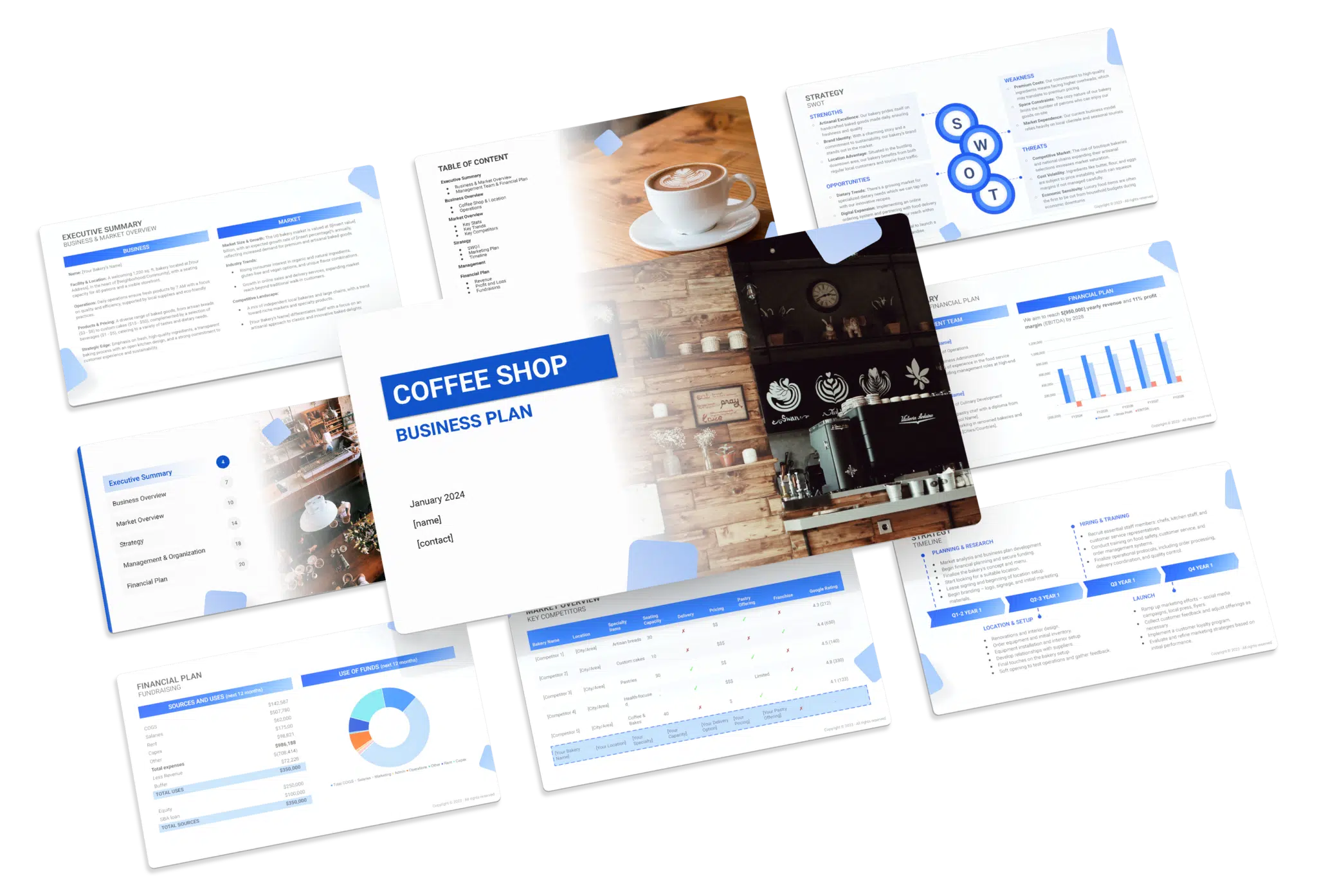
Creating a comprehensive business plan is crucial for launching and running a successful coffee shop. This plan serves as your roadmap, detailing your vision, operational strategies, and financial plan. It helps establish your coffee shop’s identity, navigate the competitive market, and secure funding for growth.
This article not only breaks down the critical components of a coffee shop business plan, but also provides an example of a business plan to help you craft your own.
Whether you’re an experienced entrepreneur or new to the food and beverage industry, this guide, complete with a business plan example, lays the groundwork for turning your coffee shop concept into reality. Let’s dive in!
Our coffee shop business plan is structured to cover all essential aspects needed for a comprehensive strategy. It outlines the shop’s operations, marketing strategy, market environment, competitors, management team, and financial forecasts.
- Executive Summary : Offers a quick look at your coffee shop idea, market research , your team, and money plans.
- Coffee Shop & Location: Talks about the design, special features, and why the spot is great for customers.
- Operations: Describes how your shop runs daily, like hours, staff roles, and your menu items with prices.
- Key Stats: Gives numbers on how big the coffee shop world is and what’s trending.
- Key Trends : Points out new things in coffee shops, like eco-friendly practices or tech for ordering.
- Key Competitors: Looks at other coffee places nearby and how your shop is different.
- SWOT: Lists strengths, weaknesses, opportunities, and risks for your shop.
- Marketing Plan : Ideas for getting the word out and keeping customers coming back.
- Timeline : Major steps and goals from starting up to the first year.
- Management: Highlights Info on your leading team and their roles.
- Financial Plan : Predicts financials for 5 years, like how much you’ll make, spend, and keep as profit.
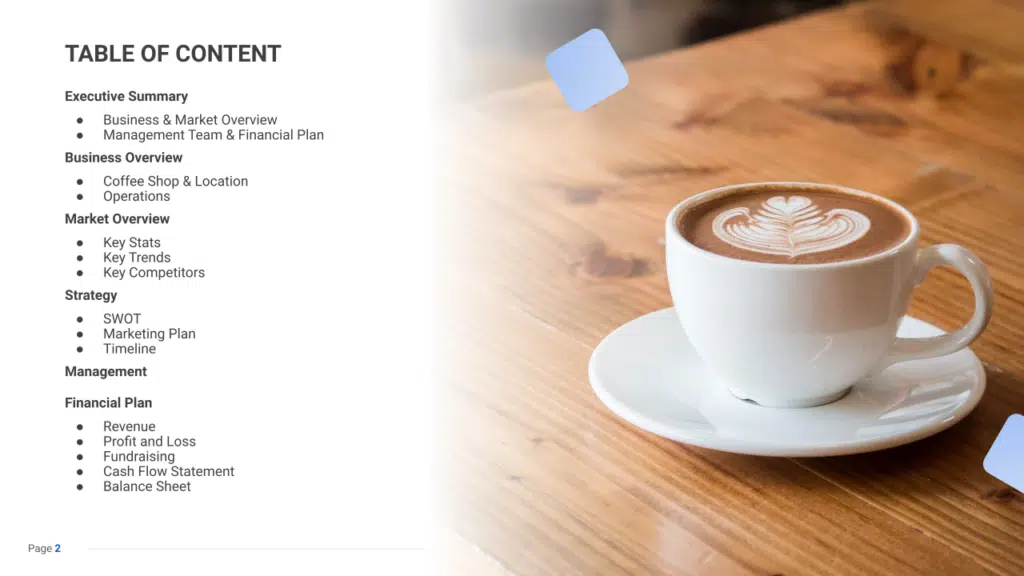
{{product_image|large}}
Coffee Shop Business Plan

Fully editable 30+ slides Powerpoint presentation business plan template.
Download an expert-built 30+ slides Powerpoint business plan template
{{product_image|medium}}
Executive Summary
The Executive Summary presents a concise overview of your coffee shop’s business plan, encapsulating the essence of your establishment and its offerings. It should articulate your market positioning, the variety of coffee and related products you offer, its location, size, and a brief on the daily operations.
This section should also delve into how your coffee shop will carve its niche within the local community, including an analysis of the number of direct competitors in the vicinity, identifying who they are, as well as highlighting your coffee shop’s unique selling points that set it apart from these competitors.
Moreover, information about the management and co-founding team should be included, elaborating on their roles and the value they bring to the coffee shop’s success. Additionally, a synopsis of your financial projections, including anticipated revenue and profits over the next five years, should be provided here to offer a clear view of your coffee shop’s financial strategy.
Coffee Shop Business Plan Executive Summary Example
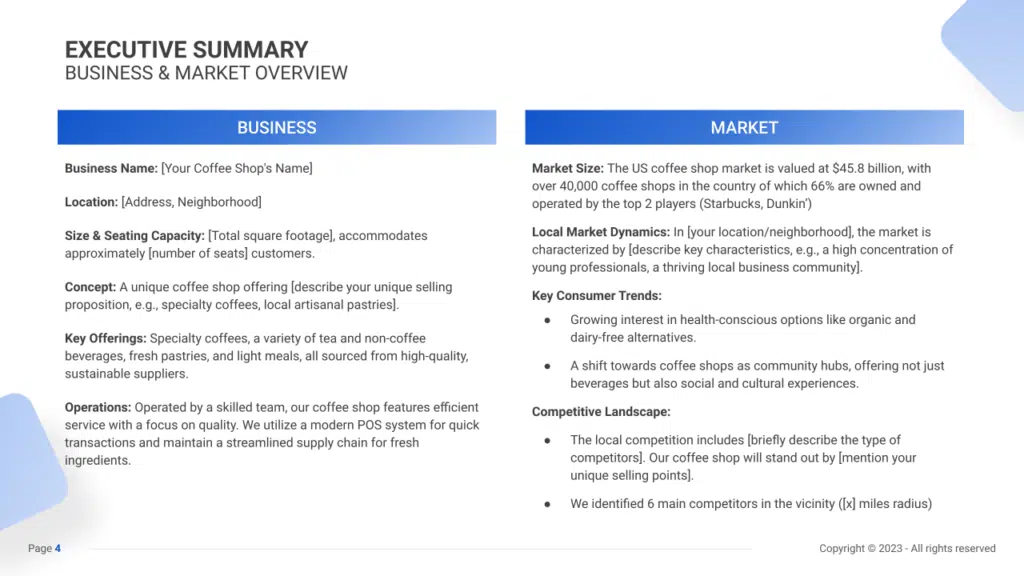
Business Overview
The business overview section should detail the coffee shop’s specific features, including its size, seating capacity, and concept. This is where you explain what makes your coffee shop unique, such as its focus on specialty coffees and local artisanal pastries, and how it operates.
Example: “Bean Haven,” located in the bustling Midtown area, spans 2,000 square feet and can seat 40 customers. It stands out with its range of gourmet coffees and fresh pastries, all sourced from local suppliers. The shop’s modern POS system ensures efficient service, enhancing the overall customer experience.
Market Overview
In this section, analyze the local and national coffee shop market. Discuss the size of the market, growth trends, and consumer preferences. This analysis should position your coffee shop within the broader industry context and highlight its potential to meet current consumer demands.
Example: Bean Haven enters a U.S. coffee shop market valued at $45.8 billion. In its neighborhood, known for a dense population of young professionals, Bean Haven’s focus on health-conscious options and its role as a community hub align with shifting consumer preferences, setting it apart from six main competitors in the area.
Management Team
This section outlines the experience and roles of your management team. Detail how their background and skills contribute to the success of the coffee shop.
Example: Bean Haven is led by a CEO with 10 years of experience in café management, overseeing daily operations and supply chain efficiency. The CFO, with a background in hospitality sector marketing, handles the shop’s financial strategies and marketing campaigns, ensuring robust business operations.
Financial Plan
Here, present your financial goals and projections. Include revenue targets and profit margins, providing a clear picture of your coffee shop’s financial aspirations and health.
Example: Bean Haven aims for $830,000 in annual revenue with an 11% EBITDA margin by 2028. This goal is supported by a focused approach on high-quality offerings, strategic marketing, and community engagement, positioning Bean Haven for success in the competitive market.
For a Coffee Shop, the Business Overview section can be neatly divided into 2 main slides:
Coffee Shop & Location
Talk about your coffee shop’s look and feel, highlighting cozy seats and nice lighting that make it welcoming. Mention its location, noting how easy it is to get there, like being close to shops or having easy parking. Explain why this spot is great for attracting customers.
Operations & Offerings
List the kinds of coffee and other items you sell, including snacks or light food. Discuss pricing, making sure it matches the quality of what you’re selling and suits your target customers . Share special features of your shop, such as using local products or offering unique coffee flavors. Mention any deals or events you have to keep customers coming back.
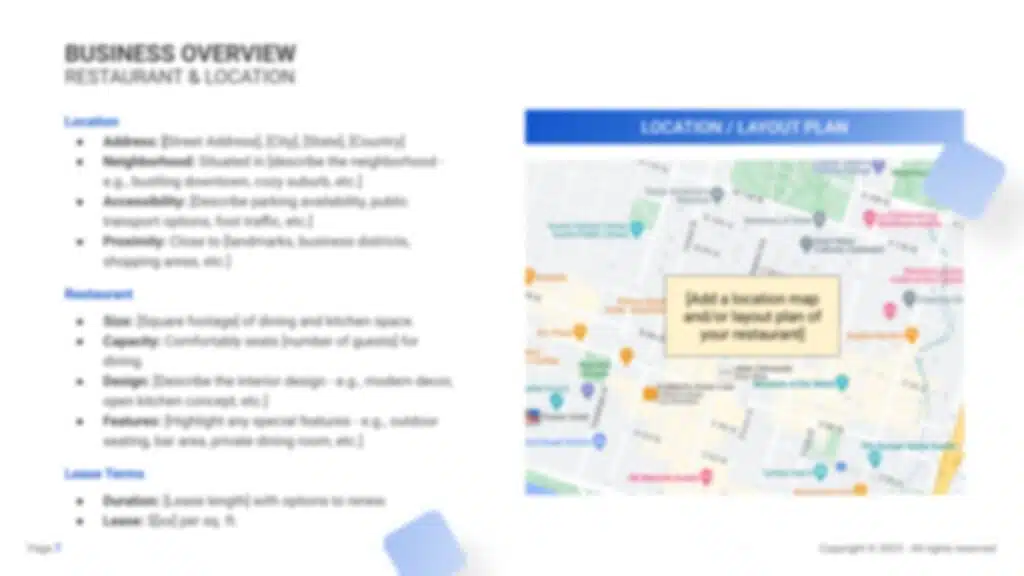
Industry Size & Growth
In the Market Overview of your coffee shop business plan, begin by exploring the size of the coffee industry and its potential for growth. This analysis is key to understanding the breadth of the market and pinpointing opportunities for expansion.
Key Market Trends
Next, discuss current trends in the coffee market, like the growing demand for specialty coffee, the appeal of ethically sourced and organic beans, and the innovation in coffee brewing techniques. Highlight the interest in offerings that cater to diverse preferences and dietary needs, such as plant-based milk options and artisanal blends, as well as the increasing importance of sustainability in the coffee industry.
Competitive Landscape
A competitive analysis is not just a tool for gauging the position of your coffee shop in the market; it’s also a fundamental component of your business plan.
This analysis helps identify your coffee shop’s unique selling points, which are essential for differentiating your business in a competitive market.
In addition, competitive analysis is integral in laying a solid foundation for your business plan. By examining various operational aspects of your competitors, you gain valuable information that ensures your business plan is robust, informed, and tailored to succeed in the current market environment.
Identifying Your Coffee Shop’s Competitors
The first step in conducting a competitive analysis for your coffee shop is identifying your direct and indirect competitors. Direct competitors include nearby coffeehouses or chains that offer similar services and products, while indirect competitors might encompass local juice bars, tea houses, or even convenience stores selling coffee.
Utilize tools like Google Maps to map out competitor locations and understand their distribution across your area. Online platforms like Yelp, Google Reviews, or social media channels provide invaluable insights into customer reviews and ratings, shedding light on competitor strengths and weaknesses . For instance, if a rival coffee shop receives praise for its artisanal coffee blends and cozy ambiance, it signifies a notable strength.
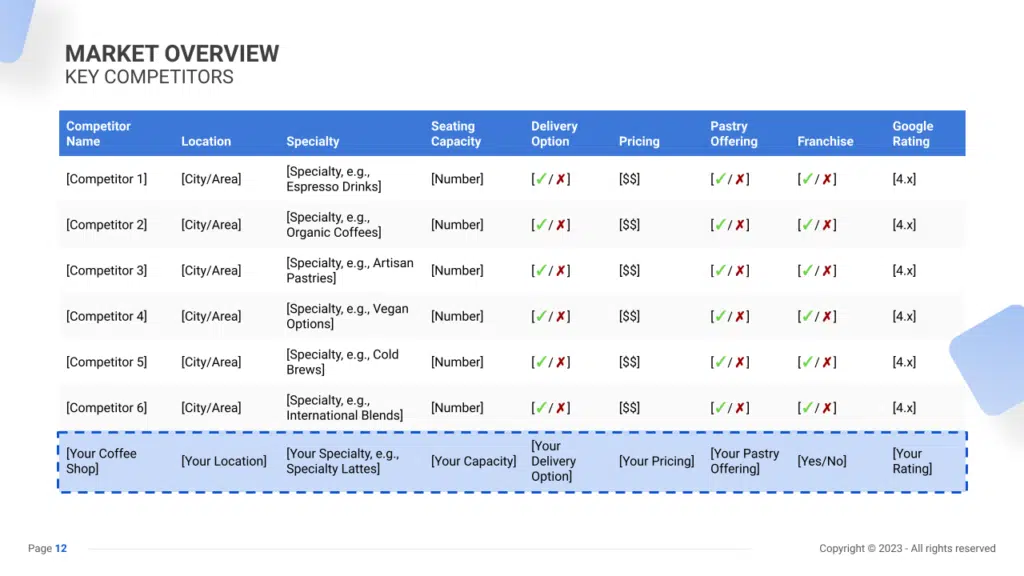
Coffee Shop Competitors’ Strategies
To gain a deeper understanding of the competitive landscape, analyze various facets of your competitors’ strategies:
- Coffee Menu Offerings: Assess the range and uniqueness of coffee offerings. For instance, if a local competitor, “Brew Masters,” is gaining traction with exotic single-origin coffees or specialty cold brews, it highlights a potential trend or gap in the market for distinctive coffee blends.
- Service and Ambiance: Consider the ambiance and customer service. Perhaps a competitor, “Sip & Chill Café,” is known for its relaxed atmosphere and friendly staff, enhancing the overall customer experience.
- Pricing Strategy : Compare your pricing with competitors. Are your coffee prices aligned with those of other local cafes, or do you position yourself as a premium establishment akin to “Gourmet Grinds,” offering artisanal blends at a higher price point?
- Marketing and Branding: Analyze how competitors market their brand. Do they rely heavily on social media campaigns, influencer collaborations, or community events? Understanding their marketing tactics can help refine your promotional strategies.
- Innovative Offerings and Technology: Look for innovative approaches. Are competitors embracing technology for online ordering or loyalty programs? For example, “TechBeans Café” might leverage an efficient app-based ordering system, catering to tech-savvy customers.
What’s Your Coffee Shop’s Value Proposition?
Defining your coffee shop’s unique value proposition is critical. Perhaps your establishment specializes in single-origin, ethically sourced beans, or you have a signature blend that customers rave about. Emphasize these unique offerings to distinguish your brand in the market.
Consider market gaps and evolving customer preferences. If there’s a growing preference for sustainable practices or an increasing demand for specific coffee types (organic, fair trade, etc.), tailoring your offerings to meet these needs can position your coffee shop favorably amidst competitors.
Tailoring your offerings to your location is essential. A coffee shop in a bustling business district might emphasize quick service and convenience for professionals on the go. At the same time, a suburban café could focus on creating a warm, family-friendly environment to attract locals seeking a relaxing spot for gatherings or leisurely coffee breaks.
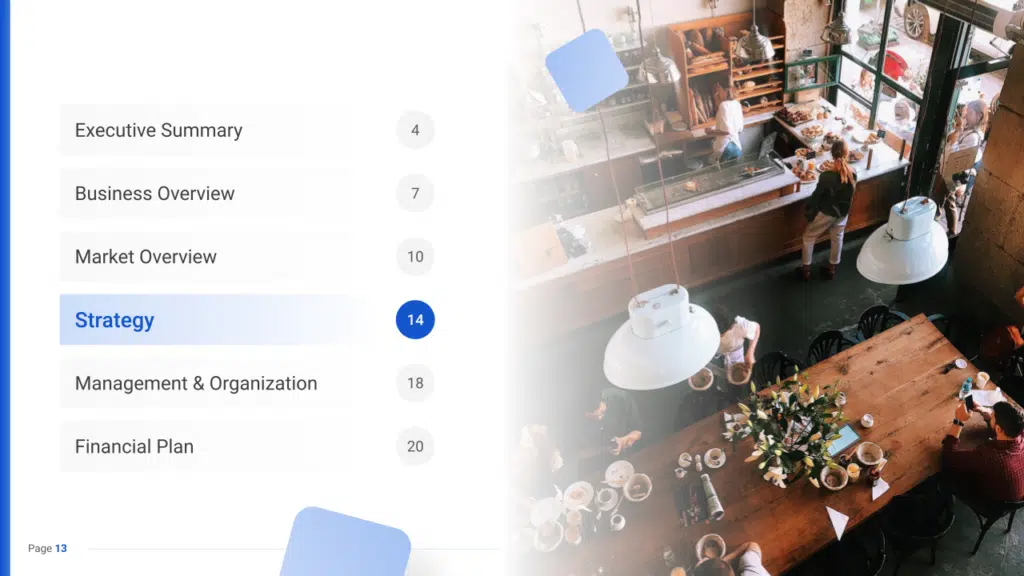
Start by doing a SWOT analysis for the coffee shop. Point out Strengths (like skilled baristas and a variety of coffee options), Weaknesses (such as high running costs or lots of competitors), Opportunities (for instance, more people wanting unique coffee experiences), and Threats (like economic changes that might reduce how much people spend on coffee).
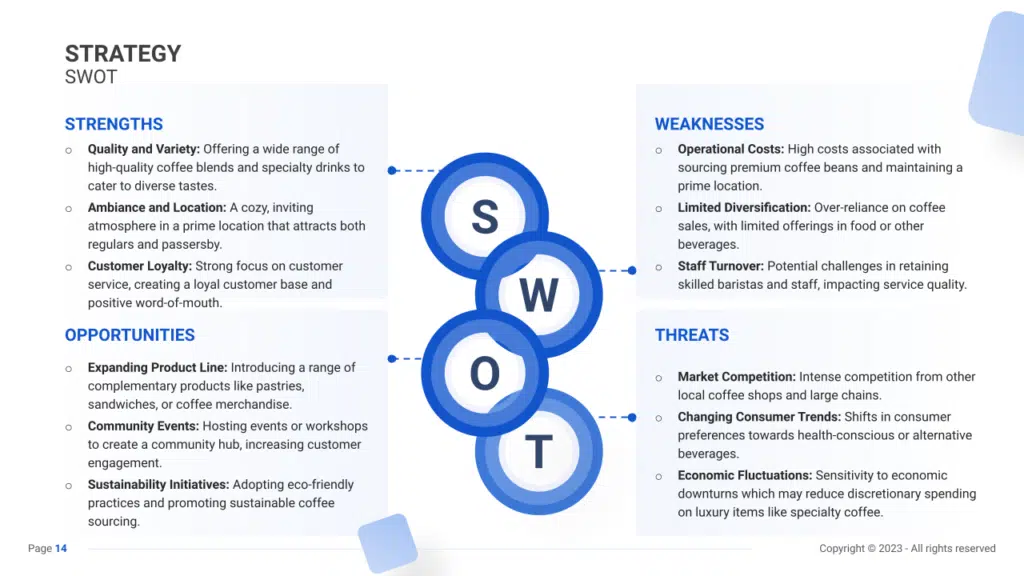
Marketing Plan
Then, make a marketing plan that shows how to draw in and keep customers. This could include ads aimed at the right people, deals to save money, an active and interesting online presence, and getting involved in the local area.
Marketing Channels
Utilize various marketing channels to reach and engage your audience effectively.
Digital Marketing
- Establish a Strong Online Presence: Leverage social media platforms like Instagram for visually appealing coffee shots, TikTok for engaging short videos, and Twitter/Facebook for engaging with customers and sharing updates.
- Email Marketing: Build an email list and send newsletters featuring new coffee blends, upcoming events, or promotions. Offer incentives for signing up, such as a discount on the first purchase.
- Website and SEO: Develop a user-friendly website showcasing your menu, the story behind each coffee blend, and a blog section for brewing tips or coffee-related content. Optimize for local SEO to attract nearby customers.
Local Advertising
Connect with the local community to increase foot traffic:
- Flyers and Local Print: Distribute eye-catching flyers in nearby offices, community centers, and partner businesses. Advertise in local newspapers or magazines to reach a broader audience.
- Community Engagement: Host events like cupping sessions, live music nights, or art exhibitions to create a gathering space. Partner with local artists, musicians, or charities to foster community connections.
- Partnerships: C ollaborate with neighboring businesses, such as bakeries, bookstores, or gyms, for cross-promotions or joint events.
Promotional Activities
Attract customers with enticing offers and loyalty programs:
- Special Deals: Launch seasonal or themed promotions to attract customers. For instance, during colder months, promote warm beverage options with discounts, or offer a summer-themed menu with refreshing iced coffees or specialty drinks.
- Loyalty Programs: Implement a rewards system where customers earn points for every purchase. These points can be redeemed for free drinks, merchandise, or even exclusive experiences. This encourages repeat business and fosters a sense of loyalty among customers.
- Referral Incentives: Encourage your existing customers to refer friends and family by offering incentives. This could be in the form of discounts or free beverages for successful referrals. Word-of-mouth remains a powerful tool in the coffee industry.
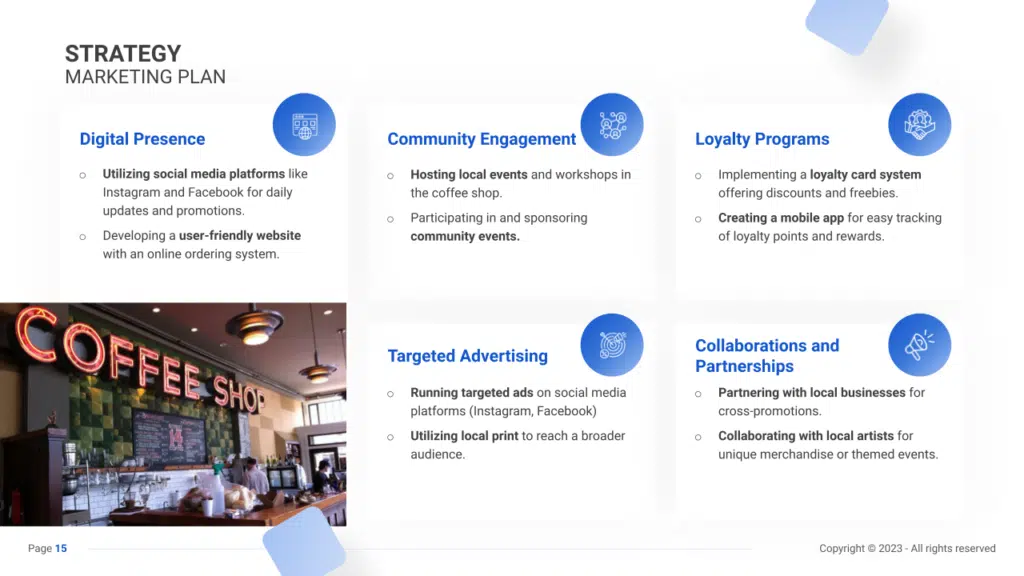
Sales Channels
Optimize sales channels to maximize revenue and customer satisfaction.

In-Store Upselling
Maximize each customer’s visit:
- Upsell Specialty Items: Train baristas to suggest specialty drinks, pastries, or merchandise based on customers’ preferences or current promotions.
- Merchandising: Display branded merchandise like travel mugs, brewing equipment, or specialty beans near the checkout counter to encourage additional purchases.
Subscription Services
Offer subscription-based models for regular income and customer retention:
- Coffee Delivery Subscription: Introduce a coffee delivery subscription service where customers receive their preferred coffee blends regularly at a discounted rate. Customize subscription options based on frequency and quantity to cater to diverse preferences.
- VIP Memberships: VIP memberships can provide exclusive benefits such as early access to new blends, members-only events, or personalized recommendations. These memberships create a sense of belonging and offer additional value to loyal customers.
Mobile Ordering and Pickup
Facilitate convenient ordering and pickup options:
- Mobile App Ordering: Develop a user-friendly mobile app that allows customers to browse your menu, place orders, and make payments seamlessly. Offer incentives such as loyalty points or app-exclusive deals, to encourage app usage.
- Curbside Pickup: Implement a curbside pickup option, allowing customers to order ahead and collect their beverages without leaving their vehicles. This convenience factor can attract busy individuals or those seeking contactless service.
Strategy Timeline
Lastly, set up a detailed timeline that marks important steps for the coffee shop’s start, marketing actions, growth in the number of customers, and goals for getting bigger. Make sure there’s a clear plan and goal for moving the business forward.

The Management section focuses on the coffee shop’s management and their direct roles in daily operations and strategic direction. This part is crucial for understanding who is responsible for making key decisions and driving the coffee shop toward its financial and operational goals.
For your coffee shop business plan, list the core team members, their specific responsibilities, and how their expertise supports the business.
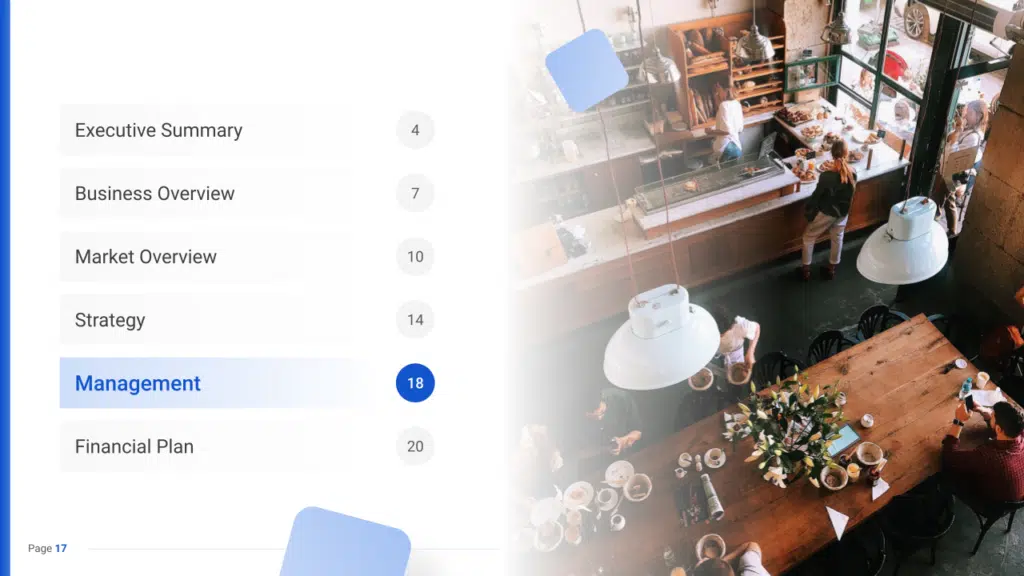
The Financial Plan section is a comprehensive analysis of your financial projections for revenue, expenses, and profitability. It lays out your coffee shop’s approach to securing funding, managing cash flow, and achieving breakeven.
This section typically includes detailed forecasts for the first 5 years of operation, highlighting expected revenue, operating costs and capital expenditures.
For your coffee shop business plan, provide a snapshot of your financial statement (profit and loss, balance sheet, cash flow statement), as well as your key assumptions (e.g. number of customers and prices, expenses, etc.).
Make sure to cover here _ Profit and Loss _ Cash Flow Statement _ Balance Sheet _ Use of Funds
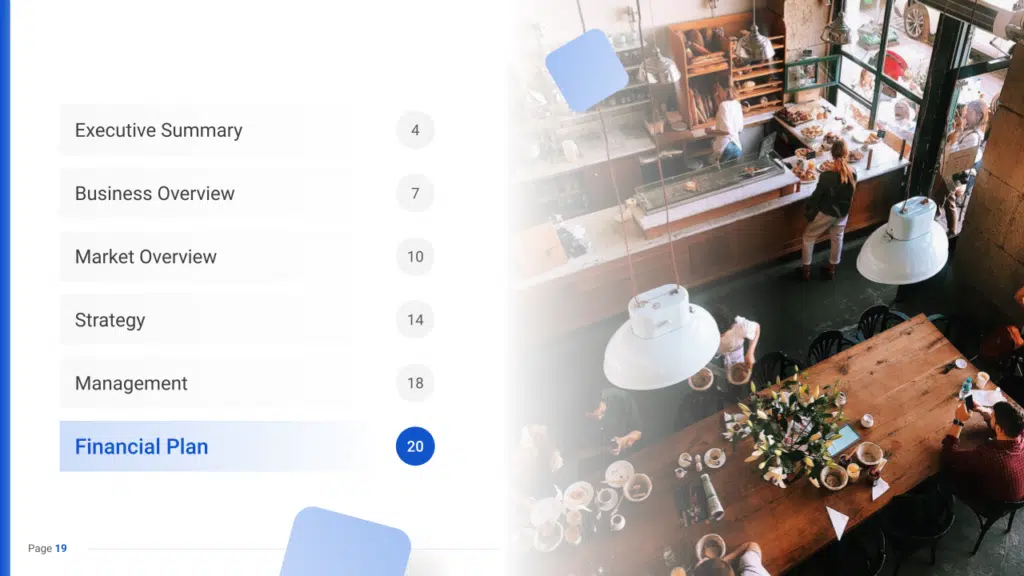
Related Posts

Steakhouse Business Plan Template & PDF Example
- July 24, 2024

Bubble Tea Business Plan Template & PDF Example

Bar Business Plan Template & PDF Example
Privacy Overview
| Cookie | Duration | Description |
|---|---|---|
| BIGipServerwww_ou_edu_cms_servers | session | This cookie is associated with a computer network load balancer by the website host to ensure requests are routed to the correct endpoint and required sessions are managed. |
| cookielawinfo-checkbox-advertisement | 1 year | Set by the GDPR Cookie Consent plugin, this cookie is used to record the user consent for the cookies in the "Advertisement" category . |
| cookielawinfo-checkbox-analytics | 11 months | This cookie is set by GDPR Cookie Consent plugin. The cookie is used to store the user consent for the cookies in the category "Analytics". |
| cookielawinfo-checkbox-functional | 11 months | The cookie is set by GDPR cookie consent to record the user consent for the cookies in the category "Functional". |
| cookielawinfo-checkbox-necessary | 11 months | This cookie is set by GDPR Cookie Consent plugin. The cookies is used to store the user consent for the cookies in the category "Necessary". |
| cookielawinfo-checkbox-others | 11 months | This cookie is set by GDPR Cookie Consent plugin. The cookie is used to store the user consent for the cookies in the category "Other. |
| cookielawinfo-checkbox-performance | 11 months | This cookie is set by GDPR Cookie Consent plugin. The cookie is used to store the user consent for the cookies in the category "Performance". |
| CookieLawInfoConsent | 1 year | Records the default button state of the corresponding category & the status of CCPA. It works only in coordination with the primary cookie. |
| elementor | never | This cookie is used by the website's WordPress theme. It allows the website owner to implement or change the website's content in real-time. |
| viewed_cookie_policy | 11 months | The cookie is set by the GDPR Cookie Consent plugin and is used to store whether or not user has consented to the use of cookies. It does not store any personal data. |
| Cookie | Duration | Description |
|---|---|---|
| __cf_bm | 30 minutes | This cookie, set by Cloudflare, is used to support Cloudflare Bot Management. |
| language | session | This cookie is used to store the language preference of the user. |
| Cookie | Duration | Description |
|---|---|---|
| _ga | 2 years | The _ga cookie, installed by Google Analytics, calculates visitor, session and campaign data and also keeps track of site usage for the site's analytics report. The cookie stores information anonymously and assigns a randomly generated number to recognize unique visitors. |
| _ga_QP2X5FY328 | 2 years | This cookie is installed by Google Analytics. |
| _gat_UA-189374473-1 | 1 minute | A variation of the _gat cookie set by Google Analytics and Google Tag Manager to allow website owners to track visitor behaviour and measure site performance. The pattern element in the name contains the unique identity number of the account or website it relates to. |
| _gid | 1 day | Installed by Google Analytics, _gid cookie stores information on how visitors use a website, while also creating an analytics report of the website's performance. Some of the data that are collected include the number of visitors, their source, and the pages they visit anonymously. |
| browser_id | 5 years | This cookie is used for identifying the visitor browser on re-visit to the website. |
| WMF-Last-Access | 1 month 18 hours 11 minutes | This cookie is used to calculate unique devices accessing the website. |
Coffee Shop Business Plan Template
Written by Dave Lavinsky
Business Plan Outline
- Coffee Shop Business Plan Home
- 1. Executive Summary
- 2. Company Overview
- 3. Industry Analysis
- 4. Customer Analysis
- 5. Competitive Analysis
- 6. Marketing Plan
- 7. Operations Plan
- 8. Management Team
- 9. Financial Plan
Coffee Shop Business Plan
Whether you are planning to start a new business or grow your existing coffee shop, you’ve come to the right place to create your coffee shop business plan.
We have helped over 100,000 entrepreneurs and business owners create business plans and many have used them to start or grow their coffee shops.
A coffee shop business plan is used to start and/or grow your business. Among other things, it outlines your business concept, identifies your target customers, presents your marketing plan and details your financial projections.
Sample Business Plan for a Cafe or Coffee Shop
Below are links to a sample of each of the key elements of a coffee shop business plan example:
- Executive Summary – The Executive Summary will provide an overview of your coffee shop business plan including highlights from each section.
- Company Overview – The Company Overview section provides a brief business description and history of your coffee business, as well as your business model, retail space location, and mission statement.
- Industry Analysis – The Industry Analysis leverages market research to provide an overview of the coffee industry, including trends, growth potential, and competition in the coffee market.
- Customer Analysis – The Customer Analysis section provides insights into the segments of your target market (i.e., business professionals, college students, etc.), including their needs and preferences, as well as how you plan to attract and retain them.
- Competitive Analysis – The Competitive Analysis section provides an opportunity for you to research other coffee shops in your area and identify their strengths and weaknesses. You will also detail your unique selling proposition (i.e., high-quality coffee, specialty coffees, welcoming atmosphere, etc.) for attracting new and repeat customers.
- Marketing Plan – The Marketing Plan offers a detailed marketing strategy for promoting your coffee shop to attract and retain customers, including advertising and social media marketing. It will also include your pricing structure for your products.
- Operations Plan – The Operations Plan includes information on the daily operations of your coffee shop, such as staffing, inventory management, and equipment.
- Management Team – The Management Team section introduces the key players in your coffee shop, their roles and responsibilities, and their relevant skills and experience.
- Financial Plan – The Financial Plan will provide detailed projections for the financial performance of your coffee shop, including startup costs, operating costs, revenue, and expenses. This section should include an income statement, balance sheet and cash flow statement.
Next Section: Executive Summary >
Coffee Shop Business Plan FAQs
What is a coffee shop business plan.
A coffee shop business plan is a plan to start and/or grow your business. Among other things, it includes your company overview, allows you to conduct a market analysis to identify your target market, includes a sample menu, presents your marketing plan and pricing strategy to attract your local customer base, details your sales forecasts, and provides the income statement, balance sheet and cash flow statement for your coffee shop.
You can easily complete your coffee shop business plan using our Business Plan Template for a Coffee Shop here .
What Are the Main Types of Coffee Shops?
The different types of coffee shops include cafes, coffee bars and coffeehouses that sell coffee drinks and other snacks. Some coffee shops offer lunch and dinner menus and are close to being full-service restaurants. There are also coffee shops that are more accessible for people on the go or those who want to make their own coffee. These are retail coffee shops, drive thru coffee shops, coffee carts and trucks, and roasters or retailers.
What Are the Main Sources of Revenue and Operating Expenses for a Coffee Shop?
The primary source of revenue for many coffee shops come from its food and drink sales, which includes brewed coffee, coffee beans, seasonal drinks and refreshments, and baked goods. Gift card and merchandise sales like tumblers, mugs, and coffee makers also contribute to a coffee shop’s revenue stream.
The expected expenses for a coffee shop are the cost of coffee and food products, salaries and wages, rent, and advertising costs.
How Much Does it Cost to Start a Coffee Shop?
Opening a coffee shop business can cost anywhere from $40,000 to $100,000 depending on the size and location of the business. Additional costs such as inventory, employee salaries, and marketing expenses can range from $5,000 to $15,000 per month.
How Do You Get Funding for Your Coffee Shop Business?
The best way to get funding for a coffee shop business is through a bank loan or utilizing your personal savings, business credit cards or borrowing from friends and family. You can also look into government grants or loans, or try to find a partner who is willing to invest in your business. Whatever route you choose, be sure to have a solid coffee shop business plan for potential investors including a sales and marketing plan as well as a realistic idea of how much money you need to get started.
How to Start a Coffee Shop?
- Determine the type of coffee shop business you want to open . There are many different types of coffee shops, from small mom-and-pop shops to large chains.
- Create a coffee shop business plan. This will outline your plans for starting and running your coffee shop.
- Secure funding . You will need money to start and run a coffee shop, so you'll need to find investors or borrow money from a bank or other lending institution.
- Find a location for your coffee shop. This can be tricky, as you'll need to find a space that is affordable and has good foot traffic.
- Equip your coffee shop . You'll need to buy or lease equipment such as espresso machines, coffee brewers, and furniture in addition to the coffee beans and other food products you plan to sell.
- Hire staff . You'll need employees to run your coffee shop, so post job ads and interview potential candidates.
Learn more about how to start a successful coffee shop business:
- How to Start a Coffee Shop Business
Where Can I Get a Coffee Shop Business Plan PDF?
You can download our free coffee shop business plan template PDF . This free coffee shop business plan template can be used to write your own business plan.
Don't bother with copy and paste.
Get this complete sample business plan as a free text document.
Coffee Shop Business Plan
Start your own coffee shop business plan
Java Culture
Executive summary executive summary is a brief introduction to your business plan. it describes your business, the problem that it solves, your target market, and financial highlights.">, opportunity.
People near the University of Oregon need not just coffee and tea, or pastries and snacks, but also a place to meet comfortably, have a group discussion, or just sit quietly, work, and read. That is available now near the University of Oregon campus, but too crowded too often, and not the right combination of factors for everybody.
Java Culture coffee bar is determined to become a daily necessity for local coffee addicts, a place to dream of as you try to escape the daily stresses of life and just a comfortable place to meet your friends or to read a book, all in one.
Java Culture will focus its marketing activities on reaching the University students and faculty, people working in offices located close to the coffee bar and on sophisticated teenagers. Our market research shows that these are the customer groups that are most likely to buy gourmet coffee products. Since gourmet coffee consumption is universal across different income categories and mostly depends on the level of higher education, proximity to the University of Oregon campus will provide access to the targeted customer audience.
Competition
Java Culture’s direct competitors will be other coffee bars located near the University of Oregon campus. These include Starbucks, Cafe Roma, The UO Bookstore, and other Food service establishments that offer coffee.
Great coffee, pastries, additional options for tea etc, very welcoming atmosphere, good wireless, desk space, comfortable chairs and tables, good pastries, a location close to the university campus.
Expectations
We plan to grow as shown in the chart below, taken from our sales forecast. We aim to maintain an industry-standard 60% gross profit margin and reasonable operating expenses, and to produce reasonable profits in the second and third year.
Financial Highlights by Year
Financing needed.
The owners will invest $140,000 and take out a bank loan for $30,000 to cover the start-up expenses and assets needed plus deficient spending in the early months.
The start-up expenses of $27,000 include:
- Legal expenses for obtaining licenses and permits as well as the accounting services totaling $1,300.
- Marketing promotion expenses for the grand opening of Java Culture in the amount of $3,500 and as well as flyer printing (2,000 flyers at $0.04 per copy) for the total amount of $3,580.
- Consultants fees of $3,000 paid to ABC Espresso Services <name changed> for the help with setting up the coffee bar.
- Insurance (general liability, workers’ compensation and property casualty) coverage at a total premium of $2,400.
- Pre-paid rent expenses for one month at $1.76 per square feet in the total amount of $4,400.
- Premises remodeling in the amount of $10,000.
- Other start-up expenses including stationery ($500) and phone and utility deposits ($2,500).
These expenses will be incurred before launch, so they take their place in our financial projections as negative retained earnings of $27,680 at the end of the month before we begin. That number shows up in the balance sheet.
The required start-up assets of $143,000 include:
- Cash in the bank in the total amount of $67,000, which includes enough to cover employees and owner’s salaries of $23,900 for the first two months and cash reserves for the first three months of operation (approximately $14,400 per month).
- Coffee beans (12 regular brands and five decaffeinated brands) – $6,000
- Coffee filters, baked goods, salads, sandwiches, tea, beverages, etc. – $7,900
- Retail supplies (napkins, coffee bags, cleaning, etc.) – $1,840
- Office supplies – $287
- Espresso machine – $6,000
- Coffee maker – $900
- Coffee grinder – $200
- Food service equipment (microwave, toasters, dishwasher, refrigerator, blender, etc.) – $18,000
- Storage hardware (bins, utensil rack, shelves, food case) – $3,720
- Counter area equipment (counter top, sink, ice machine, etc.) – $9,500
- Serving area equipment (plates, glasses, flatware) – $3,000
- Store equipment (cash register, security, ventilation, signage) – $13,750
- Office equipment (PC, fax/printer, phone, furniture, file cabinets) – $3,600
- Other miscellaneous expenses – $500
Funding for the company comes from two major sources–owners’ investments and bank loans. Two major owners, Arthur Garfield and James Polk, have contributed $70,000 and $30,00 respectively. All other investors have contributed $40,000, which brings the total investments to $140,000. The remaining $30,000 needed to cover the start-up expenses and assets came from the two bank loans–a one-year loan in the amount of $10,000 and a long-term (five years) loan of $20,000. Both loans were secured through the Bank of America. Thus, total start-up loss is assumed in the amount of $27,000.
The amounts show up in the balance sheet in the month prior to opening. The $140,000 investment shows up as Paid-in Capital. The $27,000 expenses show up as negative retained earnings. Assets and liabilities are there. This is all according to financial standards.
Problem & Solution
Problem worth solving.
People near the University of Oregon need not just coffee and tea, or pastries and snacks, but also a place to meet comfortably, have a group discussion, or just sit quietly, work, and read. That is available now near the University of Oregon campus, but too crowded too often, and not the right combination of factors for everybody.
Our Solution
Java Culture will make its best effort to create a unique place where customers can socialize with each other in a comfortable and relaxing environment while enjoying the best brewed coffee or espresso and pastries in town. We will be in the business of helping our customers to relieve their daily stresses by providing piece of mind through great ambience, convenient location, friendly customer service, and products of consistently high quality. Java Culture will invest its profits to increase the employee satisfaction while providing stable return to its shareholders.
Target Market
Market size & segments.
Coffee consumption has shown a steady 2.5% growth rate in the United States over the last decade. The retail coffee industry is flourishing in the U.S. Pacific Northwest. The local climate, with a long rainy season, is very conducive for the consumption of hot non-alcoholic beverages. At the same time, hot dry summers drive people into cafes to order iced drinks. Furthermore, coffee has really become a part of the lifestyle in the Pacific Northwest. Its discerning coffee drinkers are in favor of well-prepared, strong coffee-based beverages, which they can consume in a relaxing environment.
More specifically, the University of Oregon as close to 25K students and another 5-10K faculty and staff. And it is embedded in the Eugene, OR community of 200K people. Our main market will be students, faculty, staff, and nearby residents. But the campus area is a hub for the community and will attract other customers.
Current Alternatives

Our Advantages
Java Culture will cater to people who want to get their daily cup of great-tasting coffee in a relaxing atmosphere. Such customers vary in age, although our location close to the University campus means that most of our clientele will be college students and faculty. Our market research shows that these are discerning customers that gravitate towards better tasting coffee. Furthermore, a lot of college students consider coffee bars to be a convenient studying or meeting location, where they can read or meet with peers without the necessity to pay cover charges. For us, this will provide a unique possibility for building a loyal client base.
Keys To Success
The keys to success will be:
- Store design that will be both visually attractive to customers, and designed for fast and efficient operations.
- Employee training to insure the best coffee preparation techniques.
- Marketing strategies aimed to build a solid base of loyal customers, as well as maximizing the sales of high margin products, such as espresso drinks.
Marketing & Sales
Marketing plan.
Java Culture will position itself as unique coffee bar where its patrons can not only enjoy a cup of perfectly brewed coffee but also spend their time in an ambient environment. Comfortable sofas and chairs, dimmed light and quiet relaxing music will help the customers to relax from the daily stresses and will differentiate Java Culture from incumbent competitors.
In order to build up its client base, Java Culture will use some strategic banners and fliers during the launch period, utilize customer referrals and cross-promotions with other businesses in the community from time to time, and loyalty programs that work with android and IOS and other mobile phones, which is the preference of our market.
Our main thrust will be getting people to know, like, and trust us with content and engagement in Facebook, Instagram, Snapchat, and Twitter. We intend to maintain social media presences that are light on self-serving promotional quasi-advertising content, heavy on community participation, content, and engagement.
Java Culture baristas will handle the sales transactions. To speed up the customer service, at least two employees will be servicing clients–while one employee will be preparing the customer’s order, the other one will be taking care of the sales transaction. All sales data logged on the computerized point-of-sale terminal will be later analyzed for marketing purposes.
Locations & Facilities
Java Culture coffee bar will be located on the ground floor of the commercial building at the corner of West 13th Avenue and Patterson Street in Eugene, OR. The company has secured a one-year lease of the vacant 2,500 square feet premises previously occupied by a hair salon. The lease contract has an option of renewal for three years at a fixed rate that Java Culture will execute depending on the financial strength of its business.
The floor plan will include a 200 square feet back office and a 2,300 square feet coffee bar, which will include a seating area with 15 tables, a kitchen, storage area and two bathrooms. The space in the coffee bar will be approximately distributed the following way–1,260 square feet (i.e., 55% of the total) for the seating area, 600 square feet (26%) for the production area, and the remaining 440 square feet (19%) for the customer service area.
This property is located in a commercial area within a walking distance from the University of Oregon campus on the corner of a major thoroughfare connecting affluent South Eugene neighborhood with the busy downtown commercial area. The commercially zoned premises have the necessary water and electricity hookups and will require only minor remodeling to accommodate the espresso bar, kitchen and storage area. The coffee bar’s open and clean interior design with modern wooden decor will convey the quality of the served beverages and snacks, and will be in-line with the establishment’s positioning as an eclectic place where people can relax and enjoy their cup of coffee. The clear window displays, through which passerby will be able to see customers enjoying their beverages, and outside electric signs will be aimed to grab the attention of the customer traffic.
Milestones & Metrics
Milestones table.
| Milestone | Due Date | Who’s Responsible | |
|---|---|---|---|
| Sept 13, 2018 | |||
| Sept 14, 2018 | Marketing | ||
| Sept 18, 2018 | Team | ||
| Apr 16, 2019 | team |
Key Metrics
We have our forecasts for sales, direct costs, and operating expenses. As we get into the business we’ll develop standards based on experience for Facebook likes, Twitter follows, and other social media engagement. We expect to watch these very carefully.
Ownership & Structure
Java Culture is majority-owned by Arthur Garfield and James Polk. Mr. Garfield holds a Bachelor’s Degree in Business Administration from the University of ZYX. He’s worked for several years as an independent business consultant. Previously, he owned the ABC Travel Agency, which he profitably sold four years ago. Mr. Garfield has extensive business contacts in Oregon that he will leverage to help his new venture succeed. Mr. Polk has a Bachelor’s Degree in Psychology from the XYZ State University. For the last five years he has worked as a manager of DEF Ristorante, a successful Italian restaurant in Portland, OR. Under Mr. Polk’s management, the restaurant has consistently increased sales while maintaining a lower than average level of operating expenses.
Investors will not be involved into the daily management decisions at Java Culture. They will hire a professional manager who will oversee all the coffee bar operations. Three full-time baristas will be in charge of coffee preparation. They will hire two more part-time employees to fulfill the staffing needs. In the second and third year of operation will add additional employees if and when needed.
Management Team
A full-time manager will be hired to oversee the daily operations at Java Culture. The candidate (who’s name is withheld due to his current employment commitment) has had three years of managerial experience in the definitely industry in Oregon. This person’s responsibilities will include managing the staff, ordering inventory, dealing with suppliers, developing a marketing strategy and perform other daily managerial duties. We believe that our candidate has the right experience for this role. A profit-sharing arrangement for the manager may be considered based on the first year operational results.
Personnel Table
| FY2019 | FY2020 | FY2021 | |
|---|---|---|---|
| Manager | $60,000 | $66,000 | $72,600 |
| Baristas (3) | $90,000 | $94,500 | $99,225 |
| Other employees (2) | $43,200 | $45,360 | $47,628 |
| Totals | $193,200 | $205,860 | $219,453 |
Financial Plan investor-ready personnel plan .">
Key assumptions.
- We assume a steadily growing potential market in line with growth at the university, trends.
- We assume industry standard gross margins
- We assume relative status quo regarding technology and trends in the coffee industry
Revenue by Month
Expenses by month, net profit (or loss) by year, use of funds.
The start-up expenses include an estimated $17,000 consisting of several items:
- Legal expenses for obtaining licenses and permits as well as the accounting services totaling $1,500.
- Insurance (general liability, workers’ compensation and property casualty) coverage at a total premium of $1,500.
- Other start-up expenses including website ($4,000) and phone and utility deposits ($2,500).
The required start-up assets of $71,000 include:
- Plates, glasses, etc. worth approximately $2,000
- Espresso machine
- Coffee maker
- Coffee grinder
- Food service equipment (microwave, toasters, dishwasher, refrigerator, blender, etc.)
- Storage hardware (bins, utensil rack, shelves, food case)
- Counter area equipment (counter top, sink, ice machine, etc.)
- Serving area equipment (plates, glasses, flatware)
- Store equipment (cash register, security, ventilation, signage)
- Office equipment (PC, fax/printer, phone, furniture, file cabinets)
- Other miscellaneous expenses
Sources of Funds
Projected profit & loss.
| FY2019 | FY2020 | FY2021 | |
|---|---|---|---|
| Revenue | $561,010 | $654,500 | $743,000 |
| Direct Costs | $224,404 | $261,800 | $297,200 |
| Gross Margin | $336,606 | $392,700 | $445,800 |
| Gross Margin % | 60% | 60% | 60% |
| Operating Expenses | |||
| Salaries & Wages | $193,200 | $205,860 | $219,453 |
| Employee Related Expenses | $38,640 | $41,172 | $43,891 |
| Rent | $36,000 | $38,000 | $42,000 |
| Marketing | $28,051 | $32,725 | $37,150 |
| Utilities, phones, Internet etc. | $6,000 | $6,000 | $6,000 |
| Total Operating Expenses | $301,891 | $323,757 | $348,493 |
| Operating Income | $34,716 | $68,943 | $97,306 |
| Interest Incurred | $951 | $583 | $427 |
| Depreciation and Amortization | $12,000 | $12,000 | $12,000 |
| Gain or Loss from Sale of Assets | |||
| Income Taxes | $3,265 | $8,454 | $12,732 |
| Total Expenses | $542,511 | $606,593 | $670,853 |
| Net Profit | $18,499 | $47,907 | $72,147 |
| Net Profit/Sales | 3% | 7% | 10% |
Projected Balance Sheet
| Starting Balances | FY2019 | FY2020 | FY2021 | |
|---|---|---|---|---|
| Cash | $67,000 | $80,234 | $133,240 | $214,467 |
| Accounts Receivable | $0 | $0 | $0 | $0 |
| Inventory | $16,000 | $21,815 | $24,765 | $24,765 |
| Other Current Assets | ||||
| Total Current Assets | $83,000 | $102,048 | $158,005 | $239,232 |
| Long-Term Assets | $60,000 | $60,000 | $60,000 | $60,000 |
| Accumulated Depreciation | ($12,000) | ($24,000) | ($36,000) | |
| Total Long-Term Assets | $60,000 | $48,000 | $36,000 | $24,000 |
| Total Assets | $143,000 | $150,048 | $194,005 | $263,232 |
| Accounts Payable | $0 | $0 | $0 | |
| Income Taxes Payable | $2,232 | $2,116 | $3,184 | |
| Sales Taxes Payable | $0 | $0 | $0 | |
| Short-Term Debt | $13,683 | $3,833 | $3,989 | $4,152 |
| Prepaid Revenue | ||||
| Total Current Liabilities | $13,683 | $6,065 | $6,105 | $7,336 |
| Long-Term Debt | $16,317 | $12,484 | $8,495 | $4,343 |
| Long-Term Liabilities | $16,317 | $12,484 | $8,495 | $4,343 |
| Total Liabilities | $30,000 | $18,549 | $14,600 | $11,679 |
| Paid-In Capital | $140,000 | $140,000 | $140,000 | $140,000 |
| Retained Earnings | ($27,000) | ($27,000) | ($8,501) | $39,406 |
| Earnings | $18,499 | $47,906 | $72,148 | |
| Total Owner’s Equity | $113,000 | $131,499 | $179,406 | $251,553 |
| Total Liabilities & Equity | $143,000 | $150,048 | $194,005 | $263,232 |
Projected Cash Flow Statement
| FY2019 | FY2020 | FY2021 | |
|---|---|---|---|
| Net Cash Flow from Operations | |||
| Net Profit | $18,499 | $47,907 | $72,147 |
| Depreciation & Amortization | $12,000 | $12,000 | $12,000 |
| Change in Accounts Receivable | $0 | $0 | $0 |
| Change in Inventory | ($5,815) | ($2,950) | $0 |
| Change in Accounts Payable | $0 | $0 | $0 |
| Change in Income Tax Payable | $2,232 | ($116) | $1,068 |
| Change in Sales Tax Payable | $0 | $0 | $0 |
| Change in Prepaid Revenue | |||
| Net Cash Flow from Operations | $26,917 | $56,840 | $85,216 |
| Investing & Financing | |||
| Assets Purchased or Sold | |||
| Net Cash from Investing | |||
| Investments Received | |||
| Dividends & Distributions | |||
| Change in Short-Term Debt | ($9,850) | $156 | $163 |
| Change in Long-Term Debt | ($3,833) | ($3,989) | ($4,152) |
| Net Cash from Financing | ($13,683) | ($3,833) | ($3,989) |
| Cash at Beginning of Period | $67,000 | $80,234 | $133,240 |
| Net Change in Cash | $13,234 | $53,007 | $81,226 |
| Cash at End of Period | $80,234 | $133,240 | $214,467 |

The quickest way to turn a business idea into a business plan
Fill-in-the-blanks and automatic financials make it easy.
No thanks, I prefer writing 40-page documents.

Discover the world’s #1 plan building software
4 simple steps to the coffee you'll love
- Light Mild and flavourful
- Medium Evenly balanced
- Dark Punchy and bittersweet
Finding your perfect blend
Have an account?
Log in to check out faster.
FREE SHIPPING ON ORDERS OVER $50
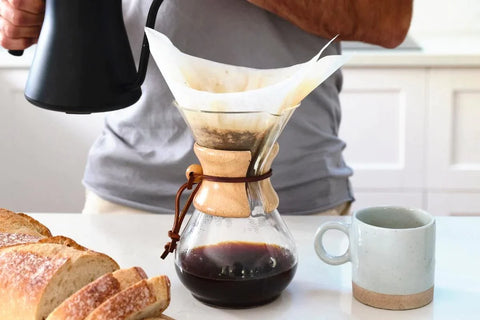
How to write a cafe business plan
Cafe business plans are boring.
No one likes writing them, very few people even want to read them…but they can be vital for the success of a new business.
Why? Because as you write down your plans on a page, the process makes you to think critically about the how viable your concept really is.
There are a lot of long, technical business plan templates out there. This is not one of them. This is a simple, practical cafe business plan template for everyday humans.
Cafe Business Plan Kit
Enter your email and we'll instantly send you a link to download our business plan kit, as well as a other cafe business resources.
Jump to a section in this article
A good business plan should make you answer hard questions like:
- How are you really going to be different from your competitors?
- Where are your customers going to come from?
- How much money do you need to get started? (and then stay afloat for the first year)
- What sales & profit are you projecting over the first 3 years?
Start with your goals
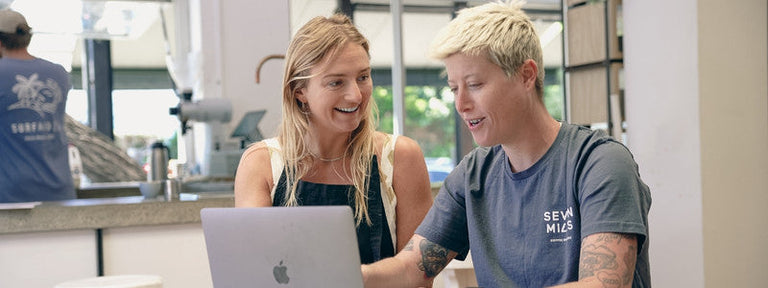
Start by answering the most important, and often most difficult question: why are you doing this?
Some people are in it for the money, some are buying themselves a new career, some just want to see their vision become a reality. Your specific goals could also include how you’ll impact the community, your family (like time off) and a whole lot more.
Ultimately, you want to communicate what success looks like to you.
While you’re at it, I think it’s also wise to at least think about an exit plan. I know that seems like the opposite of what you should be doing right now, but having a strategy for selling or expanding your business will be a big deal in years to come. Some questions to ask all the partners involved in the business are: Is this for life, or are we planning to sell at some stage? How many years before we take a look at our options?
Marketing Plan: Who is this business for?
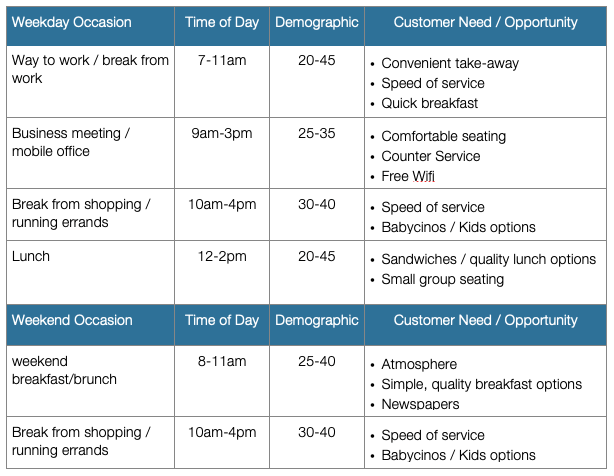
The most effective businesses are designed with specific customers in mind. The more specific you get, the more you can focus the plan on what they want. The example above (from the business plan template) breaks down customers into segments based on who they are (demographics) and what “occasion” (time of day, circumstance) you can fulfil. Now we have an idea of who they are, let’s have a look at what the competition is doing.
Your Competition & Competitive Advantage
If you already have an exact location lined up, go ahead and take a look at which customer segments your closest competitors are looking after.
Be honest, most businesses have something and someone they’re just right for. Find out what it is and compare it to the segments you're targeting.
Identify those things that you can focus on to help you stand out. Remember, you don’t have to please everyone, but you do need to be completely amazing for the customers you’re targeting.
Once, you really understand your customer & your competitive advantage you’re off to a great start. The marketing plan should also include:
- Pricing Strategy
- Promotions & Advertising Strategy
- S.W.O.T. Analysis – that is, the strengths, weaknesses, opportunities & threats of your business concept
- Branding & Store Design Strategy
Once you've got the fundamentals of your marketing strategy in place, take a look at our list of 12 cafe marketing ideas that can help give you some inspiration for specific tactics & promotions
Operations Plan
How are you going to run this thing?
Yes, you need to cover mind numbing details like:
- Business structure - company, partnership, sole trader, etc)
- Approvals / Registrations Needed – Development Approvals, Outdoor dining permit, etc
- Trading hours
- Opening date
But the big one for a cafe business is Location & Lease…
Location & Lease Strategy
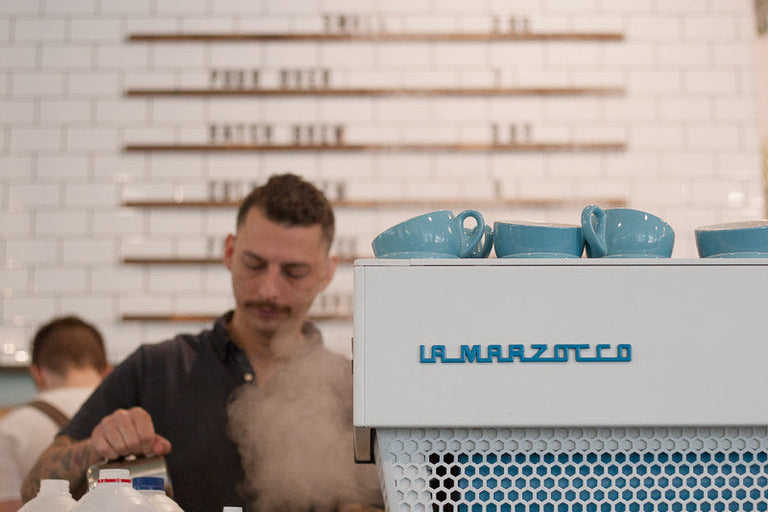
Now if you’ve already signed a lease there’s not a lot to see here. Just outline the detail of the site and the basic lease terms.
In your plan, include a basic shopping list for your ideal site. Here’s an example from the cafe business plan template We are seeking a 100-150m2 retail lease with street frontage. The site will have high passing foot traffic drawing from a mix of office workers & local residents. We are seeking minimum lease terms of 3 years + a 3 year option to allow a return on investment.
You can something like this to talk with brokers & real estate agents. It gives both you and them something to focus your search.

Who do you need to make this happen?
Ask any experienced cafe owner, the number one thing keeping them up at night is staff.
Now is the right time to think through who you need & what skills they need to bring. You should also make it clear what sort of hours & skills both you (and your business partners) are going to contribute.

How much is it going to cost to get started? How are you going to make money after that? The plan should include a Profit & Loss Statement (also called an 'Income Statement') – ideally over 3 years. Budget for opening costs. Including fit-out, equipment, stock & working capital.Where the money is coming from. Savings, loans, leasing, your parents...
Yes, forecasting sales is hard, even hospitality veterans get it wrong, but it’s important that you try. You can start with benchmarks & examples from other cafe businesses (a sample is included in the business plan kit) – but it’s wise to run your numbers by people who have done it before. They can provide a reality check based on your plan and location.
Ready to find out more about opening a café? Check out our step-by-step guide to opening a coffee shop - or take a look at our guide to buying a cafe.
- Choosing a selection results in a full page refresh.
- Opens in a new window.
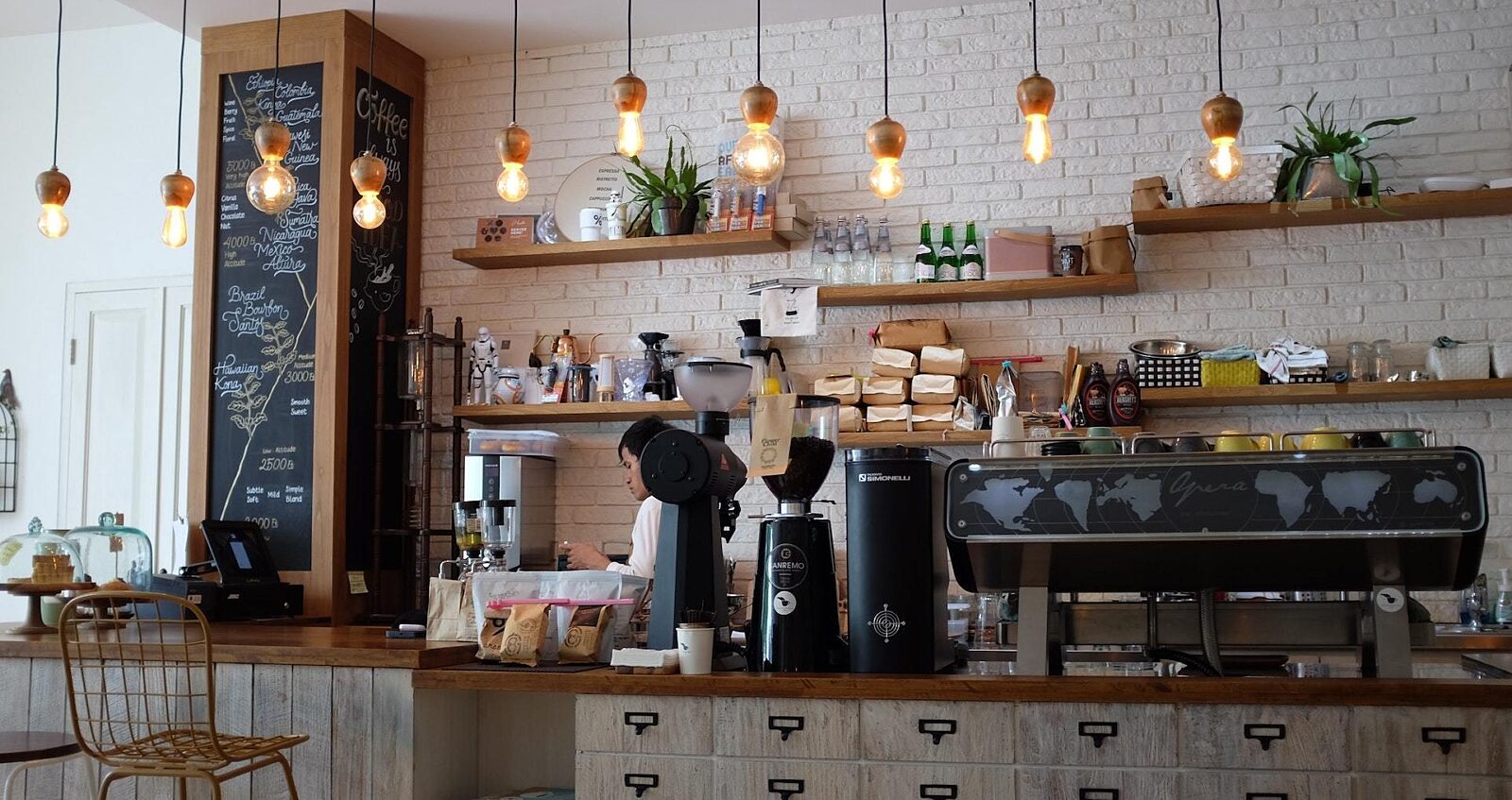
How to Write a Coffee Shop Business Plan
Are you imagining a cozy, busy coffee shop or a minimal, elegant ambiance? Define your coffee shop visions and help make them come true with this business plan template.
Tyler Martinez Author
Tyler Martinez
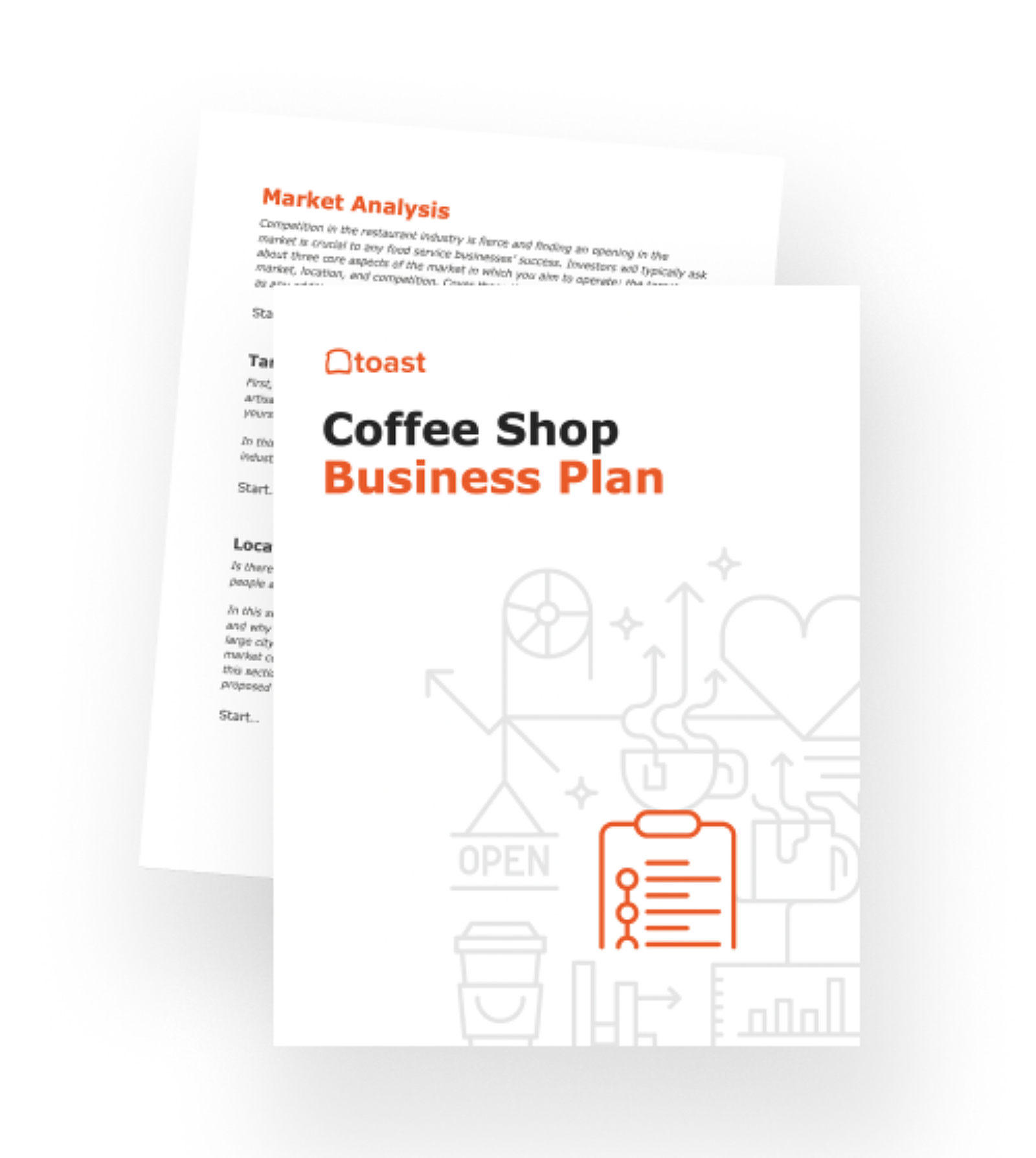
Coffee Shop Business Plan Template
Use this free coffee shop business plan template to easily create a great business plan that organizes your vision and helps you start, grow, or raise funding for your coffee shop., TEST

Use this free coffee shop business plan template to easily create a great business plan that organizes your vision and helps you start, grow, or raise funding for your coffee shop.
Business Plan for Coffee Shops Guide
The market for coffee is saturated and highly competitive – luckily, in the U.S. 70% of people drink coffee every week and 62% every day , generating incredible, consistent demand. Coffee shops have the imperative, and the luxury, of selecting a fraction of that market to target. And since every neighborhood needs one — or a few to choose from — the opportunity for getting into the coffee shop business is huge.
The coffee industry divides coffee shops and cafes into waves based on the kind of coffees served and the brewing methods used. First wave coffee is usually reserved for talking about the kinds of coffee served at restaurants that don’t focus on coffee – imagine the pot of generic dark roast you get at your favorite diner or dive. Second and third-wave coffee describes what we generally think of as coffee shops.
The second wave refers to the popular, corporate chains that popped up on every corner in the late 90s and early 2000s – second wave coffee shops tend to serve consistent coffee and market drinks with lots of flavors and syrups.
Third-wave coffee shops focus on the bean – coffees are roasted in small batches and roasters take great care to enhance the desirable flavor notes that occur naturally in coffees. There is also an emphasis on optimizing brewing and extraction to create the best-tasting cups of coffee possible while complimenting the coffee’s taste with often housemade syrups or flavorings.
But no matter which type of coffee shop you want to open, once you have your idea you've got a long list of to-dos ahead of you. That's where your coffee shop business plan comes in.
Why Write a Coffee Shop Business Plan?
Like any restaurant business, the process of opening a cafe or coffee shop has dozens of steps. They often overlap, or one needs to be done to start the next one, and things can get complicated quick. That's why you need a map — and that map takes the form of a coffee shop business plan.
The type and style of coffee you want to sell, the customer base you wish to attract, and the experience you want to provide all contribute to the overall success of your coffee shop concept, and all of these factors are clarified by writing a business plan.
A coffee shop business plan is crucial in defining what niche of the coffee industry your what your coffee shop to occupy and determining the best business model and concept to succeed in that niche in your location. Your business plan forces you to think through every single detail of your business, helping you (and potential investors) determine that it's not just viable, but a recipe for success.
How to Write a Coffee Shop Business Plan (Description, Examples, Proposals)
As a genre, business plans are pretty straightforward, which is why this coffee shop business plan template is a helpful tool for imagining and planning your coffee shop. Download a customizable version of the business plan template and read on to learn more about how to make it work for your coffee shop.
Related Business Plan Resources
Coffee Shop Business Plan Executive Summary Coffee Shop Financial Plan Coffee Shop Shop Operations Plan Coffee Shop Management Team Coffee Shop Industry Market Analysis
Elements of a Coffee Shop Business Plan
Executive summary.
A concise introduction to your coffee shop’s concept in the form of an executive summary is the first section of a business plan. The executive summary introduces key elements of your business plan, such as an overview of the budget, the business’s mission, market, and core values, and a coherent vision for your product and style of coffee service.
Most coffee shops are counter-service restaurants focused on quality coffee, but some function as kiosks, or drive throughs , or even full-service cafes. Knowing what market space you want your shop to occupy in relation to the local competition is crucial.
As you write the executive summary for your coffee shop’s business plan, imagine your reader and how you might capture an interest of theirs and persuade them to keep reading and potentially invest.
Company Overview
The differences between a company overview and an executive summary may seem subtle, but the company overview is more of a glossary for the rest of your business plan rather than a summary – more practical than attention-grabbing.
The company overview introduces the type of restaurant, ownership structure, and customer experience. In the case of a coffee shop, the company overview will define the brewing processes, coffee and food products, location, and labor and hiring practices for baristas.
The company overview is also your chance to communicate the more conceptual visions for your brand to investors. Consider including information about how your coffee shop’s name, logo, color scheme, and presence make your customers feel and contribute to the experience.
Team and Management
Management and staffing in coffee shops can be highly specialized and competitive, and it’s important to make decisions about team structure and management before you start hiring. Baristas are often asked to be salespeople, line cooks, and a beverage development team in addition to producing coffee drinks.
Who will be in charge of research and development for coffee drinks and brewing methods? Will you be outsourcing for food, cross-training baristas to make food, or hiring a kitchen staff? Are you hiring someone to do marketing and PR online and on social media, or do you expect your manager to fill that role as well?
Also consider including information about what kind of jobs you plan to create, whether they are full-time or part-time, how you will hire or train workers with the right skill set, and how you plan to provide benefits and good pay. Your staff will factor into other crucial elements of your business plan, such as the budget and food/beverage production, so it’s important to have a concrete picture of your staffing needs.
Sample Menu
A sample menu is a unique feature of a business plan for a restaurant. Second and third-wave coffee shops, however, are expected to offer certain beverages while you might set your shop out from the competition with offerings unique to your shop.
Drip coffee, iced coffee, espresso beverages, teas – these are all standard. Coffee shops craft uniquely flavored beverages, partner with high-quality roasters, or create an ambiance that is in demand in an area to set themselves apart from the inevitable competition from second-wave corporations.
The sample menu will also force you to think concretely about how you plan to produce and serve the coffees and tea drinks and sandwiches or pastries on that menu. How will you store milk, brewed coffee, kegs for cold brew and nitro, and what brewing equipment will you need?
Restaurant Menu Templates
Use these menu templates as a starting point for your menu design or to give your menus a refresh.
Market Analysis
Competition in the coffee industry is stiff and finding an opening in the market is crucial to the success of any foodservice business. Investors will typically ask about three core aspects of the market in which you operate: the target market, location, and competition.
There is always a demand for coffee – but, does what you want to offer meet a gap in what other local coffee shops offer. Maybe there is a space in the market for a coffee shop with a nice patio or one that has a robust menu for the inevitable customer that makes your coffee shop their office or the lunchtime coffee drinker.
Concerning location, it’s not uncommon to see two coffee shops as neighbors – one serving sweet second wave drinks and the other brewing pour overs for adherents of third-wave coffee culture.
That second-wave shop next door isn’t your competition nor are you theirs because you attract a different segment of the coffee-drinking population. What you should be concerned about are the other specialty cafes or coffee roasters in the area that might be competing for the same customers. Maybe your shop is set apart, then, by walkability, superior quality, or ambiance.
It’s important to research the routes to meeting your sales goals for your restaurant and communicate those routes in your business plan to potential lenders or investors.
Marketing and Publicity
Many coffee shops focus on digital marketing: they stay very active on social media and ensure they have a robust web presence with a great website. Because there is so much competition in the coffee market, a clear, cohesive brand is crucial to helping you attract customers but consistent, quality coffee and service will create regular customers.
You might also think about what opportunities you have to draw customers in by opening your coffee shop as a venue for performers or artists – lots of coffee shops allow local artists to hang prints, paintings, or macramé on the walls, or host open mic nights.
If there’s a space in the market for something like that in your community, it might be a good chance to create a loyal, local customer base while supporting local arts. Investors and customers alike, especially if they are locals, will be impressed by your plans to enhance the community.
Branded Graphics
One of the most exciting parts of building a business plan can be imagining a cohesive brand for your new business. Think about how the ambiance of your coffee shop and the ethos of your business can be represented through your business’s logo and aesthetic. Display your branding consistently throughout presentations and documents in your business plan.
Business Operations
Business plans include information about customer service, the point of sale , sales and inventory tracking, accounting, and the supply chain of the products on your menu. Business operations concerns unique to coffee shops include where you will park the truck and how that spot will let you access your customers.
Do you plan to be an owner/operator in your coffee shop, acting as the general manager and the owner, or do you plan to hire management staff to handle everything from payroll to production? Will you need a seasoned barista to develop brewing methods and beverage recipes or a kitchen manager to make pastries and sandwiches?
Because coffee shops can offer such a range of food and drinks, it’s important to plan for the complexities of how management and production will work, how employees are expected to guide customers through the experience, and how you will balance quality, consistency, and speed in production.
These myriad responsibilities are complicated further when spread across the handful of employees on a coffee shop payroll . Balancing employees, products, customers, inventory, and finances can be a daunting task and the business operations section is your opportunity to tell investors that you’re up to it.
Sales Forecasts and Operating Expenses
It’s especially important when starting a coffee shop to consider management and labor when considering costs: coffee shops are small storefronts with relatively low profit margin, depending on demand, and can easily go in the red when juggling an inventory for a small kitchen in addition to all the necessities for serving coffee and tea drinks.
One common analysis to include in a business plan is a break-even point analysis, which compares how much sales are required to break even with the cost of expenses each month. Investors will be interested in the potential for profit and loss before they contribute to your business, but to produce a profit a loss statement for a restaurant that isn’t open yet will require some educated projections.
Finally, a cash flow analysis will detail how you will spend money on labor, supplies, and operations which will show investors that the coffee shop can support itself without additional investment. Consider how the process of coffee beans, teas, pastry, your own and your employees’ salaries, and the costs of maintaining the coffee shop and brewing equipment balance at the end of each fiscal quarter.
Financing and Loans
If you are seeking to secure funding, have already secured partial funding, or have a plan to fund your coffee shop, it is crucial to include that information in your business plan.
Some coffee shops go with SBA loans, others get microloans or work with alternative lenders, and others work with brick and mortar banks. Whatever route you choose — and there are so many different funding options ! — provide your audience (and potential investors) with your detailed funding goals and plans, including projections and expected expenses.
How to Present a Coffee Shop Business Plan
There are a few ways to prepare to communicate with investors about your business plan and get them interested. As you write and edit your plan, you’ll have become the world’s only expert on your coffee shop. Remember that the way you talk about your business should be tailored to the situation you find yourself in.
Related Coffee Shop Resources
- Opening a Coffee Shop
- Best Coffee Shop POS System
- Cost to Open a Coffee Shop
- Coffee Shop Name Ideas
- Coffee Shop Design Ideas
- Coffee Shop Branding
- Best Coffee Shop Websites
- Coffee Shop Marketing Ideas
- How Much Do Coffee Shops Make
- Coffee Shop Ideas and Concepts
- Coffee Shop Menu Ideas
- Coffee Shop Floor Plans
- Coffee Shop Equipment List
- Coffee Shop Licenses and Permits
- Best Coffee Shop POS Systems
Is this article helpful?
Submitted! Thank you for your feedback.
DISCLAIMER: This information is provided for general informational purposes only, and publication does not constitute an endorsement. Toast does not warrant the accuracy or completeness of any information, text, graphics, links, or other items contained within this content. Toast does not guarantee you will achieve any specific results if you follow any advice herein. It may be advisable for you to consult with a professional such as a lawyer, accountant, or business advisor for advice specific to your situation.
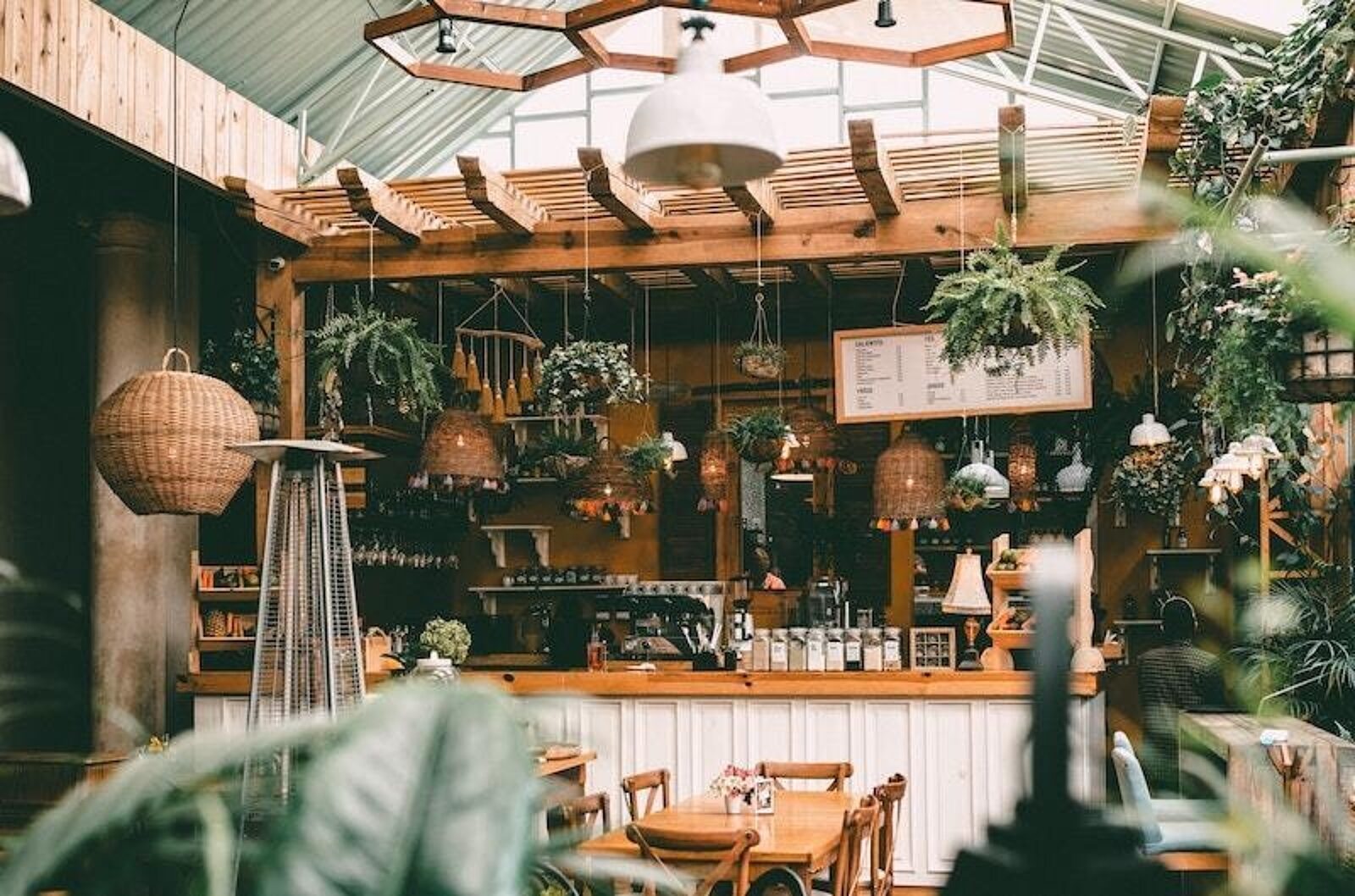
Menu + Food
Unique Coffee Shops to Inspire Your New Cafe

Different Types of Coffee and Espresso Drinks

How to Start a Coffee Shop: Your 2024 Checklist
Subscribe to on the line.
Sign up to get industry intel, advice, tools, and honest takes from real people tackling their restaurants’ greatest challenges.
- Sample Business Plans
- Food, Beverage & Restaurant
How to Write a Coffee Shop Business Plan?

You are a smart entrepreneur. You don’t jump right in and open a coffee shop just because you decoded the secret of making perfect cups of steaming delicious coffee.
Instead, you wait and plan to write a unique business plan that resonates with your coffee shop’s concept.
But hey, writing a business plan is actually complex. Without any structural format or direction, you may end up making a hotchpotch of your business idea.
To ensure that your business concept translates properly into a plan, we created this step-by-step guide that will prompt you to write an insightful coffee shop business plan in great detail.
Also, get a free coffee shop business plan template that has all the relevant examples for you to get started.
So get yourself a cup of coffee and decode the secrets of writing a stellar plan in easy steps.
Let’s get started.
Why Prepare a Coffee Shop Business Plan?
A lot of variables play together to write the success story of your coffee business.
From choosing a shop location to remodeling it as per your unique concept, hiring staff, determining sales strategy, acquiring licenses and insurance, and planning operations-you need to undertake multiple activities, consecutively at a time, to start and run a coffee business.
A business plan will guide you like a map in the right direction. It will ensure that all the business objectives are achieved without breaking a compliance code.
It forces you to assess the viability of a coffee shop idea before you invest the money in it. You can strategically plan the coffee shop’s success by making detailed financial projections relating to the company’s sales, revenue, costs, and expected expenses, and cash flow.
And most important of all, a business plan will help you acquire the required funds by winning the trust of potential investors.
How to Write a Coffee Shop Business Plan: A Complete Guide
Let’s walk through the process of writing a coffee shop business plan with detailed step-by-step instructions.
1. Write an executive summary
An executive summary is like a north star of your business plan. It will act as a guiding light for stakeholders to understand your journey ahead.
Investors will read the executive summary of your coffee shop business plan before even allowing you a presentation. So definitely it needs to be compelling and converting.
Keep your executive summary concise but detailed enough that it summarizes the key points of your entire plan. Include the problems you would be solving and the solutions you have to offer. Adapt a storytelling tone and focus on highlighting the business goals, financials, objectives, and overall business strategy.
Now, move ahead and visit this part when you are done writing for the entire plan. Summarizing becomes much easier and more effective when you are aware of the entire plan’s details.
Also, two pages are more than enough for writing a capturing executive summary.
2. Conduct a competitive and market analysis
Build a strong foundation for your coffee business by diving deep into the market research of the coffee industry, competitors, target audience, market trends, and your attainable target market.
Analyze the coffee shop industry from a macro viewpoint and then gradually narrow it down to your particular market. For instance, the revenue in the US coffee market size was $85.2 billion in 2022 and is expected to grow by 3.21% between 2023-2028.
Now, identify your targeted available market (TAM) from this and analyze the growth potential of your particular coffee shop. Overall, try to show that the coffee shop business has a thriving opportunity to grow in the market.
The market analysis for a coffee shop business must include the study of the following:
Customer analysis
Customer analysis is essential to identify your target customers. Having a thorough understanding of your target market will help formulate the business and market strategies appropriate for your business.
Create the buyer persona of your ideal customer. Focus on these details to outline your ideal customer:
- Customer demographics: Age, gender, location, income, occupation, and ethnicity of the customers who will visit your coffee shop.
- Customer psychographics: Beliefs and values of your ideal customer, their interests, spending pattern, and their media consumption.
For instance, the ideal customer for Steamy Sips is 23-38 years old and works in a corporation. He/ She likes to spend money on coffee regularly and prefers fresh roasted seasonal brews, is socializing, and loves working in a cafe remotely.
Competitors analysis
After determining your target market, look around and identify your potential competitors.
Begin by identifying the top competitors of your coffee shop. This can be neighboring coffee shops, kiosks, or coffee karts that offer similar services to your business.
Now conduct a SWOT analysis of these coffee shops by analyzing their strengths and weaknesses. Also, analyze your strengths against competitors and highlight your competitive edge in the market. Be realistic with your assessment as this will form the foundation of your related business policies.
Lastly, identify if there are any stellar opportunities for you to leverage in this market.
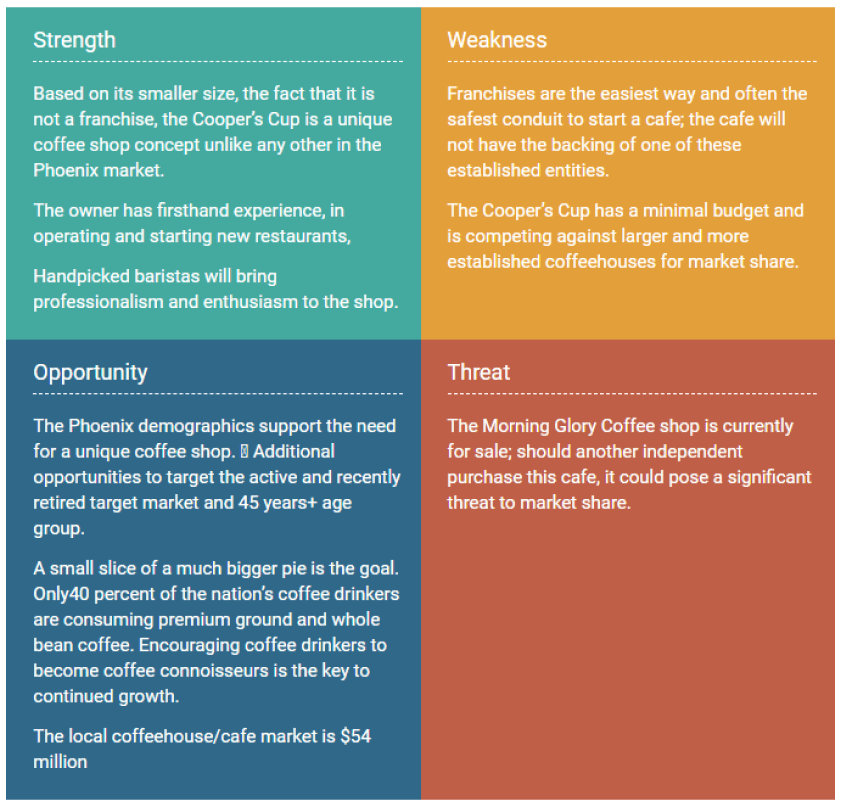
Collect data from highly authoritative websites, data publications, and local studies specialized in the coffee industry. For instance, SBA , SCA coffee , Mintel , Business Wire , COFFEEBI , etc.
This section is your chance to prove to the potential investors that you are aware of the market challenges and there exist favorable chances for your coffee shop to thrive and grow.
3. Prepare a company overview
Just like the executive summary of your coffee shop business plan, this section includes a brief business description of your coffee shop. It offers readers a peek into your business structure, goals, mission, and company values.
Depending on your market analyses choose the type and structure of your business concept. Clearly describe whether you will start a cafe or coffee shop, coffee kart, coffee bar, or coffee house and whether the business structure will be LLC, partnership, or sole proprietorship.
Further include your mission statement, coffee shop objectives, and goals to complete the company overview section.
Mission statement: A mission statement highlights the purpose of your coffee shop’s existence and its long-term objective.
For instance, Steaming Sips’ mission is to cultivate a culture of freshly roasted coffee, serving a welcoming space for young individuals to connect, create, and unwind with every cup of our brews.
Coffee shop objectives: In this part, highlight your business objectives in terms of milestones, growth goals, revenue goals, sales numbers, etc.
For instance, Steaming Sips aims to open 3 branches across San Fransisco by the end of 2025.
4. Present your sample menu
The market research earlier helped you understand your potential audience in great detail. Now, it’s time to decide what to offer on your menu.
A sample menu is an important component of your coffee shop business plan. With a menu, investors will know what exactly you will be serving and what makes you different.
A coffee shop can stand apart selling just coffee drinks. However, there are many coffee shops that sell coffee and food products together. Depending on your coffee shop concept and the target market, decide the menu items.
Here are a few things to consider while making your menu and establishing yourself as a specialty coffee shop.
- Different types of coffee drinks that suit your customer’s taste. For ex. filtered coffee, frappuccino, brewed coffee, hot coffee, etc.
- The type of coffee beans to produce high-quality coffee, e.g. organic coffee beans.
- Different types of coffee roasts, e.g. dark roast, medium roast, light roast.
- Different types of milk, e.g. plant-based milk options and dairy milk.
- Seasonal coffee specialties.
Strategically place the items in your menu and add the prices alongside. Incorporate branding elements of your coffee shop in the menu as well.
5. Coffee shop design and layout
Till now, the coffee shop idea was just a business concept, jumbled randomly across your mind. Writing a business plan will help you to sort those ideas, one section at a time.
The design and layout section helps potential investors visualize the appearance of your coffee shop. It is your chance to help them understand your coffee shop concept and the aspects that set you apart from other coffee shops.
Begin by highlighting your coffee shop location in this section. Briefly explain how the location is suitable for your potential customers.
Also, present the moodboard of your coffee shop and highlight the branding and visual elements of its design.
Overall, explain how you will create a welcoming atmosphere for your customers by incorporating design and decor elements in your shop.
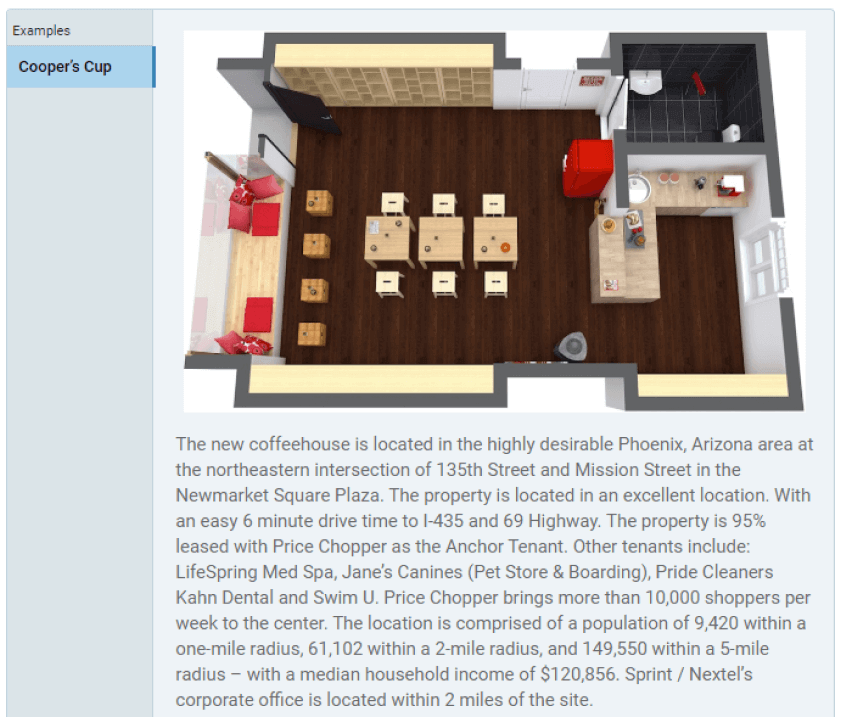
6. Prepare a coffee shop marketing plan
Now that you have the concept, design, and menu for a coffee shop, it’s time to work on its marketing plan . The coffee market is intensely competitive and only a solid marketing action plan can differentiate your business from other coffee shops.
Using your market research, identify the best marketing strategy for your business. Ideally, coffee shops build a cohesive brand image using a mix of digital marketing practices.
For instance, a website can be used to build a robust web image, while social media can be used to connect with your target audience organically. Similarly, your coffee shop emails can focus on special offers and promotional invites while paid ads can help you target the wider audience.
In this section, you also highlight various promotional activities for your cafe such as karaoke evenings, art workshops, musical nights, happy coffee hours, etc.
Overall a comprehensive marketing plan must answer the following questions:
- How will you draw coffee enthusiasts to your coffee shop?
- What will be the pricing strategy of your coffee shop?
- What will be your marketing budget?
- What marketing channels will you use and who will undertake the marketing activities?
- Will there be any promotional events at the cafe? If so, what type of events?
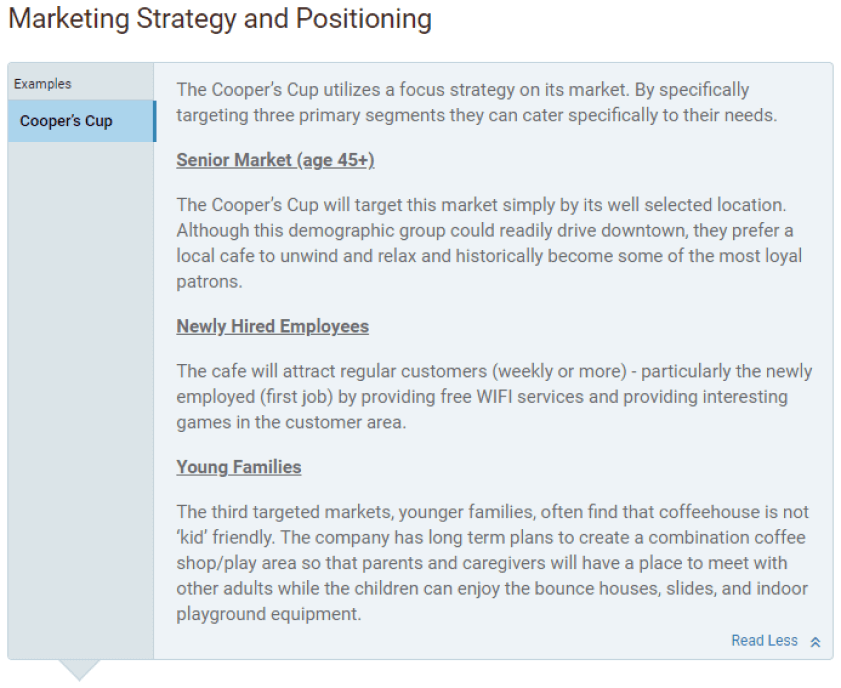
7. Introduce your management team
In this section, you will introduce the management team that will ensure the smooth functioning of your coffee shop business.
Begin by introducing the coffee shop owners and their relevant experience in the coffee market. Also, clarify if you will work both as owner and manager or hire a coffee shop manager to look after the day-to-day operations.
If you are going to hire a manager, introduce them and their key responsibilities in the section. Offer a brief description of their skills, experience, and expertise that can help your coffee shop business.
Overall, this section shows the potential investors that you have all the right people in a team to drive your coffee shop toward success.
8. Outline your operational plan
Operation section of a coffee plan offers brief details of everyday business processes that will guide you to build and run a successful coffee shop.
An operations plan includes a lot of details, answering some of these prominent questions.
- Inventory and stock management: How will you manage and track the inventory? Who will be responsible for stock management? How often would you restock the inventory?
- Production: Who will develop the recipes for coffee beverages? Will there be recipe cost cards for coffee preparation? Will there be kitchen staff working with food orders or will you outsource that?
- Coffee shop equipment: What equipment will you buy for the coffee shop, i.e. espresso machine, coffee grinders, etc? Will that be a new purchase or a second-hand one? How much will the equipment cost?
- Management: Who will serve the food and coffee in the shop? Who will look after customer complaints? What is the conflict resolution system at your coffee shop?
- Technology: What technologies will you use at your coffee shop? Which payment and POS system will you use? Will there be an ordering kiosk?
A well-planned operations plan demonstrates your ability to run a coffee shop to your readers. So keep it detailed and revamp it as and when needed.
9. Create a Financial Plan
A financial plan helps assess the viability of your business idea by evaluating its financial aspects. It’s an important part of your coffee shop business plan whether you want to seek funding or not.
A well-built coffee shop financial plan is presented in numbers, graphs, and charts and includes the following:
- Evaluation of startup costs: Identify the startup costs of your proposed coffee shop. Take into account the costs for lease rental, licenses, equipment, remodeling as well as operating expenses for the first few months.
- Sales forecasts and pricing: Determine the drink sales for your coffee shop and your pricing structure by conducting market research.
- Operating costs: Your financial projections should include a thorough calculation of operating expenses to run a coffee shop business.
- Balance sheet: A balance sheet will help investors assess your assets and liabilities and the liquidity of your business.
- Cash flow statement: Make cash flow projections and demonstrate the inward and outward flow of money in the business.
- Income statement: The figures in this sheet help evaluate the profitability of your business
- Break-even analysis: The calculations here will help determine the sales level after which your coffee shop will start making a profit.
Now, making all these financial projections and calculations is a bit taxing. Not only that, you will have to create visual reports to make the financial section appealing and insightful.
Well, let’s make things easier with our financial forecasting tool. Simply enter your assumptions in a tab and our tool will generate important key reports for your business.
Don’t stress. You don’t need to worry about the visual reports anymore. Go, check your dashboard. You will have all the visual reports ready to be added to your financial plan.
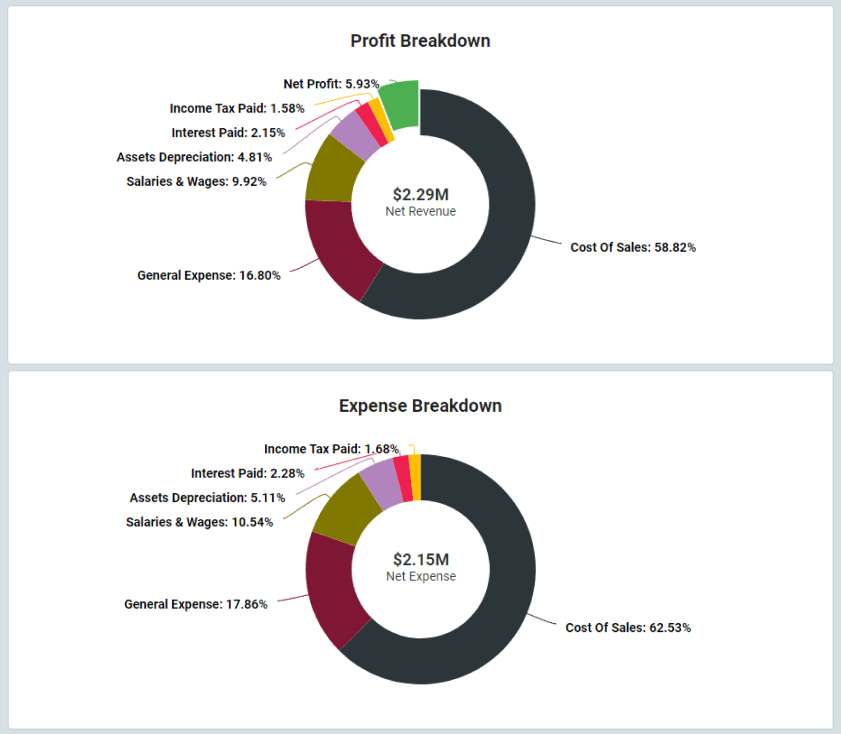
And that’s your detailed guide to writing your coffee shop business plan. Now, let’s check the latest industry trends ruling the coffee shop market.
Coffee Shop Industry Highlights 2023
Let’s dive further deep into market analysis with these latest industry trends in the coffee shop market:
- Coffee shop industry: The US coffee shop industry grew from $36 billion to 45.8 billion dollars between 2020-2022.
- Number of coffee shops: According to Statista , in 2022 there were a total of 38.4 thousand coffee shops in the US.
- Coffee drinkers: A performed market research indicates that the top coffee consumers aren’t youngsters, but seniors. Nearly, 70% of seniors consume coffee regularly.
- Employment growth rate: The total number of people employees in the coffee shop industry in th US increased on average by 4.9% between 2018-2023.
- Specialty coffee market: According to Grandview research , the US specialty coffee market is expected to grow at 10.9% CAGR between 2023-2030.
- Price per cup: According to Business Insider , the average price per coffee cup in the coffee shop is almost $5, making it an affordable luxury for people.
Download a sample coffee shop business plan
Need help writing your business plan? Let’s ease your plan writing process with our coffee shop business plan pdf . Download it for free and customize it as per your needs.
This modern intuitive template offers a step-by-step guide that will help you write a comprehensive and actionable business plan. It’s designed specifically for coffee shop businesses and includes examples relevant to your industry.
The Quickest Way to turn a Business Idea into a Business Plan
Fill-in-the-blanks and automatic financials make it easy.
Write your business plan with Upmetrics
Enhance the quality of your business planning with Upmetrics. With more than 400+ customizable sample business plans , it offers features like AI assistance to write an impactful business plan.
Whether you are starting your own coffee shop or taking over an existing coffee business, Upmetrics’ insightful guides and resources will help you craft a compelling business plan in easy steps.
Related Posts
Coffee Roaster Business Plan
Coffee Truck Business Plan
Financial Guide for New Startups
Cost To Start a Coffee Shop
Best Business Plan Writer
How to Start a Coffee Shop Business
Frequently asked questions, what are the key components of a successful coffee shop business plan.
The key elements of a coffee shop business plan are
- Executive summary
- Business overview
- Coffee industry and market analysis
- Sample menu
- Coffee shop design and layout
- Marketing and sales plan
- Key management team
- Operations plan
- Financial plan
Should we consider franchising our coffee shop?
Yes, you can. Franchising is a proven way of increasing the reach and profitability of your coffee business. Moreover, it’s easy to scale your business through a franchise business model.
What is a traditional business plan for a coffee shop?
A traditional plan is very similar to modern business plans. It includes a summary of the company’s goals, objectives, business values, marketing objectives, and financial plan. The modern plans, however, are intuitively designed to be more suited to investors interest.
Do I need a business plan to secure funding for my coffee shop?
Yes. Investors and investing firms will ask for a business plan before giving you a chance to present the coffee shop concept. By studying your plan, they will gauge the viability of your coffee business, and depending on the analysis they will decide whether to invest or not.
What should I include in the financial projections section of my business plan?
The financial projections of your coffee shop plan must include the following:
- Sales forecast
- Startup cost estimates
- Operating costs
- Balance sheet
- Income statement
- Cash flow statement
- Break-even analysis
About the Author
Upmetrics Team
Upmetrics is the #1 business planning software that helps entrepreneurs and business owners create investment-ready business plans using AI. We regularly share business planning insights on our blog. Check out the Upmetrics blog for such interesting reads. Read more
Plan your business in the shortest time possible
No Risk – Cancel at Any Time – 15 Day Money Back Guarantee

Create a great Business Plan with great price.
- 400+ Business plan templates & examples
- AI Assistance & step by step guidance
- 4.8 Star rating on Trustpilot
Streamline your business planning process with Upmetrics .


Cafe Business Plan
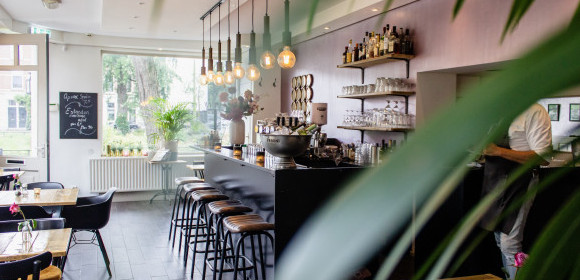
Coffee ranks second in the most sought commodities worldwide, the first is crude oil, according to a Business Insider report. That doesn’t come as a surprise. We’re all aware that most of us love drinking coffee. For some, coffee is their morning kick-starter and their fuel to start their long, busy day. Others drink several cups of coffee throughout their daily schedule , especially those who have desk jobs. But simply put, people are fond of coffee in general, which could also mean they’re fond of visiting cafes. So if you’ve been considering opening a cafe business lately, now is the time to go for it. It’ll certainly catch the attention of coffee lovers. But first, you need to plan your business right for that to happen. So, here we invite you to have a look at our Cafe Business Plan Examples !
11+ Cafe Business Plan Examples
1. cafe business plan financial template.
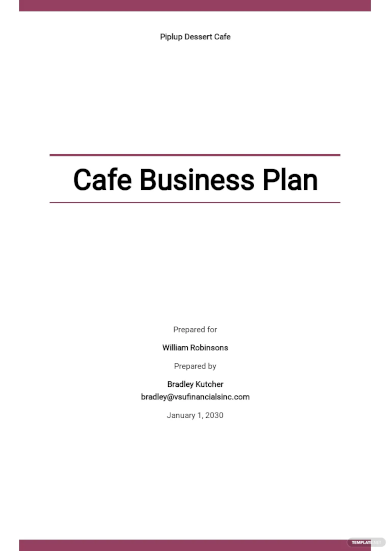
- Google Docs
- Apple Pages
Size: 25 KB
2. Cafe Business Plan Template
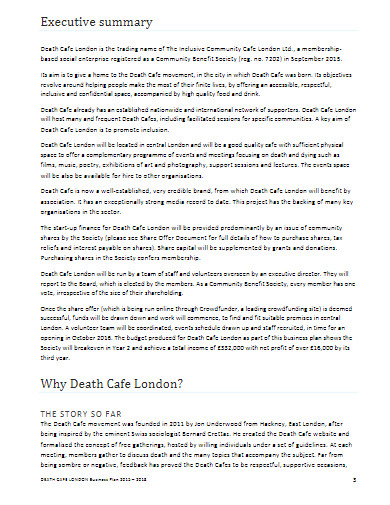
3. Cafeteria Business Plan
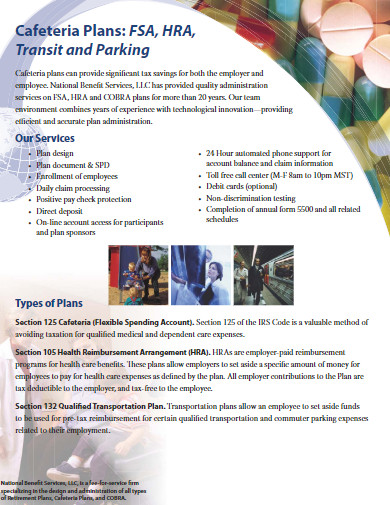
Size: 550 KB
4. Cafe Business Plan Example
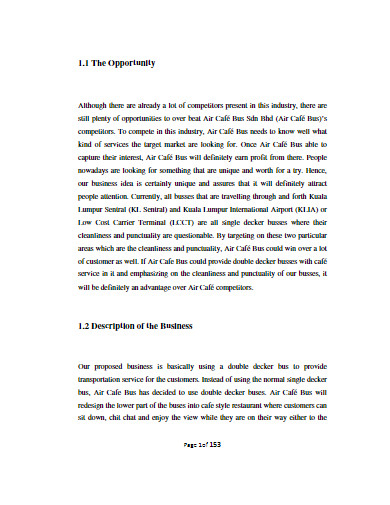
5. Start-up Cafe Business Plan
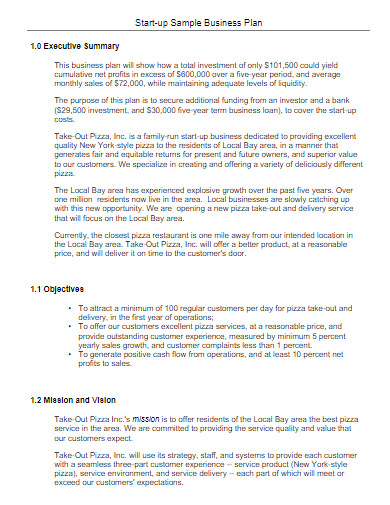
Size: 195 KB
6. Sample Cafe Business Plan
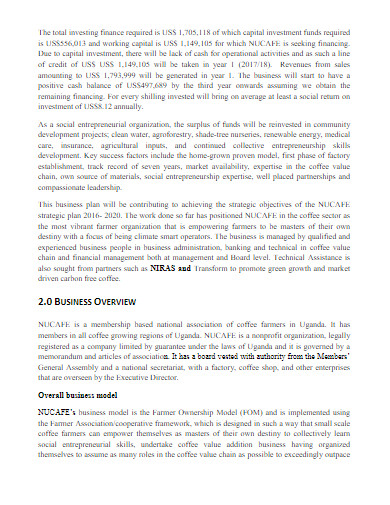
7. New Cafe Business Plan

8. Cafeteria Business Plan Template
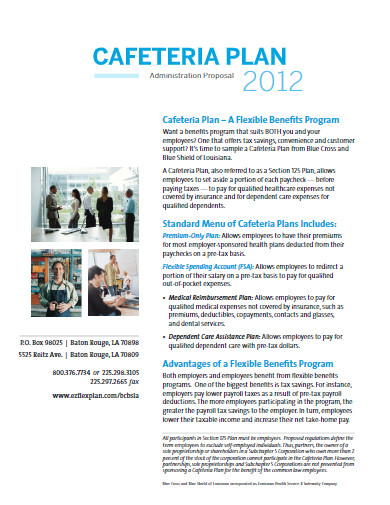
9. Cafe Business Plan in PDF
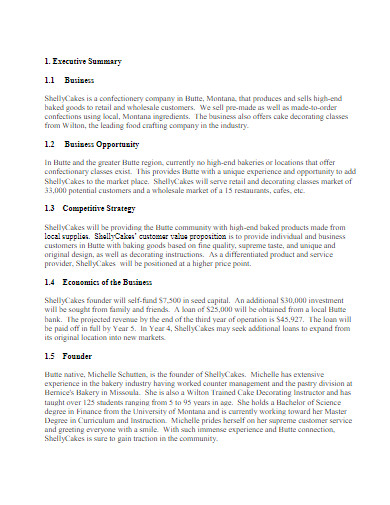
10. Outdoor Cafe Business Plan
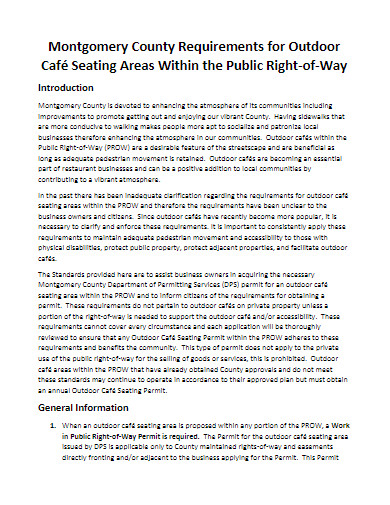
11. College Cafe Business Plan

12. Cafe Marketing Business Plan
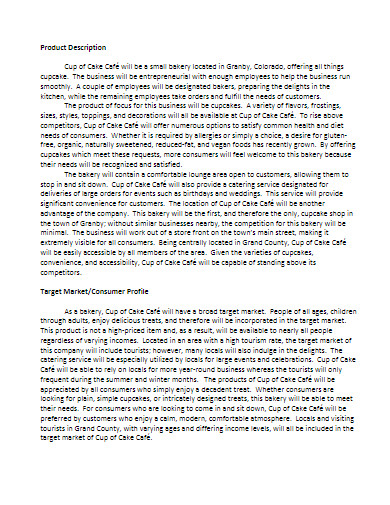
Size: 212 KB
What Is a Cafe Business Plan?
A cafe business plan outlines the profile, products, services, operations, and strategies of a cafe business. It’s simply another form of a business plan that focuses on a cafe business’s overview. You can also call it a coffee shop business plan . This is the document you need to prepare to start making your cafe plan a reality. You should put everything that you’re envisioning for your cafe business on it.
You might be asking why you need a cafe business plan. We have a good explanation for you. Without a business plan, you wouldn’t have a clear vision or goal of establishing your cafe. And you won’t have any form of a solid action plan to achieve your business expectations. Along the way, you’ll face challenges in preparing your business. But you won’t know what to do to overcome them. With a written business plan , you’ll have a clear roadmap of how to arrive from point A to B and so on until you accomplish your business goals. And lastly, the government will look into your cafe business plan proposal before granting you a permit to open your cafe.
What Type of Business Is a Cafe?
Cafes primarily serve coffee to their customers. Therefore, they’re a food and beverage type of business. Historically, cafes were once called as coffeehouses, and they only served coffee. Today, cafes not only serve coffee. They now also serve entree, main course, and dessert dishes, but on a limited menu . Their primary products are still their coffee menu and also tea menu .
How to Write a Cafe Business Plan
Among the first steps in conceptualizing a business is writing a business plan. It’s the first stage in your journey to becoming a cafe business owner. So to help you get started, we’ll give you a few tips in formulating your sample business plan for a cafe.
1. Establish Your Cafe’s Identity
In the first three sections of your business plan, you should establish your cafe’s identity right away. On the title page, you should state your cafe’s official name and display its business logo . On the executive summary , discuss its general overview. And after that, show its business profile.
2. Showcase Your Menu
If you’ve already prepared your cafe menu , showcase it in your business plan. This makes your business plan more appealing and convincing. It implies that you have a clear idea of what you want for your business, even if it’s not final yet. Make sure to provide descriptions of your products, such as their ingredients and possible prices.
3. Outline Your Strategies and Standard Operations
In launching a business, you’ll be doing a feasibility study and a market analysis . Based on their results, you need to come up with your marketing strategies and production plan . Those two should explain how you’re going to promote your cafe and how you’re going to conduct services, respectively.
4. Explain Your Startup Budget Calculation
Probably the most crucial section of a business plan is the budget plan . Financial aspects are never out of the equation in operating a business, especially starting one. So in your business plan, make sure to explain how your budget will cover for every needed expense for your cafe. You should also show an estimate of how it can generate revenue and profit.
What industry does a cafe business belong to?
A cafe business belongs to the food and beverage industry. But because it primarily serves coffee products, it also belongs to a specific section in the food and beverage industry, which is the coffee industry.
What makes cafes popular?
Coffee isn’t the only element that makes cafes popular in every locality. Another element is their overall ambiance. That includes the type of furniture used, the interior design, and the location. The atmosphere that cafes have are simply relaxing. They’re a good place to do work, meet up with friends, read a book, or spend some alone time.
What makes a topnotch cafe business?
The two things that make a topnotch cafe is producing high-quality coffee products and providing excellent customer service. Those two should work hand in hand.
Things could go south immediately if you mismanage your cafe. Plus, many cafes have established trust among customers, and they’re your competitors. With those said, running your cafe won’t be easy. But whoever said owning a business is easy? No one, of course. So start planning your cafe with the help of our business plan examples now! You may also refer to our small restaurant business plan examples .
Text prompt
- Instructive
- Professional
Create a study plan for final exams in high school
Develop a project timeline for a middle school science fair.
- Get Started
Home >> #realtalk Blog >> Manage a business >> How to Open a Succes…
How to Open a Successful Bookstore Cafe
By Homebase Team

You’ve always loved books and coffee. Combining these passions into a business seems like a dream come true. But what exactly goes into starting a bookstore cafe?
A bookstore cafe is a hybrid business that combines elements of a bookstore and a coffee shop. It offers a cozy atmosphere where book lovers can browse, purchase books, and enjoy coffee and snacks. Imagine a space where shelves of books line the walls, and the aroma of freshly brewed coffee fills the air. Customers can lose themselves in a good book while sipping a latte or nibbling on a pastry.
This type of business caters to both book enthusiasts and coffee lovers, creating a unique environment that appeals to a wide range of customers. The combination of a bookstore and a cafe provides multiple revenue streams, making it a potentially lucrative venture. Whether someone wants to find their next great read or simply relax with a cup of coffee, a bookstore cafe offers a welcoming space for both.
Benefits of Opening a Bookstore Cafe
Feeling overwhelmed by the financial risks and operational challenges? Opening a bookstore cafe offers several advantages that can make your business stand out.
First, you appeal to a diverse customer base of book lovers and coffee enthusiasts. This dual attraction brings in a steady stream of visitors who might come for the books but stay for the coffee, or vice versa. By catering to both interests, you create a broader market for your business.
Generating income through multiple revenue streams is another significant benefit. Book sales and cafe offerings provide two distinct sources of revenue, which can help stabilize your income. When one side of the business experiences a slow period, the other can help balance it out. This diversification reduces financial risk and increases the potential for profitability.
Fostering a sense of community is another key advantage. Your bookstore cafe can become a gathering space for like-minded individuals. Hosting book clubs, author readings, and other events can create a loyal customer base that sees your cafe as more than just a place to buy books or coffee. It becomes a social hub where people connect over shared interests.
Differentiating from traditional bookstores and coffee shops is crucial in a competitive market. A bookstore cafe offers a unique experience that sets you apart. Customers enjoy the convenience of browsing books and enjoying a coffee in one location. This combination creates a memorable experience that encourages repeat visits and word-of-mouth referrals.
Auto-convert timesheets into wages, catch errors, pay your team, and file taxes all in one place.
How to Choose the Perfect Location for Your Bookstore Cafe
Worried about finding the right spot and dealing with competition?
Choosing the right location for your bookstore cafe plays a significant role in its success. Start by considering your target market and their preferences. Think about who your ideal customers are. Are they students, professionals, families, or retirees? Understanding their habits and preferences helps you select a location that attracts them. For example, if you aim to attract students, a spot near a university might be ideal.
Next, assess accessibility and foot traffic. A location with high foot traffic increases the chances of attracting walk-in customers. Look for areas with good visibility and easy access. Consider the availability of parking and public transportation. A place that’s easy to get to encourages more visits.
Evaluate nearby businesses and competition. Check out the local business landscape. Nearby businesses can either complement or compete with your bookstore cafe. A location near other cafes might mean stiff competition, but being close to complementary businesses like libraries or schools can be beneficial. Understand the competitive landscape to make an informed decision. For more guidance on planning, check out this coffee shop business plan .
Ensure the space aligns with your vision and can accommodate both bookstore and cafe elements. The physical space should support your concept. Consider the layout and size. You need enough room for bookshelves, seating, and a coffee counter. The ambiance should match your vision. A cozy, inviting atmosphere can make your bookstore cafe a favorite spot for customers. Don’t forget to cover all legal aspects with this business licenses guide .
Essential Equipment and Supplies for Your Bookstore Cafe
Feeling daunted by the practicalities of running a dual business? Starting a bookstore cafe requires a blend of equipment and supplies to ensure smooth operations. Here’s a detailed look at what you need:
Bookshelves and Display Units
Bookshelves and display units form the backbone of your bookstore section. Choose sturdy, aesthetically pleasing shelves that can hold a variety of book sizes. Display units should highlight new arrivals, bestsellers, and themed collections. Consider adjustable shelving to accommodate different book formats and to keep the layout flexible.
Point of Sale (POS) System
A reliable POS system streamlines transactions and keeps track of sales. Opt for a system that integrates both bookstore and cafe sales. Features to look for include inventory management, sales reporting, and customer relationship management. A good POS system helps you manage both sides of the business efficiently.
Coffee Makers, Grinders, and Other Cafe Equipment
The cafe section needs high-quality coffee makers and grinders to serve excellent coffee. Invest in commercial-grade equipment to handle peak hours. Other essentials include espresso machines, blenders for smoothies, and ovens for baking pastries. Don’t forget about refrigeration units for storing perishable items like milk and baked goods. For more insights, check out this guide on starting a coffee business .
Comfortable Seating and Tables
Comfortable seating and tables enhance the customer experience. Choose a mix of seating options, including cozy armchairs for readers and standard tables for those who prefer a traditional cafe setting. Ensure the furniture is durable and easy to clean. The layout should encourage customers to linger, browse books, and enjoy their coffee.
Inventory Management Tools
Effective inventory management tools help you keep track of stock levels for both books and cafe supplies. Use software that alerts you when stock is low and helps you reorder efficiently. This reduces the risk of overstocking or running out of popular items. Accurate inventory management ensures you always have what customers want, whether it’s the latest bestseller or their favorite coffee blend.
Developing a Unique Concept and Ambiance
Wondering how to stand out and build a community hub?
Creating a theme or niche that sets your bookstore cafe apart starts with understanding what makes your business unique. Think about what you love most about books and coffee, and how you can combine these elements into a cohesive theme. Whether it’s a focus on local authors, a genre-specific collection, or a vintage-inspired decor, your theme should reflect your passion and attract like-minded customers. This distinct identity will help your bookstore cafe stand out in a crowded market.
Designing a layout that seamlessly integrates the bookstore and cafe spaces is crucial for creating a comfortable and inviting atmosphere. Start by mapping out the flow of the space. Ensure that customers can easily navigate between the bookstore and cafe areas without feeling cramped or confused. Use furniture and decor to define different zones while maintaining a cohesive look. For example, you might use bookshelves to create cozy reading nooks or place cafe tables near large windows for natural light. The goal is to make the space feel unified yet functional.
Curating a book selection that appeals to your target audience involves knowing who your customers are and what they want to read. Conduct surveys or engage with your community to understand their preferences. Stock a mix of bestsellers, classics, and niche genres that align with your theme. Regularly update your inventory to keep it fresh and exciting. Consider featuring local authors or hosting book signings to create a personal connection with your customers. A well-curated selection not only attracts book lovers but also encourages repeat visits.
Developing a menu that complements the overall concept of your bookstore cafe is another key aspect. Your menu should reflect the ambiance and theme of your space. If your theme is cozy and vintage, consider offering classic coffee drinks and homemade pastries. For a modern, eclectic vibe, you might include specialty lattes and trendy snacks. Pay attention to dietary preferences and offer a variety of options, including vegan and gluten-free items. The menu should enhance the customer experience, making your bookstore cafe a place where people want to linger and enjoy both the books and the food. For more on creating an inclusive environment, consider creating a DEI strategy .
Marketing Strategies for Your Bookstore Cafe
Feeling anxious about attracting and retaining customers?
Effective marketing is key to a successful bookstore cafe. Leverage social media to engage with potential customers. Create profiles on popular platforms like Instagram, Facebook, and Twitter. Share high-quality photos of your cafe, book collections, and special events. Use stories and live videos to give followers a behind-the-scenes look at your operations. Engage with your audience by responding to comments and messages promptly. Run targeted ads to reach specific demographics interested in books and coffee. Regularly update your content to keep your audience engaged and informed about new arrivals, menu items, and upcoming events. You can even consider using social media for business .
Hosting events such as book clubs, author readings, or workshops can draw in a crowd and create a sense of community. Organize book clubs that meet regularly to discuss selected titles. Invite local authors for readings and book signings. Offer workshops on topics like creative writing, poetry, or bookbinding. These events not only attract book lovers but also encourage them to spend more time in your cafe. Promote these events through your social media channels, email newsletters, and in-store flyers. Providing a calendar of events can help customers plan their visits and look forward to upcoming activities.
Partnering with local organizations and businesses can expand your reach and attract new customers. Collaborate with nearby schools, libraries, and community centers to host joint events or reading programs. Partner with local artisans and crafters to sell their products in your cafe or host craft fairs. Work with nearby businesses to offer cross-promotions, such as discounts for customers who show a receipt from a partner business. These collaborations can create a network of support and help you tap into new customer bases.
Offering loyalty programs and promotions can encourage repeat business and build customer loyalty. Implement a loyalty card system where customers earn points for each purchase, redeemable for discounts or free items. Offer special promotions, such as a discount on coffee with the purchase of a book or a free pastry with a certain number of visits. Seasonal promotions and limited-time offers can create a sense of urgency and attract more customers. Promote these programs through your social media channels, email newsletters, and in-store signage to ensure customers are aware of the benefits. Check out our guide on creating a marketing plan to ensure your business is on the right track.
Navigating Challenges and Ensuring Success
Managing inventory effectively is key to running a successful bookstore cafe. Keep track of your stock levels for both books and cafe supplies. Use inventory management tools to monitor sales patterns and identify which items move quickly and which do not. This helps you avoid overstocking items that don’t sell well and ensures you always have popular items on hand. Regularly review your inventory data to make informed decisions about reordering and discontinuing products.
Training staff to provide excellent customer service in both the bookstore and cafe is another important aspect. Your employees should know how to recommend books, make coffee, and handle customer inquiries efficiently. Invest time in training them on your products, services, and customer service standards. Regular training sessions can keep your team updated on new arrivals, menu changes, and best practices. Happy, knowledgeable staff can create a welcoming environment that encourages repeat business. Check out our guide to hiring hourly employees for more insight.
Adapting to changing market trends and customer preferences keeps your bookstore cafe relevant. Stay informed about the latest trends in both the book and coffee industries. This might include new book genres gaining popularity or emerging coffee brewing techniques. Listen to customer feedback and be willing to adjust your offerings based on their preferences. Flexibility allows you to meet customer expectations and stay ahead of the competition.
Continuously assessing financial performance and making data-driven decisions ensures your business remains profitable. Regularly review your sales reports, expenses, and profit margins. Identify areas where you can cut costs or increase revenue. Use this data to make informed decisions about pricing, promotions, and product offerings. Keeping a close eye on your financial performance helps you spot potential issues early and take corrective action before they become major problems.
- What : Combines bookstore and coffee shop.
- So What : Appeals to book and coffee lovers, multiple revenue streams.
- Pros & Cons : Pros: Diverse appeal, multiple incomes, community. Cons: Financial risks, competition.
- Bottom Line : Can be profitable if well-planned.
Ready to streamline your bookstore cafe operations? Homebase makes managing your team a breeze with tools for scheduling, time tracking, payroll, and more. Let’s make work easier— get started today .
Remember: This is not legal advice. If you have questions about your particular situation, please consult a lawyer, CPA, or other appropriate professional advisor or agency.
Related posts
August 15, 2024
Startup Costs for Opening a Bakery
Thinking about opening a bakery in 2024? You’re not alone. Many aspiring bakers dream of turning their passion into a…
August 14, 2024
How to Register a Business in Illinois
Starting a business in Illinois can feel overwhelming, but understanding the registration process can make it manageable. Whether you’re launching…
How to Launch a Business in Colorado
Starting a business in Colorado can feel overwhelming, but breaking it down into manageable steps makes it easier. You need…
How to Start Your Business in Michigan
Starting a business in Michigan involves several steps, but you can navigate the process smoothly with the right guidance. Whether…
How to Start a Thrift Shop in Your Community
Thinking about starting a thrift shop in your community? It’s a great way to provide affordable goods and supports local…
How to Start a Food Truck in Florida
Starting a food truck in Florida can be an exciting venture. You get to bring your culinary creations to different…
Subscribe to our newsletter
Looking for ways to stay up to date on employment laws and small business news?
Homebase makes managing hourly work easier for over 100,000 local businesses. With free employee scheduling , time tracking , and team communication , managers and employees can spend less time on paperwork and more time on growing their business.
- Hiring & onboarding
- Team communication
- Employee happiness
- HR & compliance
- Integrations
- Food & beverage
- Beauty & wellness
- Medical & veterinary
- Home & repair
- Hospitality & leisure
- Education & caregiving
- Contact sales
- Become a Partner
- Careers – We’re hiring!
- #realtalk Blog
You're reading a free article with opinions that may differ from The Motley Fool's Premium Investing Services. Become a Motley Fool member today to get instant access to our top analyst recommendations, in-depth research, investing resources, and more. Learn More
This Is How Long Verizon's CEO Says Customers Are Waiting to Upgrade Their Phones
- Verizon's phone terms are typically set for 36 months.
- Customers, however, are holding on to them for longer than that.
- An upgrade cycle could be coming because new phones will be necessary for the latest artificial intelligence features.
- Motley Fool Issues Rare “All In” Buy Alert
Verizon Communications

A lack of phone upgrades has been weighing on Verizon's growth, but that could soon change.
A big problem for telecom companies such as Verizon Communications ( VZ 0.55% ) these days is that consumers aren't rushing to upgrade their phones. At a time when inflation is forcing people to stretch their budgets, one easy way to keep costs down is to resist the urge to upgrade a cellphone that's working fine, and to avoid potentially having to take on a more expensive phone plan as well.
Here's how long consumers are waiting to upgrade their phones, and why that could soon change.
Consumers are holding on to their phones for longer than 36 months
Verizon CEO Hans Vestberg said in a recent interview with CNBC that its current customer holds on to their phone for "way over 36 months," compared to in the past, when it was normal to change a phone every year. The company offers promotions for 36 months to help pay for a new phone, but Vestberg's statement suggests that consumers are keeping them even after the promo period ends.
While Verizon did increase the length of its payment terms a couple of years ago, it's still possible for customers to pay off a phone early. The long period consumers are going through before upgrading their phone is indicative of both the current economic conditions and the lack of urgency to upgrade; consumers aren't seeing an incentive to upgrade early, even perhaps after their phone is fully paid off.
Why an upgrade cycle could be coming soon
Although the economic situation may not be improving soon with fears of a recession rising, there could at least be an incentive for customers to upgrade their phones soon.
Apple is launching new phones with artificial intelligence (AI) capabilities that could give consumers the incentive they finally need to upgrade their phones sooner rather than later. Even though some of Apple's new AI features may not be coming until next year, users will need to upgrade to the latest, most powerful iPhones to be able to take advantage of them, including image generation and a more advanced assistant.
Critics believe that Apple is doing this to force customers into upgrading, triggering what some are calling a potential upgrade "supercycle." Not only could Apple benefit from more upgrades, but that would also be welcome news for Verizon and other telecom companies that would lock customers into new contracts and plans.
In Verizon's most recent quarter, which ended in June, its total operating revenue of $32.8 billion rose by just 0.6% year over year, with the company blaming a part of that on "lower upgrade volumes."
Should you buy Verizon's stock?
An upgrade cycle, or a "supercycle," could be just what Verizon's business needs for its growth rate to accelerate and for it to attract some much-needed attention from investors. Over the past three years, the stock has fallen by 28%, making it an underwhelming investment overall. As investors have focused on growth stocks , Verizon has simply fallen out of favor in the market.
But with a high dividend yield at 6.5% and a potential catalyst on the way for its top line, now may be an optimal time to add Verizon to your portfolio, potentially before its growth rate improves and before it lands on the radars of investors who may have been waiting for more of a reason to invest in the stock. Although Verizon may not be a high-powered growth machine, it can make for a solid income stock to buy and hold for the long haul.
David Jagielski has no position in any of the stocks mentioned. The Motley Fool has positions in and recommends Apple. The Motley Fool recommends Verizon Communications. The Motley Fool has a disclosure policy .
Related Articles

Premium Investing Services
Invest better with The Motley Fool. Get stock recommendations, portfolio guidance, and more from The Motley Fool's premium services.
- Nation & World
- Environment
- Coronavirus
Who is Bobby George? Entrepreneur, restaurateur accused of rape, attempted murder
- Bobby George, 43, of Lakewood, near Cleveland, was charged on Friday with attempted murder, four counts of kidnapping, two counts of strangulation and one count each of rape and felony assault.
- George owns TownHall, REBoL and Barley House in Cleveland, as well as TownHall and Mandrake Rooftop in the Short North and REBoL in Dublin.
- George is the founder of Ethos Hospitality Group, a hospitality and marketing company headquartered in Cleveland.
A successful entrepreneur who owns at least six restaurants in Cleveland and Columbus (with plans for more), is the founder of his own firm and is the majority shareholder in over 40 companies is now facing charges of rape and attempted murder .
So, who is Bobby George? Here's what you need to know.
Bobby George charged with attempted murder, rape, kidnapping
Robert "Bobby" T. George, 43, of Lakewood, near Cleveland, was charged on Friday with attempted murder, four counts of kidnapping, two counts of strangulation and one count each of rape and felony assault in Cleveland Municipal Court, according to court records.
The records say that the offenses took place between November 2023 and July of this year, and were reported to police Aug. 9.
The Akron Beacon Journal , citing its partner News 5 Cleveland, reports that George has turned himself in after a warrant was issued for his arrest on Friday.
Citing the arrest warrant, Cleveland television stations WOIO Channel 19 and WEWS News 5 reported that George is accused of strangling a woman he pinned to the ground and slamming her head on the ground on Nov. 14, 2023. Another time, George is accused of using a gun to force the woman out of a car, and holding it to her stomach as he led her back inside. In another incident, the woman alleges that George raped her when she came out of the shower.
Bobby George restaurants include TownHall, REBoL in Cleveland and Columbus, with plans for more
George owns TownHall, REBoL and Barley House in Cleveland, according to WEWS News 5 , as well as TownHall and Mandrake Rooftop in the Short North and REBoL in Dublin.
He also has plans to expand his restaurant empire.
In January, George and his architects unveiled details for a three-building restaurant and entertainment complex in the Flats East Bank neighborhood of Cleveland, according to Cleveland Scene . The complex would break ground this year.
Bobby George is the founder of Ethos Hospitality Group, has stakes in over 40 businesses
George is the founder of Ethos Hospitality Group, a hospitality and marketing company headquartered in Cleveland, according to Cleveland Business Journal . According to its LinkedIn page , "Ethos Hospitality Brands are independently owned businesses with the belief that a culture of love is [what] makes us better."
He also owns majority stakes in more than 40 businesses, according to his biography for the Small Business Dealmakers Conference in Cleveland . George was a guest speaker at the conference in June. He holds a degree in finance and economics from Ohio University.
Father Tony George named in HB 6, FirstEnergy controversy
Bobby George's father, Tony George, was part of the House Bill 6 controversy, acting as a go-between for FirstEnergy and former Ohio House Speaker Larry Householder, who was convicted for his role in the bribery scandal .
According to lawsuits, FirstEnergy pumped $61 million in bribes through dark money political groups to help Householder gain political power and in turn pass House Bill 6—a bailout bill worth $1.3 billion to FirstEnergy and its former subsidiary FirstEnergy Solutions.
According to a 2023 Columbus Dispatch story , Tony George, a Cleveland-area businessman, arranged for the FirstEnergy Corp. jet to fly Householder and his son off to Washington, D.C., for Donald Trump's inauguration in January 2017. The elder George also booked and paid the $1,557 hotel bill for Householder's stay in D.C., records show.
Tony George acted as a go-between for FirstEnergy CEO Chuck Jones and Householder in the fall of 2016, as Householder planned his political comeback in the Ohio House of Representatives. George was marked as Individual B in the deferred prosecution agreement signed by FirstEnergy in July 2021.
George family supports Republican candidates
The George family publicly supports Republican candidates for office, according to a 2023 Dispatch article .
In November 2022, Republicans on the Ohio Supreme Court held a fundraiser at a George restaurant in Columbus. And in October 2022, Bobby George hosted a fundraiser in Cleveland for state Rep. Jay Edwards .
In August 2022, Tony George and his wife co-sponsored a fundraiser for Lee Weingart, the Republican who ran unsuccessfully for Cuyahoga County executive.
In April 2020, during the coronavirus pandemic, Tony George advocated for a full re-opening of Ohio businesses, particularly restaurants.
- Korolyov, Moscow Oblast /
Restaurant features in Korolyov

- Election 2024
- Entertainment
- Newsletters
- Photography
- AP Buyline Personal Finance
- AP Buyline Shopping
- Press Releases
- Israel-Hamas War
- Russia-Ukraine War
- Global elections
- Asia Pacific
- Latin America
- Middle East
- Delegate Tracker
- AP & Elections
- 2024 Paris Olympic Games
- Auto Racing
- Movie reviews
- Book reviews
- Financial Markets
- Business Highlights
- Financial wellness
- Artificial Intelligence
- Social Media
Why Trump’s and Harris’ proposals to end federal taxes on tips would be difficult to enact
Former President Donald Trump and Vice President Kamala Harris have at least one thing they agree on: they both want to eliminate federal taxes on workers’ tips. But implementing that change could be easier said than done.
FILE - A tip jar contains one dollar and five dollar bills, Sept. 6, 2017 in New York. (AP Photo/Mark Lennihan, File)
- Copy Link copied
FILE - A waiter delivers food to patrons at a restaurant, Jan. 21, 2022, in Miami Beach, Fla. (AP Photo/Marta Lavandier, File)
Former President Donald Trump and Vice President Kamala Harris agree on one thing, at least: Both say they want to eliminate federal taxes on workers’ tips.
But experts say there’s a reason Congress hasn’t made such a change already. It would be complicated, not to mention enormously costly to the federal government, to enact. It would encourage many higher-paid workers to restructure their compensation to classify some of it as “tips” and thereby avoid taxes. And, in the end, it likely wouldn’t help millions of low-income workers.
“There’s no way that it wouldn’t be a mess,” said James Hines Jr., a professor of law and economics and the research director of the Office of Tax Policy Research at the University of Michigan’s Ross School of Business.
Both candidates unveiled their plans in Nevada, a state with one of the highest concentrations of tipped service workers in the country. Trump announced a proposal to exclude tips from federal taxes on June 9. Harris announced a similar proposal on Aug. 10.
Details have been sparse. Neither candidate’s team has said whether it would exempt tips only from income taxes, only from payroll taxes or both. The payroll tax funds Social Security and Medicare.
Harris’ campaign has said she would work with Congress to draft a proposal that would include an income limit and other provisions to prevent abuses by wealthy individuals who might seek to structure their compensation to classify certain fees as tips.
Her campaign said these requirements, which it did not specify, would be intended “to prevent hedge fund managers and lawyers from structuring their compensation in ways to try to take advantage of the policy.” Trump’s campaign has not said whether its proposal would include any such requirements.
Even so, Hines suggested that millions of workers — not just wealthy ones — would seek to change their compensation to include tips, and could even do so legally. For example, he said, a company might set up a separate entity that would reward its employees with tips instead of year-end bonuses.
“You will have taxpayers pushing their attorneys to try to characterize their wage and salary income as tips,” Hines said. “And some would be successful, inevitably, because it’s impossible to write foolproof rules that will cover every situation.”
Republican supporters of Trump argue that Hines’ concerns are overblown. Darin Miller, a spokesman for Sen. Ted Cruz of Texas, said the Internal Revenue Service has a precise definition for tips and contended that reclassifying wages would be considered fraud.
Miller noted that some Democrats have signed on to co-sponsor a bill Cruz introduced in June that would exempt tips from federal income taxes. A bill exempting tips from payroll and income taxes has also been introduced in the House.
Though supporters say the measures are designed to help low-wage workers, many experts say that making tips tax-free would provide only limited help to those workers.
The Budget Lab at Yale, a non-partisan policy research center, estimates that there were 4 million U.S. workers in tipped occupations in 2023. That amounted to about 2.5% of all employees, including restaurant servers and beauticians.
Tipped workers tend to be younger, with an average age of 31, and of lower income. The Budget Lab said the median weekly pay for tipped workers in 2023 was $538, compared with roughly $1,000 for non-tipped workers.
As a result, many tipped workers already bear a lower income-tax burden. In 2022, 37% of tipped workers had incomes low enough that they paid no federal income tax at all, The Budget Lab said.
“If the issue is you’re concerned about low-income taxpayers, there are a lot better ways to address that problem, like expanding the Earned Income Tax Credit or changing tax rates or changing deductions,” Hines said.
In her speech in Nevada, Harris also called for raising the federal minimum wage. (The platform on Trump’s campaign site doesn’t mention the minimum wage.)
Changing federal tax policy on tips would also be costly. The Committee for a Responsible Federal Budget, a non-partisan group, estimates that exempting all tip income from federal income and payroll taxes would reduce revenue by $150 billion to $250 billion between 2026 and 2035. And it said that amount could rise significantly if the policy changed behavior and more people declared tip income.
Whether Trump or Harris wins the presidential election, tax policy will be high on Congress’ agenda in 2025. That’s because Trump-era tax cuts, passed in 2017, are set to expire. But Hines said he thinks Congress will be in no hurry to add “vast amounts of complexity” to the tax code.
“A presidential candidate can say whatever they want, but it’s the House and Senate that have to do it,” he said.

IMAGES
COMMENTS
Need advice on how to open your cafe? Learn how to create a business plan that markets your cafe idea and sets your business up for success.
PlanBuildr's Cafe business plan template will help you to quickly and easily complete your Cafe business plan.
The first section of your business plan is your primary opportunity to catch the attention of potential investors and partners. Keep your audience in mind while providing a concise summary of your vision and motivations for opening a cafe. Describe key elements of your business plan, such as the business's mission and core values, an overview ...
Thinking of opening a coffee shop? Here's how to write a business plan that markets your cafe idea and sets your business up for success. Together with coffee shop business plan template.
Get our cafe business plan template, a comprehensive guide with examples and a coffee shop plan PDF to start your café successfully.
Use Growthink's Cafe business plan template and step-by-step instructions to quickly and easily create your own cafe business plan today.
Thinking of opening a coffee shop? First, learn to write a successful business plan that markets your coffee shop idea and sets your business up for growth.
If you want to know how to start a coffee shop, look no further—we've compiled the ultimate guide to get you on your way.
Explore our library of Coffee Shop & Cafe Business Plan Templates and find inspiration for your own business.
Learn how to create a coffee shop business plan with expert guidance and templates. View step-by-step instructions and examples of a strong business plan.
Learn how to create a coffee shop business plan with our guide, including key sections and a downloadable PDF template for reference.
PlanBuildr's coffee shop business plan template will help you to quickly complete your coffee shop business plan and take your company to the next level.
Explore a real-world coffee shop business plan example and download a free template with this information to start writing your own business plan.
Business plans can be boring, but are vital in the success of a new business. In this blog, we discuss the perfect business plan for your cafe.
Need advice on how to open your cafe? Learn how to create a business plan that markets your cafe idea and sets your business up for success.
A coffee shop business plan is crucial in defining what niche of the coffee industry your what your coffee shop to occupy and determining the best business model and concept to succeed in that niche in your location.
A cafe business plan gives your cafe shop a clear direction while also emphasising any obstacles and competitive businesses you may face.
Starting to write a business plan for your coffee shop business? Get a sample template and follow the detailed steps in this blog to write your business plan.
There's profitability in opening a cafe business. So start planning yours now by downloading our 10+ Cafe Business Plan Examples!
Understand the competitive landscape to make an informed decision. For more guidance on planning, check out this coffee shop business plan. Ensure the space aligns with your vision and can accommodate both bookstore and cafe elements. The physical space should support your concept. Consider the layout and size.
Verizon's phone terms are typically set for 36 months. Customers, however, are holding on to them for longer than that. An upgrade cycle could be coming because new phones will be necessary for ...
A successful entrepreneur who owns at least six restaurants in Cleveland and Columbus (with plans for more), is the founder of his own firm and is the majority shareholder in over 40 companies is ...
Proceed to the restaurant's website Upload menu You may explore the information about the menu and check prices for Фитнес Парк by following the link posted above. restaurantguru.com takes no responsibility for availability of the Фитнес Парк menu on the website.
Омар Хайям #299 among Korolyov restaurants: 33 reviews by visitors and 7 detailed photos. Find on the map and call to book a table.
Restaurant features takeaway. Desserts ice cream. Drinks americano coffee. Dishes sandwiches tuna sandwiches. Enter link to the menu for De Vill. You can specify link to the menu for De Vill using the form above. This will help other users to get information about the food and beverages offered on De Vill menu.
The team that was working with late Portland chef Naomi Pomeroy on a new Southeast Division Street restaurant is moving ahead with the plan. Pomeroy died unexpectedly on July 13 just weeks after ...
Кальяная 1 В Городе Королев #559 among Korolyov restaurants: 3 detailed photos. Find on the map and call to book a table.
That amounted to about 2.5% of all employees, including restaurant servers and beauticians. Tipped workers tend to be younger, with an average age of 31, and of lower income. The Budget Lab said the median weekly pay for tipped workers in 2023 was $538, compared with roughly $1,000 for non-tipped workers.